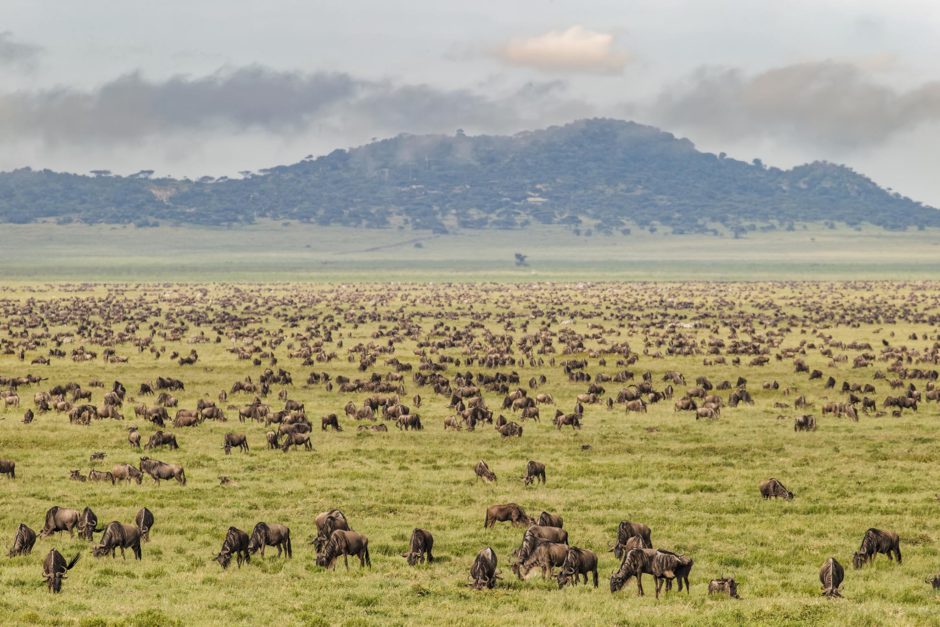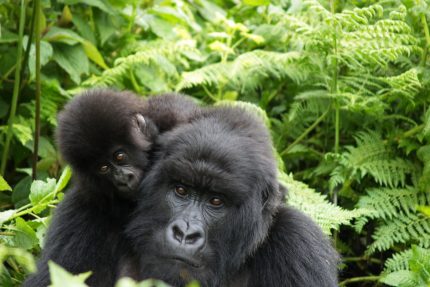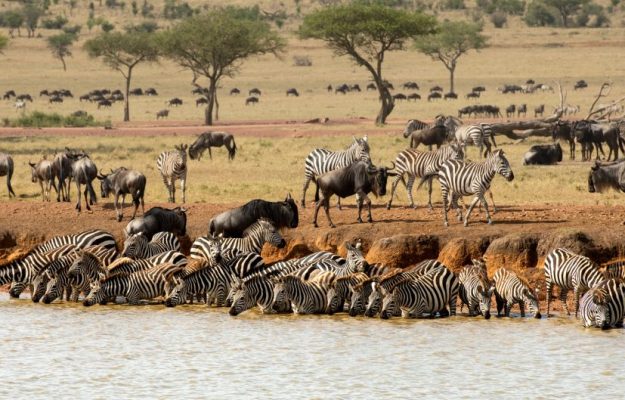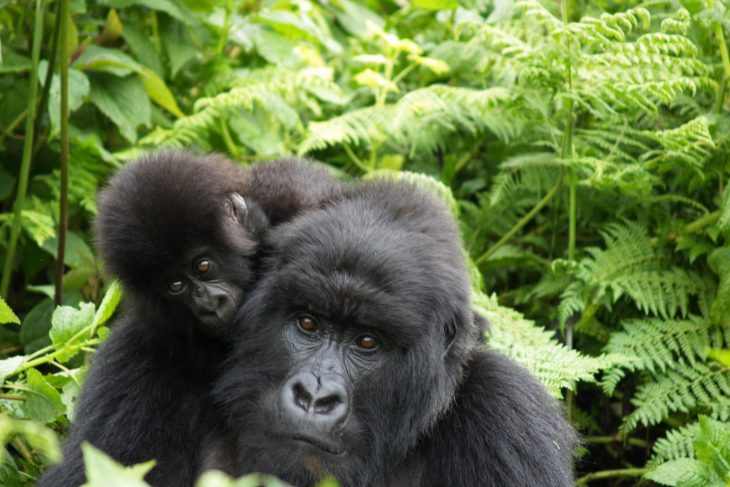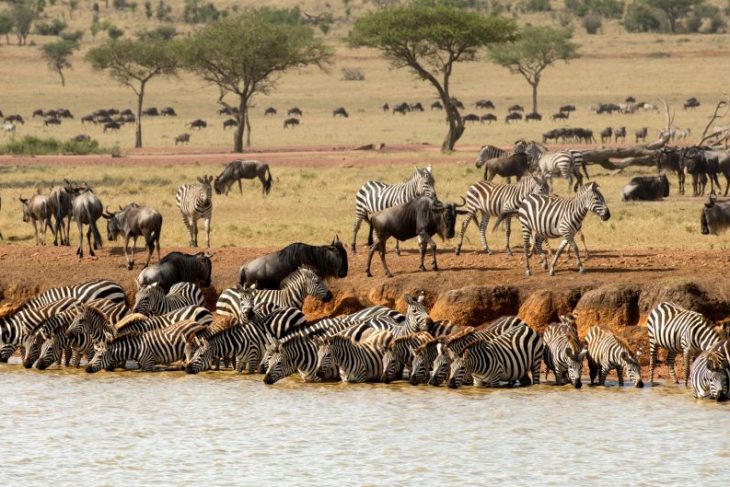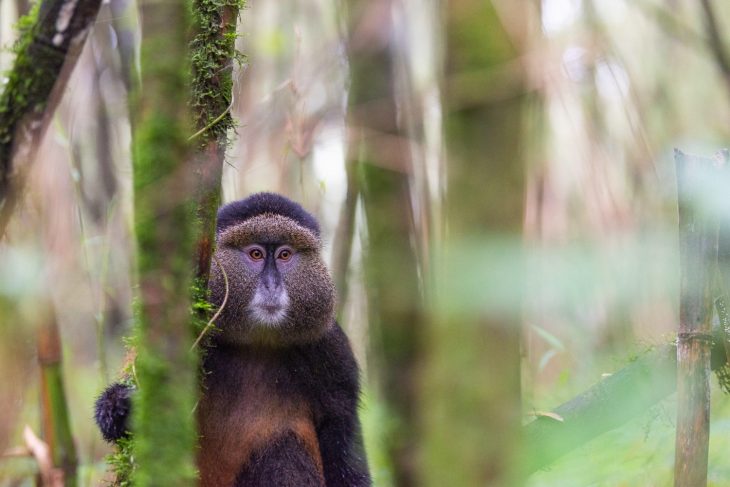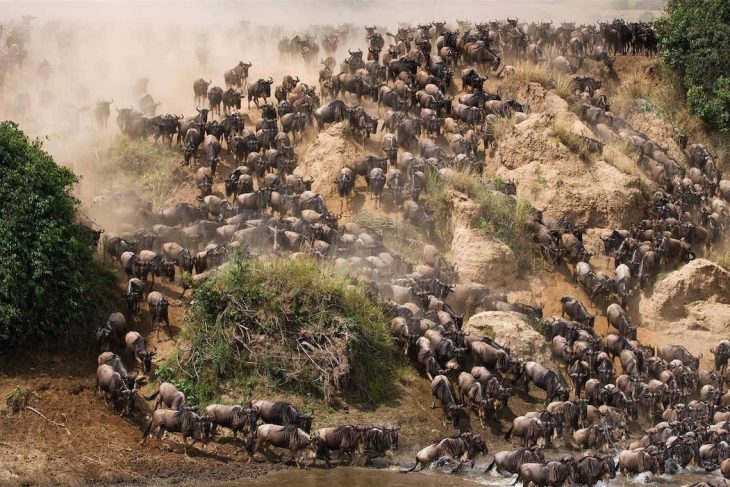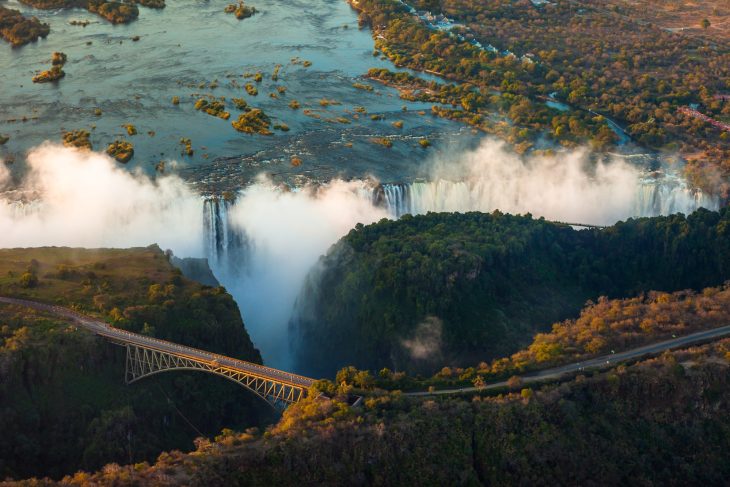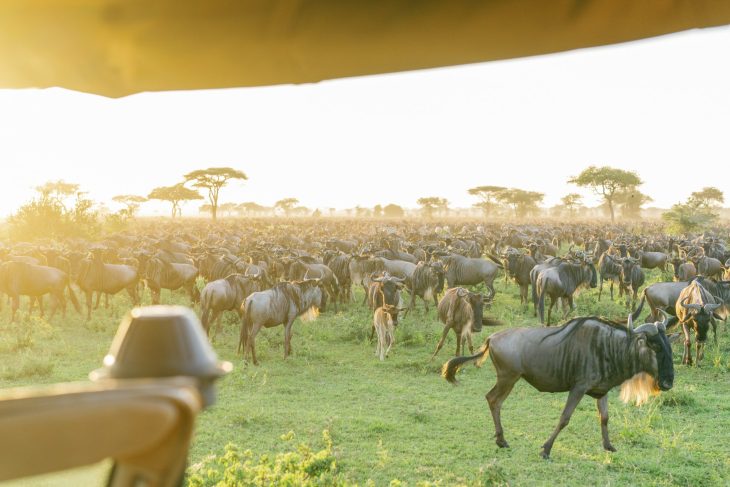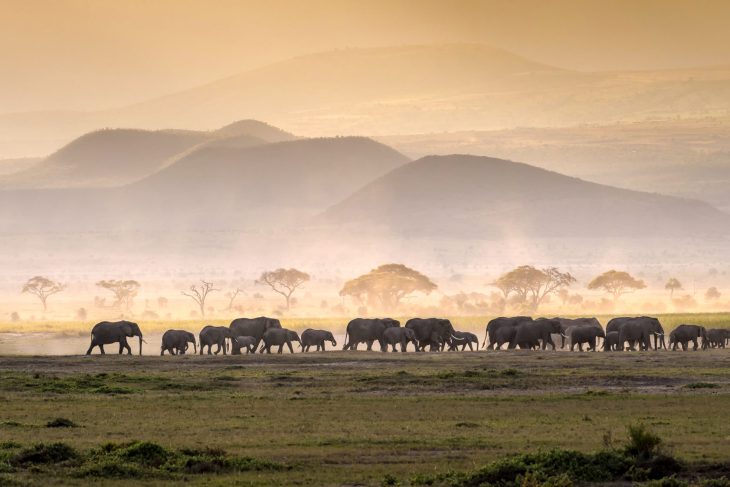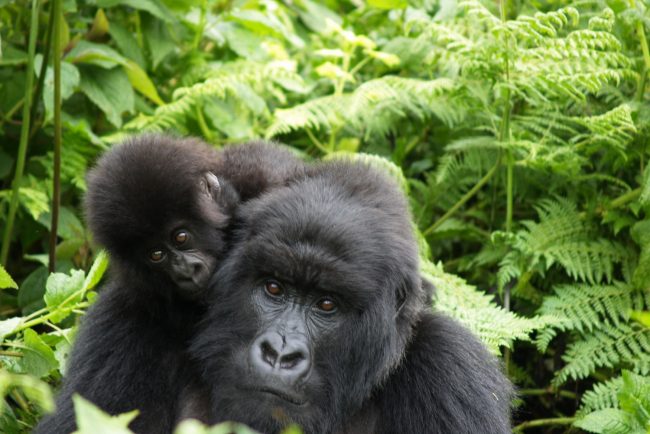
Should I Travel to Rwanda or Uganda to See Gorillas Right Now?
At Rhino Africa, we believe in providing honest, informed, and responsible travel advice. As Africa’s most awarded luxury safari company, we have a deep commitment not just to our guests but to the destinations we work in, the wildlife we strive to protect, and the […]
Rwanda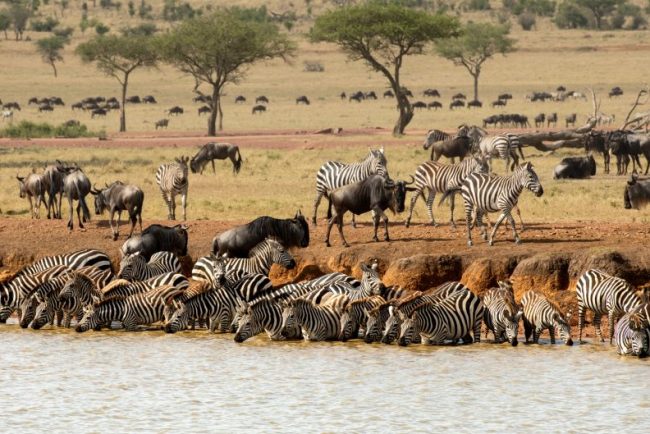
Discover the Serengeti’s Hidden Gems: A Regenerative Safari Experience
Tanzania is synonymous with the mighty Serengeti National Park, home to one of the world’s greatest land migrations comprising a melee of approximately two million blue wildebeest, zebras, and gazelles chasing the rains and greener pastures. Here’s why a Serengeti safari offers a regenerative escape […]
Tanzania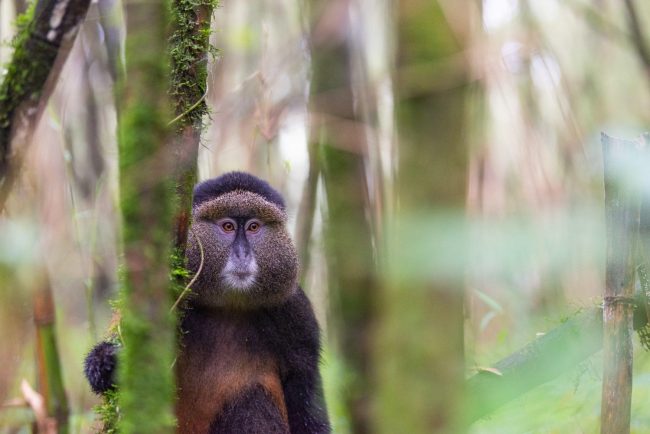
The Art of Shinrin-Yoku in Africa
Have you ever considered experiencing shinrin-yoku in Africa? When people think of Africa, it’s often the golden sweep of the savannah, the iconic silhouette of a baobab tree, or the vibrant buzz of our Mother City that springs to mind. Yet intertwined within our continent’s […]
Rwanda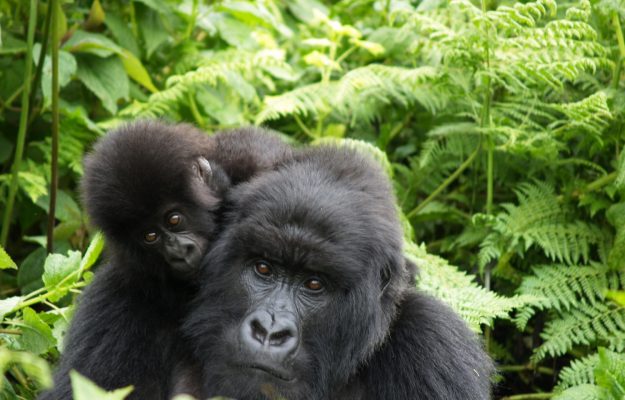


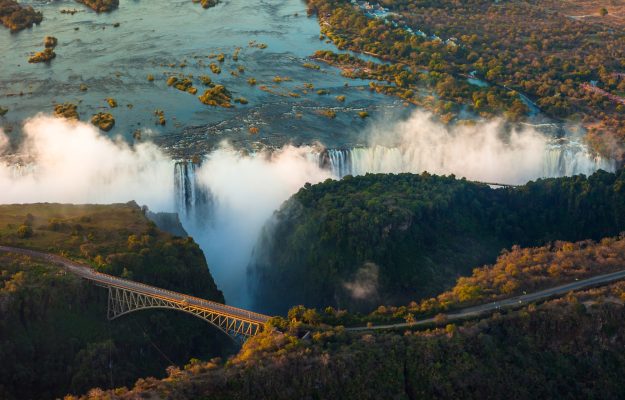
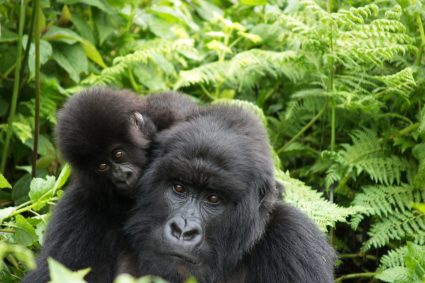
Should I Travel to Rwanda or Uganda to See Gorillas Right Now?
At Rhino Africa, we believe in providing honest, informed, and responsible travel advice. As Africa’s most awarded luxury safari company, we have a deep commitment not just to our guests but to the destinations we work in, the wildlife we strive to protect, and the […]
RwandaAt Rhino Africa, we believe in providing honest, informed, and responsible travel advice. As Africa’s most awarded luxury safari company, we have a deep commitment not just to our guests but to the destinations we work in, the wildlife we strive to protect, and the communities that rely on tourism. The question of whether one should book a gorilla trekking experience in Rwanda or Uganda right now is not a simple one. The situation in the region is complex, evolving, and requires careful consideration, but let’s unpack it thoughtfully.
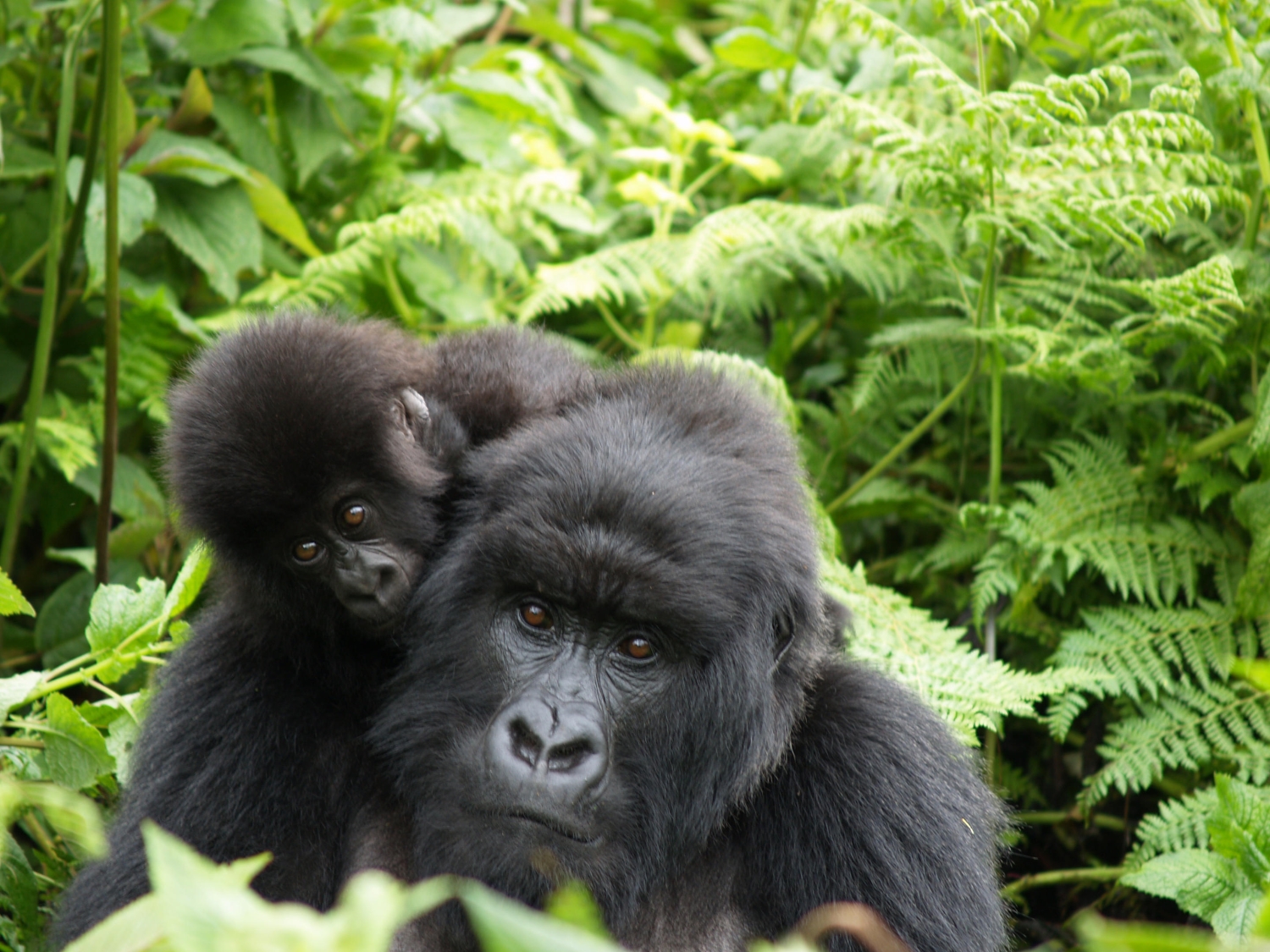
The decision to book a gorilla trekking experience in Rwanda or Uganda requires careful consideration, Image Credit: Singita
Is It Safe to Travel to See the Gorillas?
Despite the ongoing tensions in Goma, in the Democratic Republic of Congo (DRC), it is still safe to visit the gorillas in Rwanda and Uganda. The gorilla trekking regions of Volcanoes National Park in Rwanda and Bwindi Impenetrable Forest in Uganda remain unaffected by the direct conflict.
However, it would be irresponsible to overlook the fact that the situation is volatile and could change at any time. Travel advisories from various governments currently warn against travel to these areas, not because of immediate threats within Rwanda and Uganda but due to the proximity of the conflict in DRC. While travel is not banned, these advisories have significant implications for financial protection, as we’ll explain below.
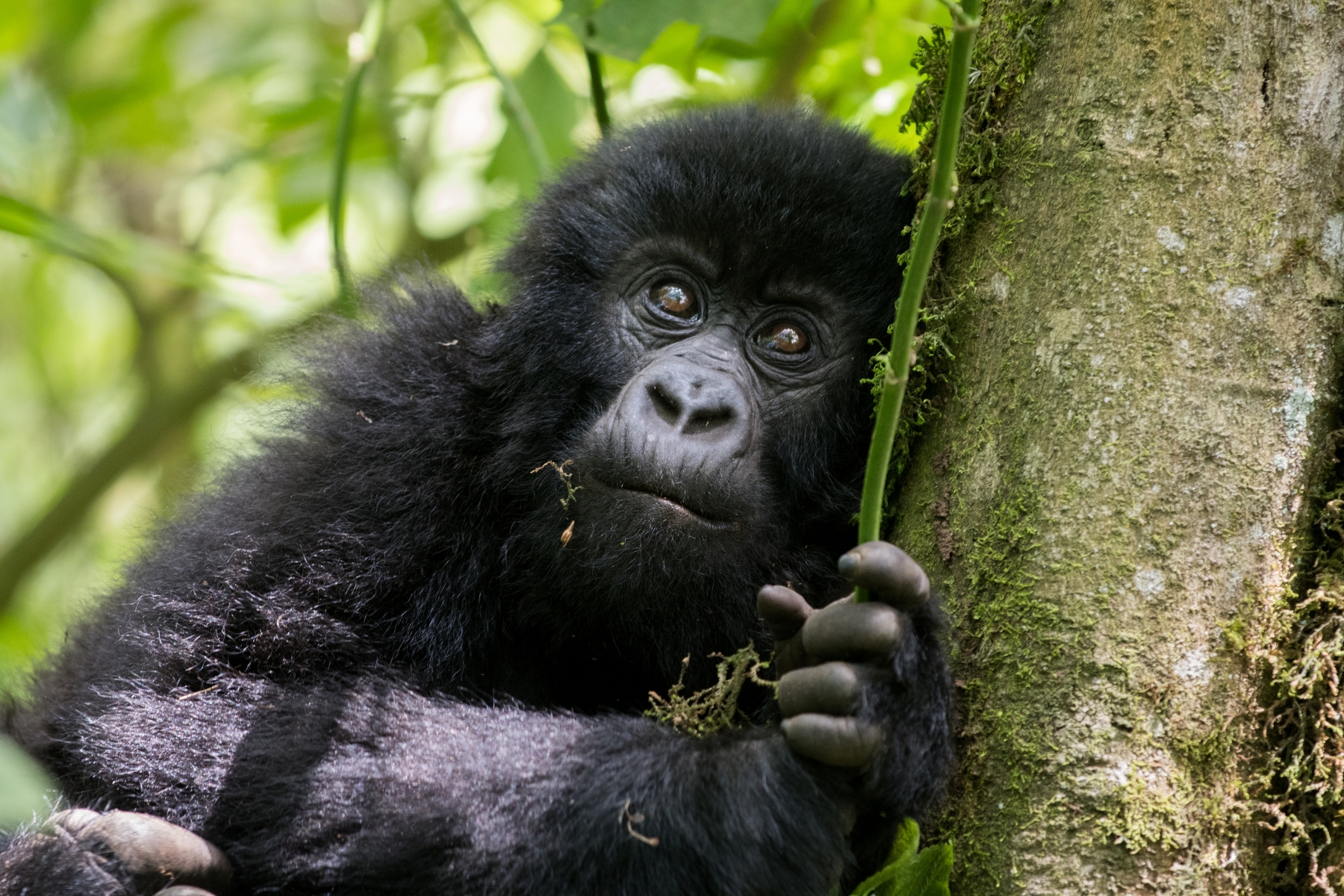
Volcanoes National Park and Uganda’s Bwindi Impenetrable Forest remain safe and unaffected by the conflict
Should You Book Now? The Financial Considerations
At Rhino Africa, we do not believe in boycotting destinations. Tourism is the lifeblood of conservation and local economies, and the consequences of a travel boycott would be devastating to wildlife protection efforts and the communities that depend on visitors. However, we do believe in a cautious and transparent approach.
The Key Issue Guests Must Consider is Financial Risk
1. Travel Warnings & Insurance Limitations
Due to the current travel warnings, travel insurance will not cover you if you need to cancel your trip due to an escalation of the conflict. This means that if you book now and the situation worsens, you may not be able to recover your costs should you elect to cancel.
2. Non-Refundable Deposits & Gorilla Permits
At Rhino Africa, our average lead time from booking a gorilla trek to actual travel is up to six months. To confirm a booking, standard payment terms require a 30% deposit, plus full payment for flights and gorilla permits upfront. These payments are passed directly to accommodations, logistics providers, and conservation authorities, making them effectively non-refundable.
3. Final Payments & Shorter Risk Assessment Windows
The final balance is due 60 days before travel, meaning guests have a shorter window to evaluate risk before committing to the full payment. Unfortunately, unless our suppliers in the region change their payment and cancellation policies, guests must accept that their investment is at risk should the conflict escalate and they elect not to travel.
Tourism sustains conservation and communities – we advocate for caution, not boycotts
The Bigger Picture: The Risk of Mass Cancellations
If the conflict situation deteriorates further, mass cancellations could place significant financial strain on the small, high-end lodges and operators that define this region.
As we saw during COVID-19, even when payment terms are flexible, refunds are not guaranteed because suppliers themselves may lack the liquidity to return funds in the face of widespread cancellations.
More concerning is that two Rwandan operators have already gone insolvent as bookings have declined due to the conflict over the past quarter. If more suppliers face financial distress, guest refunds could become impossible, regardless of cancellation policies.
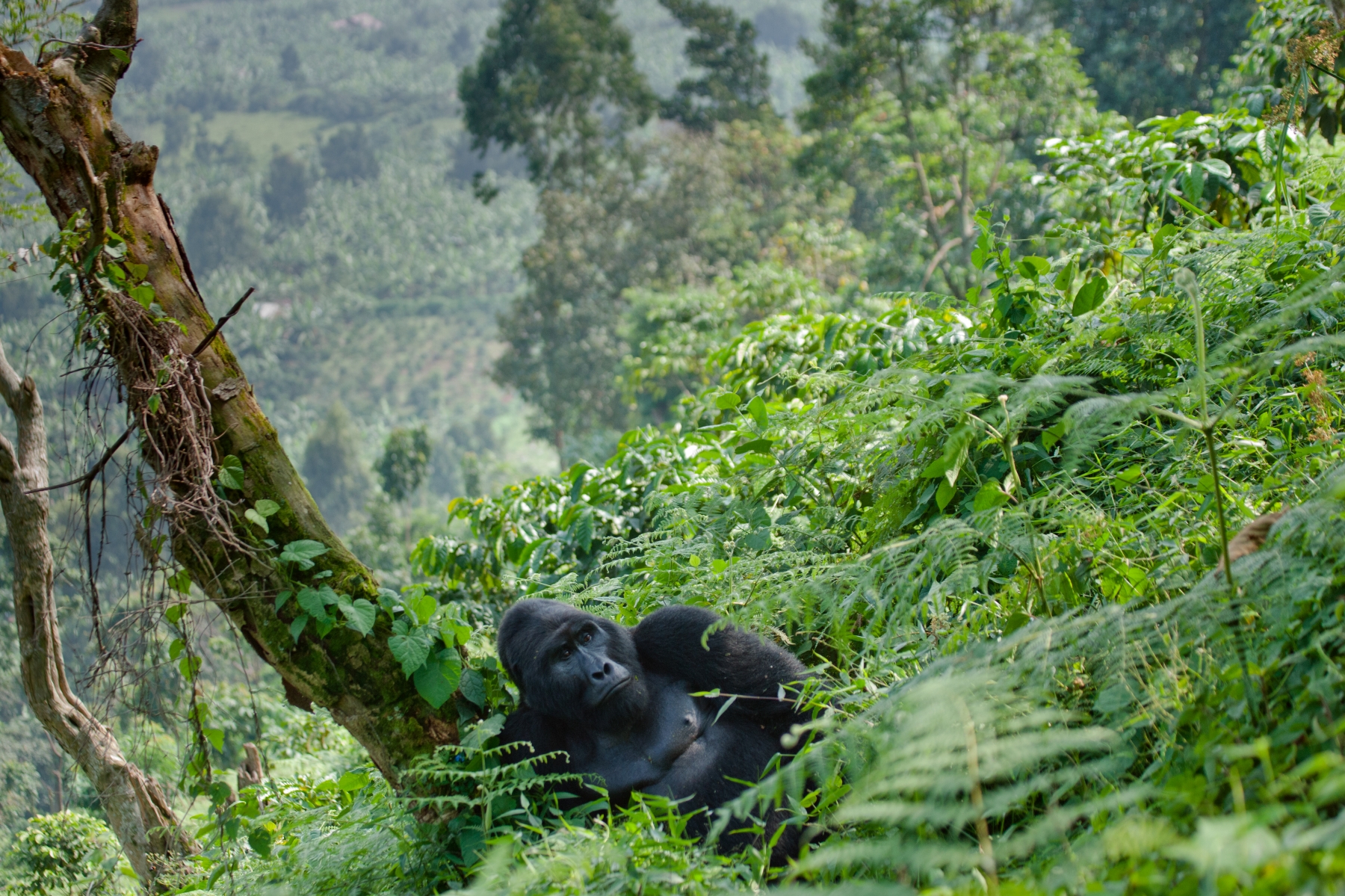
Mass cancellations threaten Rwanda’s gorilla trekking lodges
Rhino Africa’s Approach: Caution with Transparency
We pride ourselves on being more than just a travel company – we are a movement, a champion for conservation, and a company deeply invested in our guests’ experiences and well-being.
We love Rwanda. It is one of the most extraordinary travel destinations on Earth, and seeing the mountain gorillas in the wild is a life-changing experience. We want as many guests as possible to experience its magic. However, our responsibility is to ensure that our guests understand the risks before making a decision.
At this time, we do not feel comfortable recommending new bookings for gorilla trekking in Rwanda or Uganda unless suppliers adjust their terms to protect guests financially, given the traditionally long lead times. Until that happens, our approach remains cautious and transparent, not because we don’t believe in the destination but because we believe in putting our guests first.
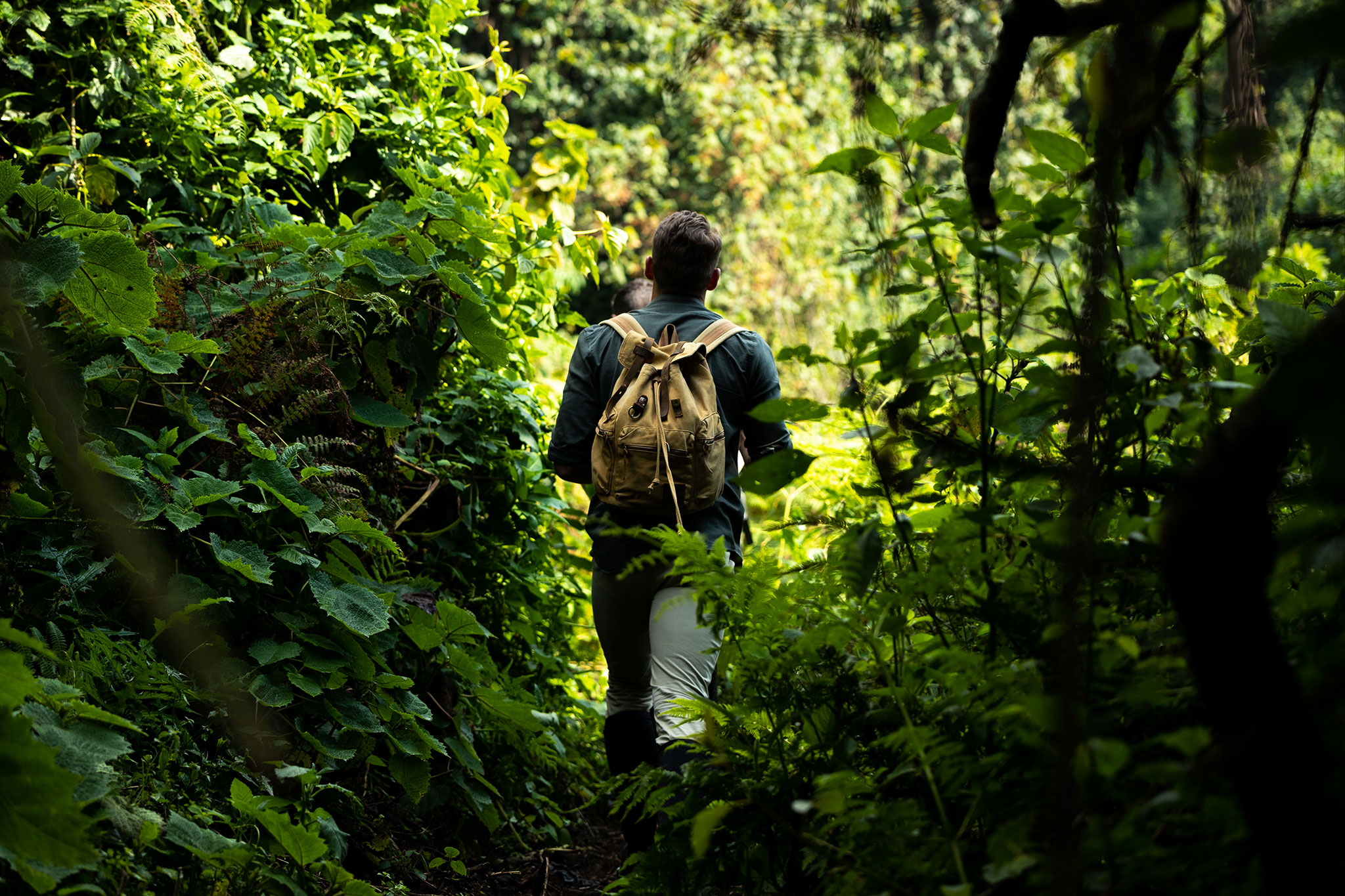
We’re more than a travel company – we’re a movement for conservation and unforgettable experiences
Beyond Gorillas: Rwanda Is More Than the “Gorilla Express”
While gorilla trekking is the primary reason many guests visit Rwanda, it’s worth noting that the country offers far more. There are other incredible regions to explore that are well away from the conflict-affected areas, including:
-
Kigali – Rwanda’s capital is one of the cleanest, safest, and most dynamic cities in Africa. Its rich history, world-class museums, and vibrant food scene make it a must-visit.
-
Nyungwe Forest – The source of the Nile and a pristine rainforest offering chimpanzee trekking, canopy walks, and breathtaking biodiversity.
-
Akagera National Park – A stunning savannah park with the Big 5 and spectacular landscapes, completely removed from conflict risks. One of Africa’s oldest National Parks, Akagera is the ultimate birder’s paradise.
For those who want to experience Rwanda’s beauty without the risks of gorilla trekking right now, these areas provide incredible alternative travel opportunities.
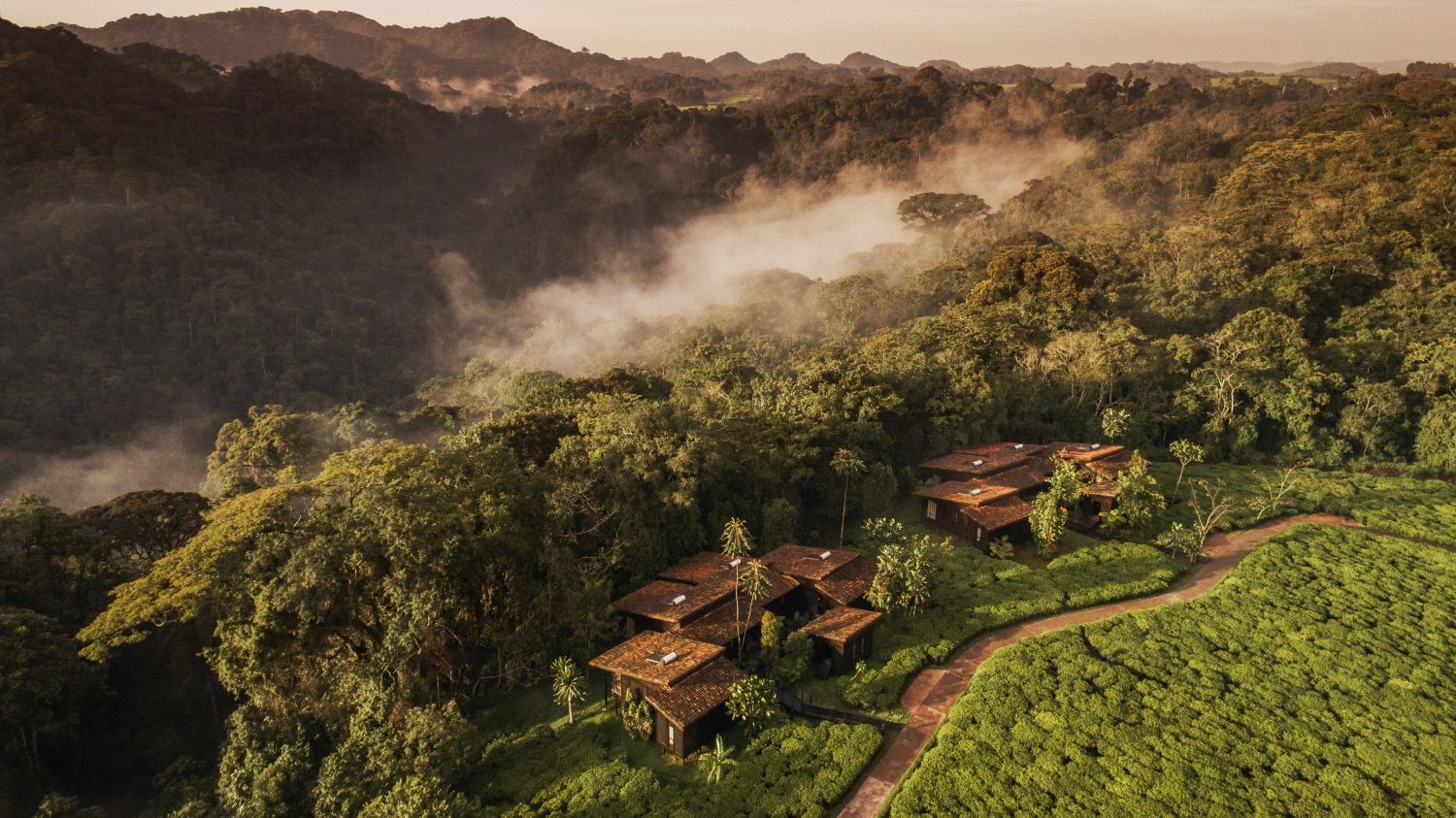
Experience Africa on a deeply personal level, from the wild depths of Nyungwe Forest, Image Credit: One&Only
The Rhino Africa Difference
We are not in business to make quick sales, we are in the business of crafting life-changing experiences while ensuring our guests are fully informed and protected. We are a company built on passion, integrity, and deep connections to the continent we call home. Our role is not just to sell safaris but to be trusted advisors to our guests.
If you’re considering a journey to Africa, we would love to connect you with one of our Travel Experts to help you navigate the complexities of travel today and plan the African holiday of a lifetime, with confidence and peace of mind. Let’s talk. Let’s plan. Let’s dream Africa.
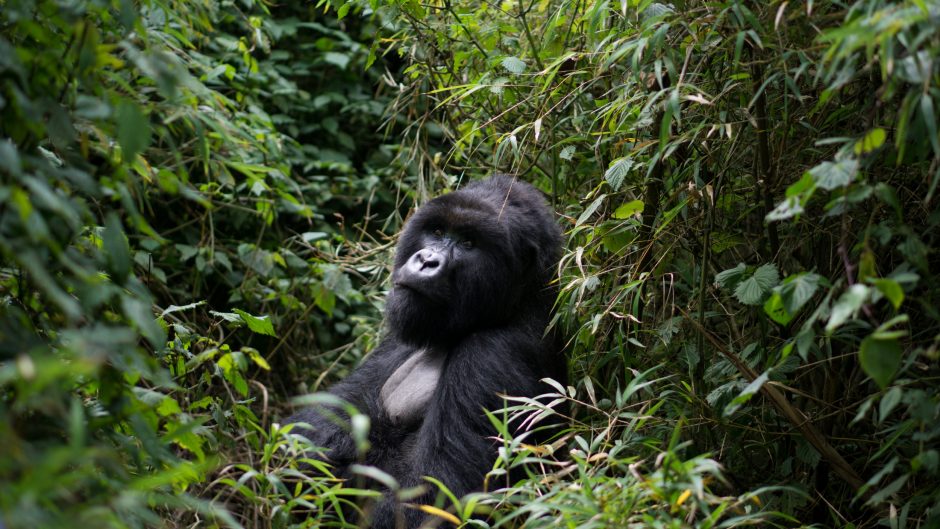

Discover the Serengeti’s Hidden Gems: A Regenerative Safari Experience
Tanzania is synonymous with the mighty Serengeti National Park, home to one of the world’s greatest land migrations comprising a melee of approximately two million blue wildebeest, zebras, and gazelles chasing the rains and greener pastures. Here’s why a Serengeti safari offers a regenerative escape […]
TanzaniaTanzania is synonymous with the mighty Serengeti National Park, home to one of the world’s greatest land migrations comprising a melee of approximately two million blue wildebeest, zebras, and gazelles chasing the rains and greener pastures. Here’s why a Serengeti safari offers a regenerative escape in Africa.
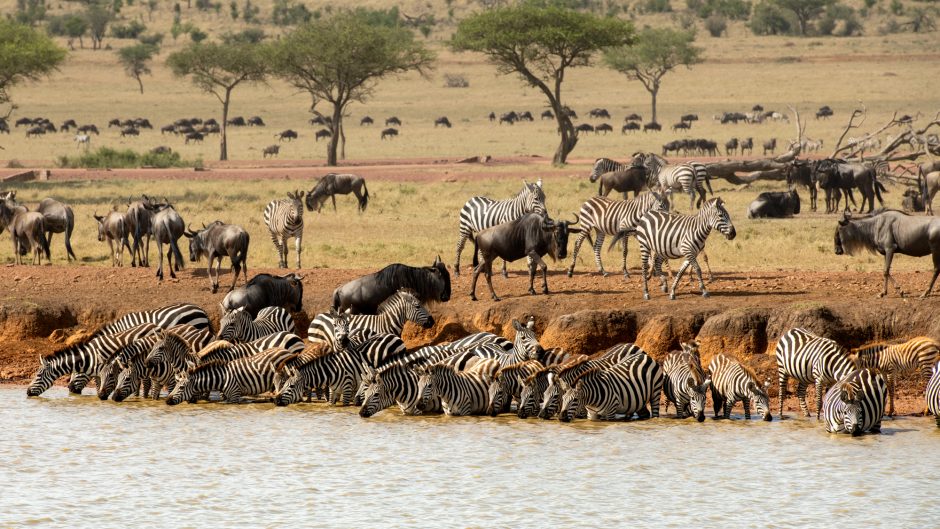
Thousands of wildebeest, zebra, and gazelle on their epic Serengeti migration, Image Credit: Singita
The Serengeti Migration
As the transitional October month rolls around, the herbivores get antsy. Instinctually, they’re getting restless and ready to move southward in search of pastures for their lambs in the southern Ndutu plains of the Serengeti National Park, the intended destination of the summer season.
A wall of hooves and heels crashes across the Kenyan border from the Maasai Mara National Reserve into Tanzania’s Serengeti National Park.
The Mara River Crossing
These gutsy antelope, driven by raw intuition and burning thirst, run the gauntlet of crossing the Mara River and its tributaries to their seasonal pasturelands. In the shallows of the ribbons of water, giant Nile crocodiles lie in wait for their unsuspecting prey to put a hoof wrong.
Meanwhile, on the banks, there are stealthy, camouflaged big cats of the savannah flanking the riverine landscape. Lion, leopard, and cheetah shadow the vast column of hooves, horns, and hides, picking off the weak and injured. They, in turn, are followed closely by nature’s cleanup crew – jackals, hyenas, vultures, and marabou storks who make a meal out of slim pickings after the kingly predators have gorged themselves.
Life is characterised by alertness and seizing opportunities. Fascinating stories unfold in the margins of this remarkable ecosystem as on the main stage of the short grass savannah plains.
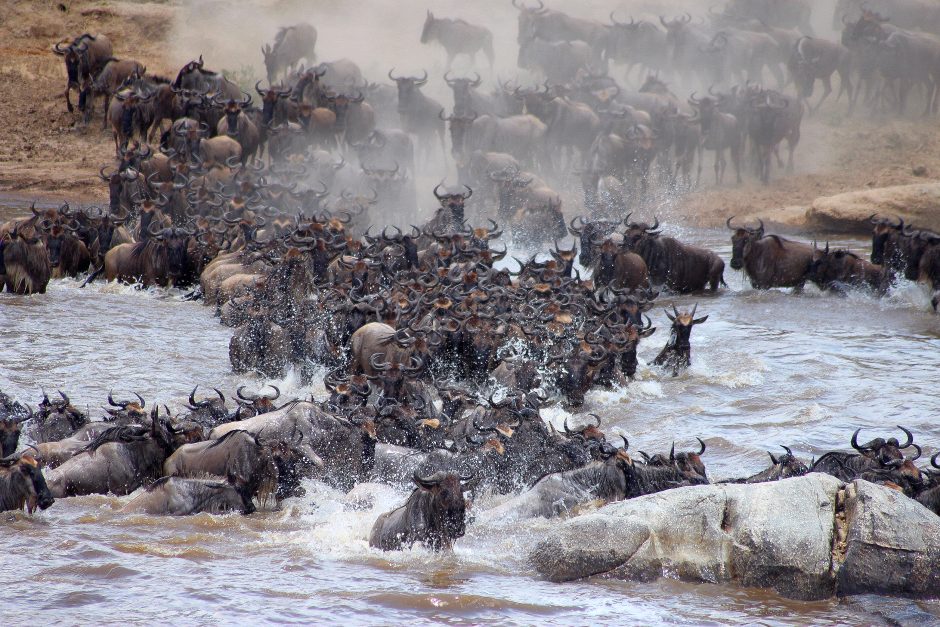
It’s a giant leap of faith as wildebeest brave the Mara River, with predators lying in wait, Image Credit: Mara Bushtops Camp
Serengeti Northern Safari Circuit
This typical scene unfolds in the northern circuit of Tanzania’s safari circuit: Serengeti National Park. Usually combined with Lake Manyara, Ngorongoro National Park, and Tarangire National Park. The latter park is best known for its dry-season migration, which sees many elephants.
Serengeti Southern Safari Circuit
A trail less trodden is the southern safari circuit featuring vast parks with more seclusion: Nyerere National Park (previously Selous National Park) is excellent for adventurous people keen on walking, camping, and boating.
Ruaha National Park is one of Tanzania’s most prominent conservation parks. The Great Ruaha River is essential for wildlife and is part of a hydroelectric power scheme. Access to rare encounters with chimpanzees and Tanzania’s endemic species are standout aspects of this seasonal circuit.
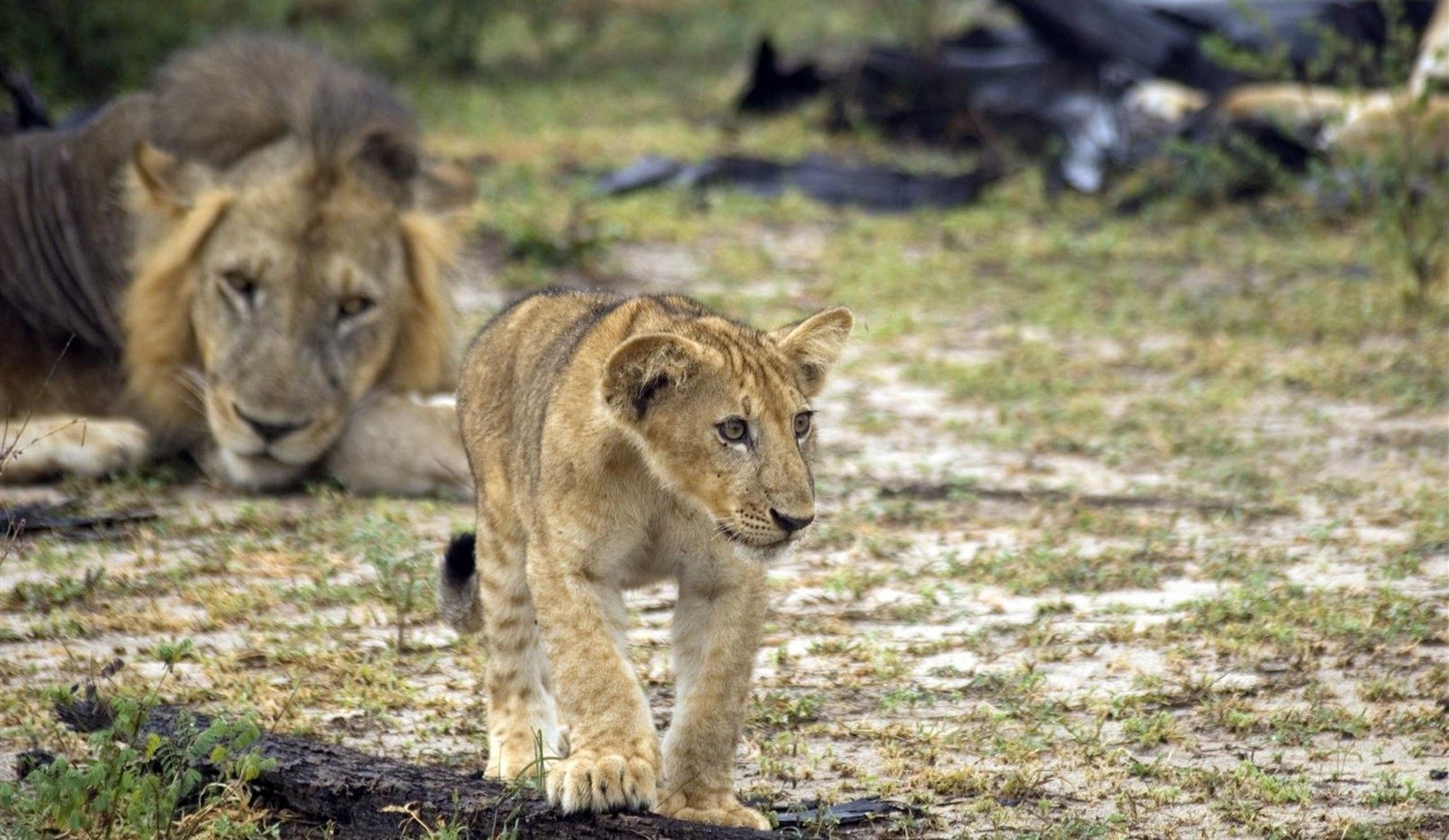
Experience majestic predators, big and small, in Ruaha National Park
Entry Points and Extensions
Arusha or Kilimanjaro mark your entry point in the safari circuit. If you’re extending to include Zanzibar, you’d likely take a bush prop plane and connect in Dar es Salaam for your beach holiday.
You can combine a Great Migration safari with gorilla trekking in Rwanda in the Serengeti Grumeti Reserves. Several exceptional lodges and camps offer this experience, and for those seeking a minimal environmental impact, mobile camping close to nature is an excellent choice.
How Modern Travellers Define Luxury
Luxury is a personal experience, varying from one individual to another. For some, it might mean the finest linens and attentive service. By contrast, it signifies complete privacy and exclusivity for others, such as having an entire lodge or safari vehicle to oneself.
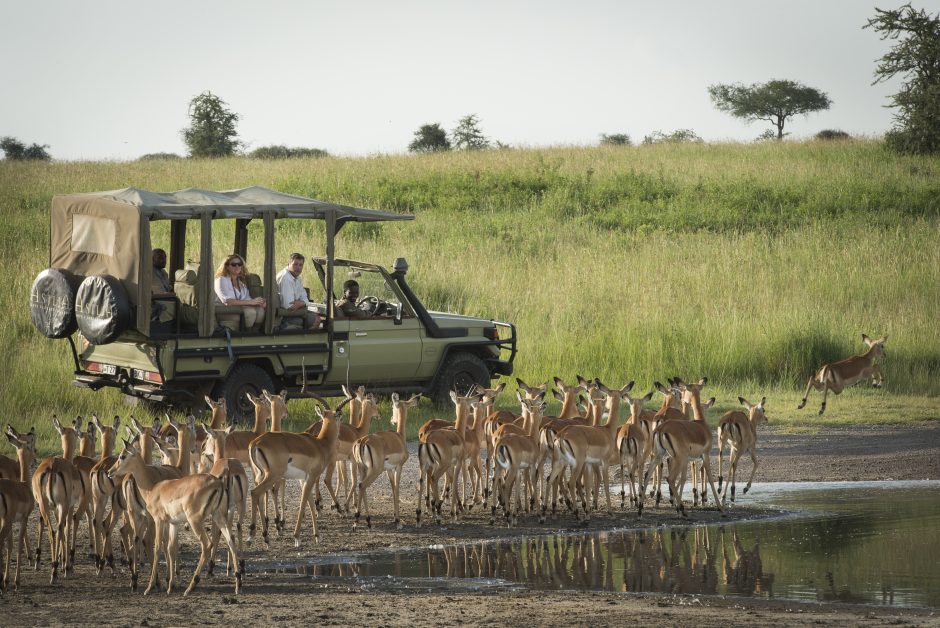
To us, luxury means a front-row seat to nature’s wonders, Image Credit: Dunia
Embracing Regenerative Safaris
The concept of regenerative safaris is gaining popularity. Embraced by some luxury safari outfitters, giving back more than what you take when visiting a country is becoming a mainstream concept. An outstanding, impactful safari should satisfy conservation measures, preserve the local culture, care for the local community’s well-being, and ensure sound business practices and commercial prosperity.
Singita Grumeti
Singita Grumeti focuses on restoring and protecting the Serengeti ecosystem through the Grumeti Fund.
- Wildlife Conservation: Efforts to combat poaching and restore wildlife populations, including reintroducing critically endangered species like the Eastern Black Rhino
- Community Development: Programs that support local communities through education, healthcare, and sustainable agriculture
- Environmental Sustainability: Projects aimed at habitat restoration, such as controlling invasive species and managing wildfires
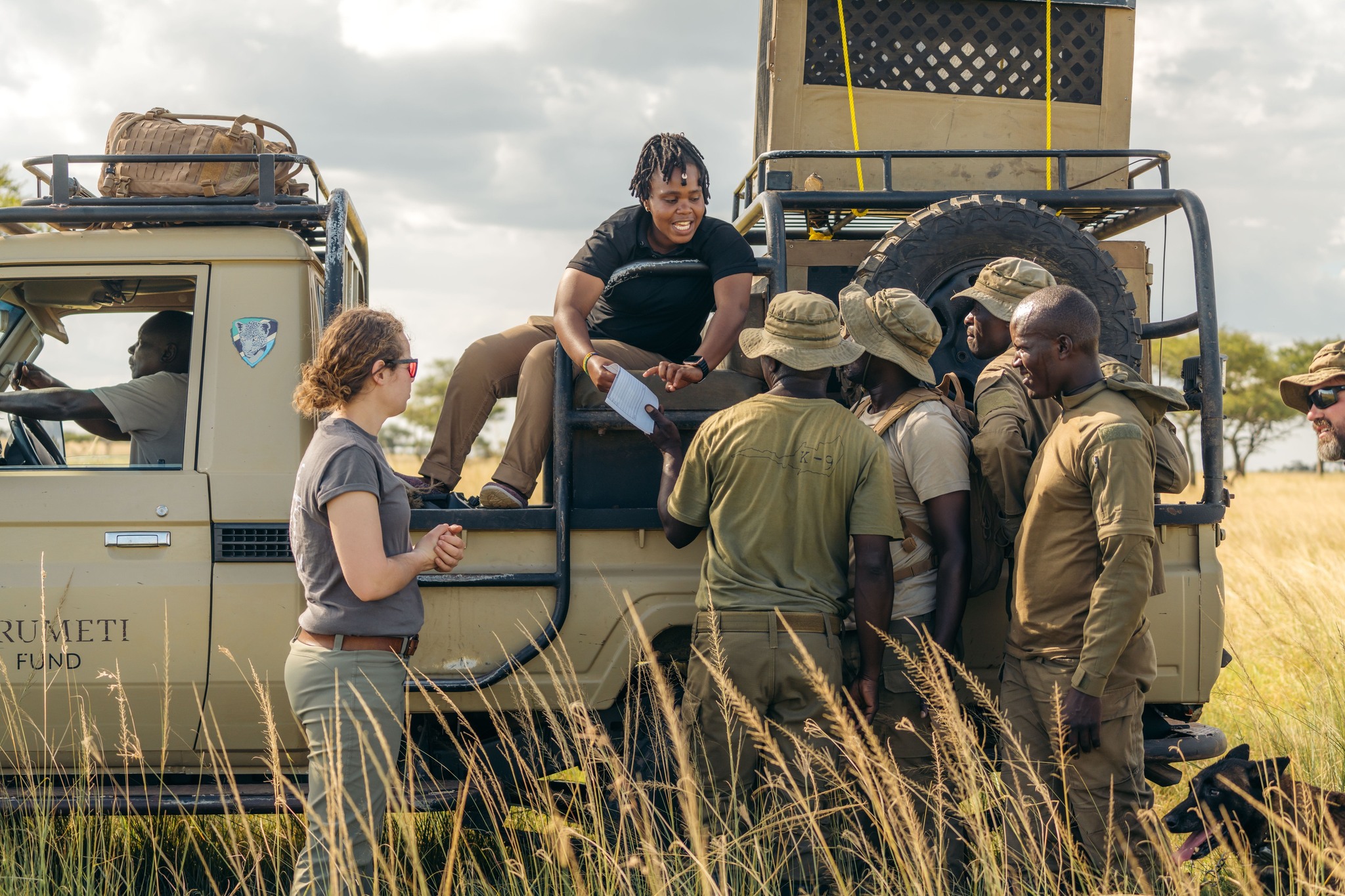
The Grumeti Fund team in action, restoring and protecting the Serengeti, Image Credit: Grumeti Fund
Cherero Camp
Cherero Camp, which operates in the Musabi Plains between Seronera and the Grumeti Reserves, contributes positively to the environment and the local community.
- Eco-friendly Design: Cherero Camp is built without permanent structures, ensuring a light environmental footprint
- Community Empowerment: The camp focuses on empowering women and creating community-based change, providing opportunities for local women to take on leadership roles
- Sustainable Tourism: Guests actively partake in experiences that inform them about the importance of conservation and sustainable practices during their stay
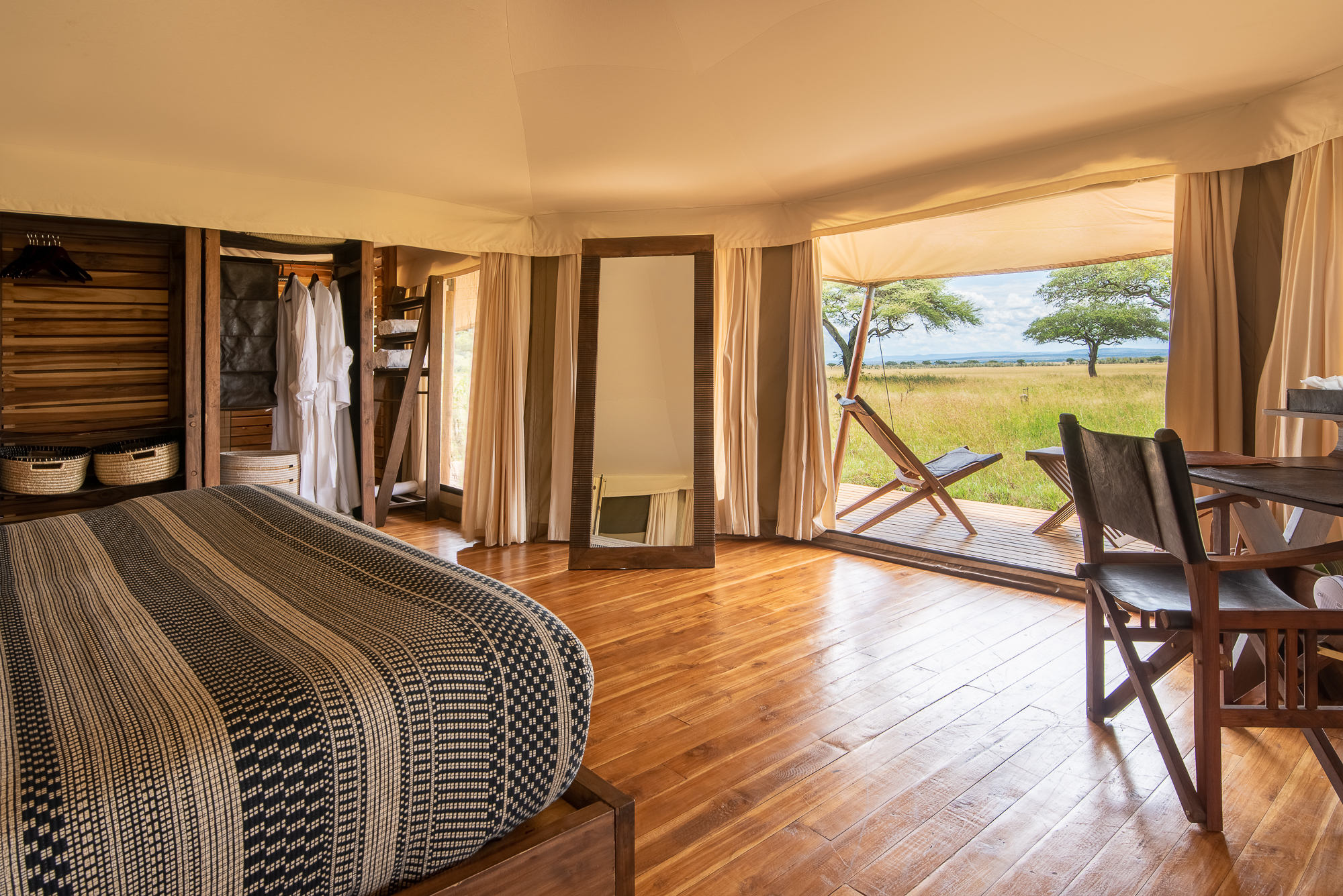
Eco-friendly, empowering, and sustainable living in the Serengeti, Image Credit: Kantabile Afrika
Nomad Safaris
Operating in the Serengeti National Park, integral to Nomad Safaris‘ purpose is creating positive impacts through their safaris.
- Community Support: Initiatives that provide medical outreach, education, and support for local suppliers
- Conservation Efforts: Focus on preserving wildlife and natural habitats through sustainable tourism practices
- Cultural Preservation: Engaging with local communities to protect and celebrate their cultural heritage
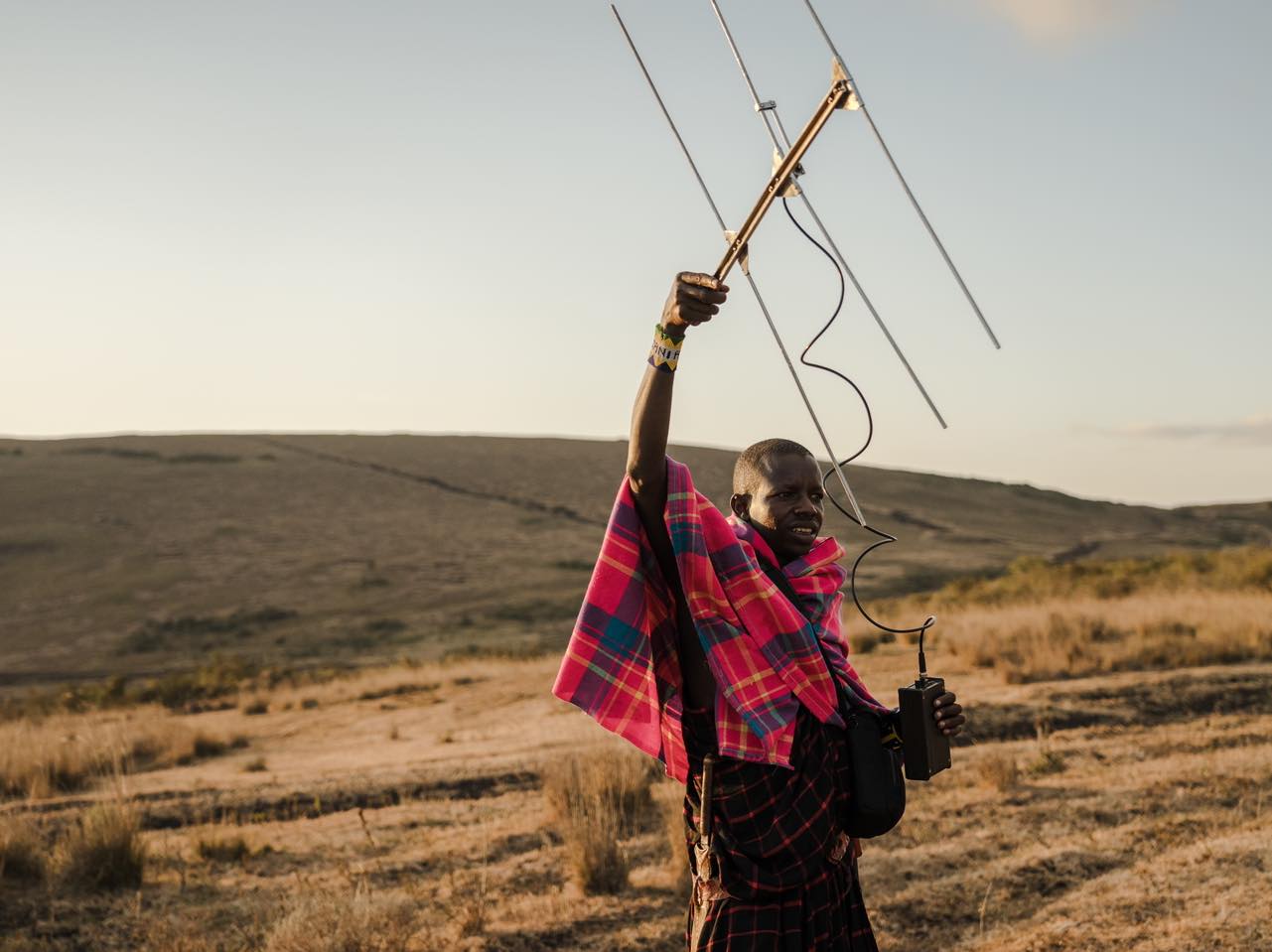
Supporting communities goes hand-in-hand with conserving wildlife in the Serengeti, Image Credit: Nomad Tanzania
The Impact of Regenerative Safaris
These regenerative safaris offer unique opportunities to commune with nature while your tourism spending contributes to the Serengeti’s and its communities’ long-term health and sustainability.
Conscious Travel Choices
When visiting such a delicate ecosystem, it’s essential to consider the impact of your presence on the environment, local communities, the visitor economy, and wildlife.
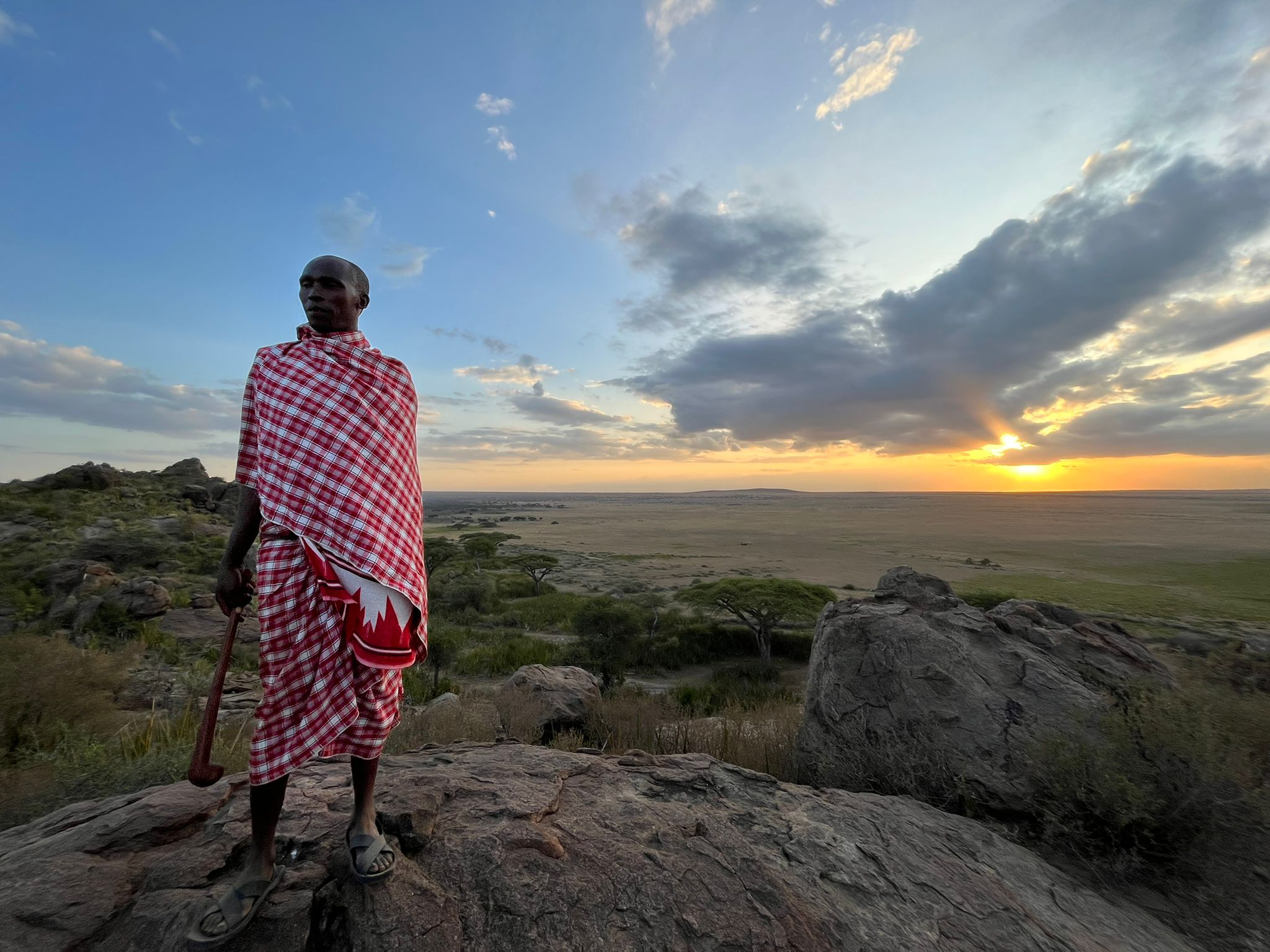
Travel consciously to protect the Serengeti’s delicate ecosystem and its communities, Image Credit: Sarah Delforge
Pointers for Achieving a Regenerative Travel Mindset
Here’s what to consider when you want to adopt a regenerative travel mindset.
Minimum Three-Night Stay
To fully immerse yourself in the experience and minimise your environmental impact, consider staying for at least three nights. Doing so lets you appreciate the wildlife and contribute significantly to the local economy, minimising the housekeeping footprint.
For example, a short stay of one or two nights impacts the ecology more because of changing linen, washing, water, and energy costs instead of a changeover every three nights.
Minimise Economic Leakage
Consider your booking journey to ensure a higher percentage of your spending benefits local communities. Booking with an agent with a physical presence in Africa helps reduce economic leakage and supports sustainable development.
Give Responsibly
Engage with and contribute to the sustainability projects offered by the camp or safari outfit. Whether contributing financially, participating in conservation efforts, supporting community initiatives, or donating to local environmental programs, ensure you do so through the safari stakeholders’ vetted channels in line with their ethos.
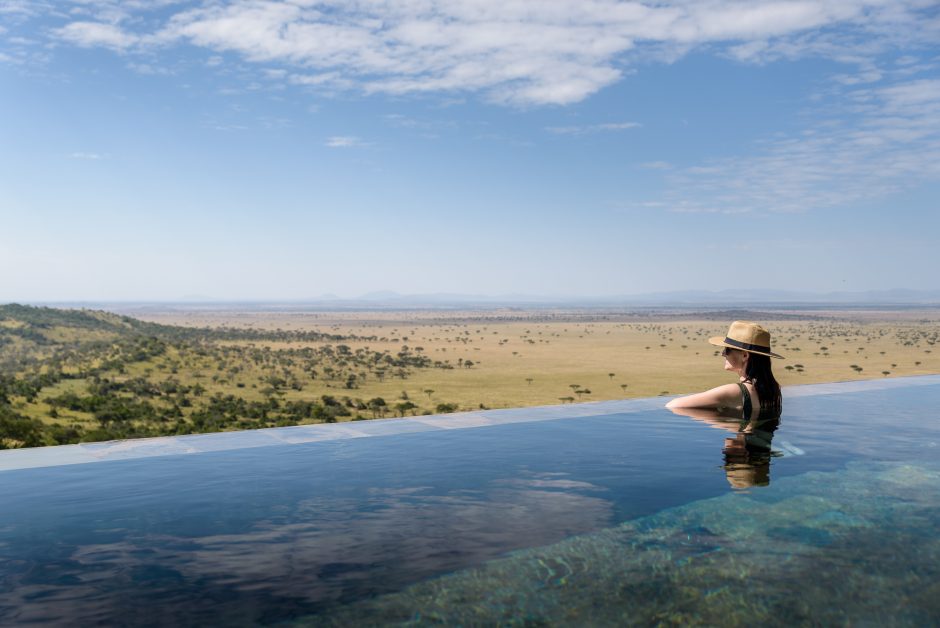
Experience the beauty of a Serengeti safari with a regenerative travel mindset, Image Credit: Singita
Embrace Africa’s Wild Spirit
In the Serengeti, make every moment count on safari. In the vast expanse of the world’s great grassland plains lies an allegory for living a meaningful life rather than witnessing nature’s uncompromising stance first-hand. It is an epic produced by Mother Nature, and as the credits roll, the takeaway message is profound: make the most of every breath.
Your travel can have a positive impact, and it’s all about how you approach it. Let Rhino Africa plan your impactful journey to this remarkable continent.
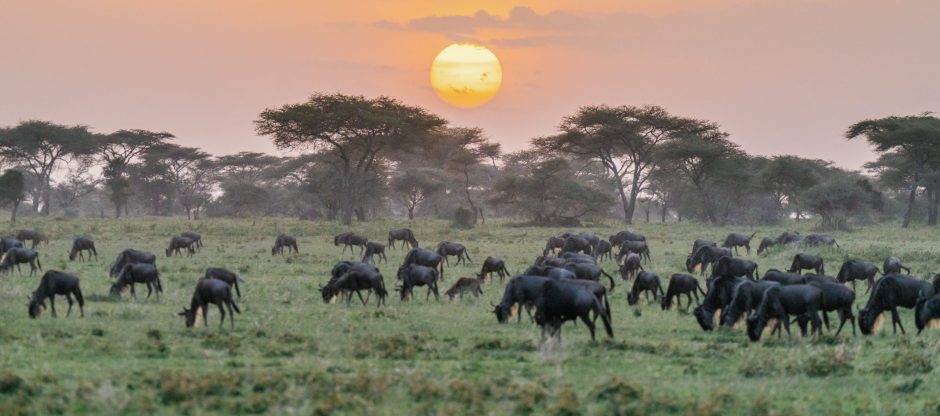

The Art of Shinrin-Yoku in Africa
Have you ever considered experiencing shinrin-yoku in Africa? When people think of Africa, it’s often the golden sweep of the savannah, the iconic silhouette of a baobab tree, or the vibrant buzz of our Mother City that springs to mind. Yet intertwined within our continent’s […]
RwandaHave you ever considered experiencing shinrin-yoku in Africa? When people think of Africa, it’s often the golden sweep of the savannah, the iconic silhouette of a baobab tree, or the vibrant buzz of our Mother City that springs to mind. Yet intertwined within our continent’s natural diversity lies something somewhat lesser-known – verdant, tree-filled landscapes that invite you into their quiet embrace. These forested sanctuaries are perfect for shinrin–yoku (also known as forest bathing), a practice rooted in slowing down, connecting deeply, and discovering the magic of being tucked beneath a blanket of leafy branches.
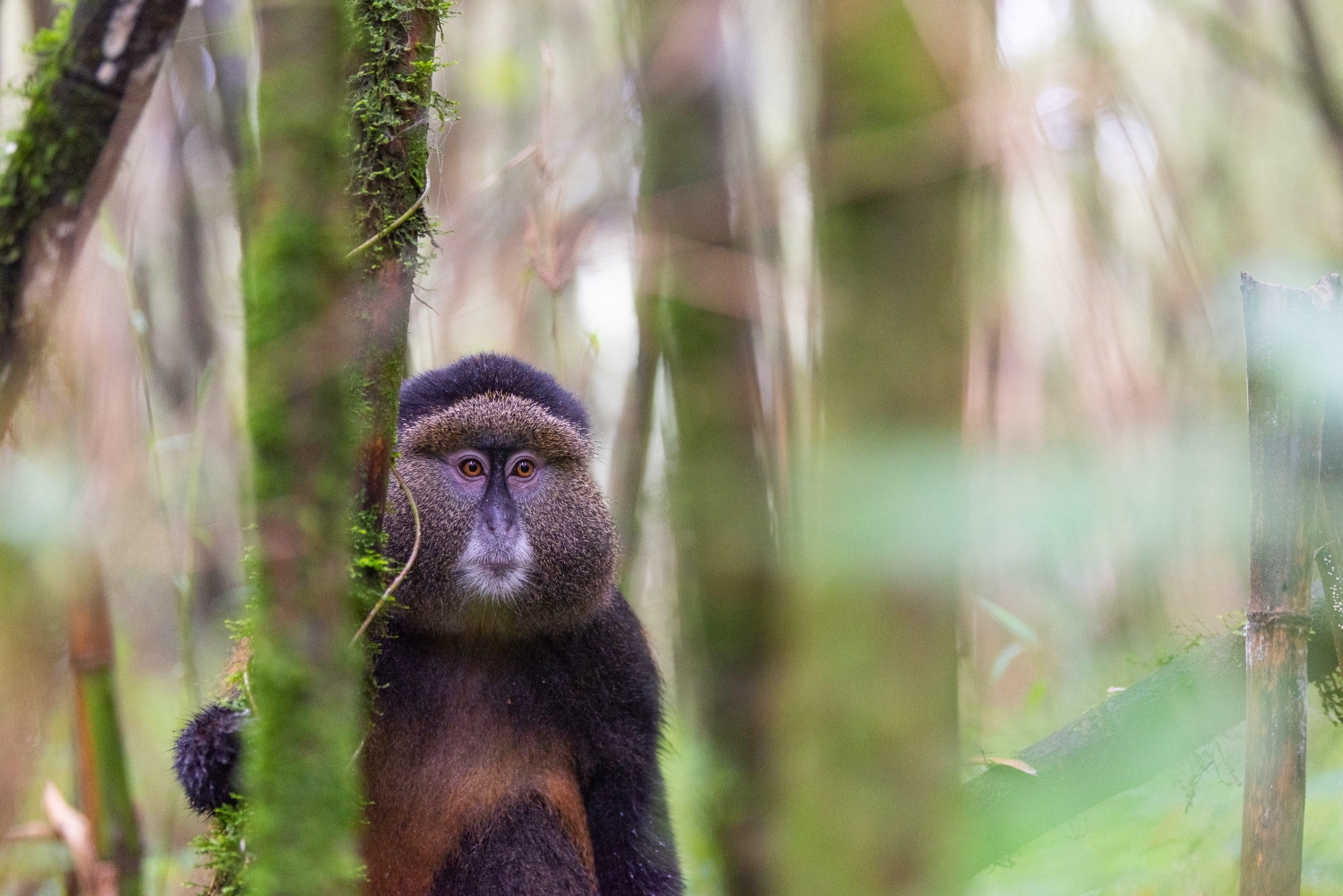
Forest bathing is a grounding activity rooted in the Japanese practice of shinrin-yoku, Image Credit: Wilderness Destinations
Shinrin-Yoku: A Return to the Basics
Forest bathing is all about immersion. Originating in Japan, shinrin-yoku encourages people to step into the woods and let nature do the work. The air, rich with the subtle scent of damp bark and the freshness of leaves, slows the breath. The soft crunch of twigs underfoot pulls attention to the present. Even the way sunlight streams through the branches draws the eye and calms the mind.
The purity of forest bathing holds a power that feels almost instinctive. Modern life, with its endless emails and buzzing notifications, often pushes people to the edge of exhaustion. Stepping into a forest resets the balance. Shinrin-yoku in Africa is a sensory reset – sights, sounds, and scents working together to soothe an overstimulated mind.
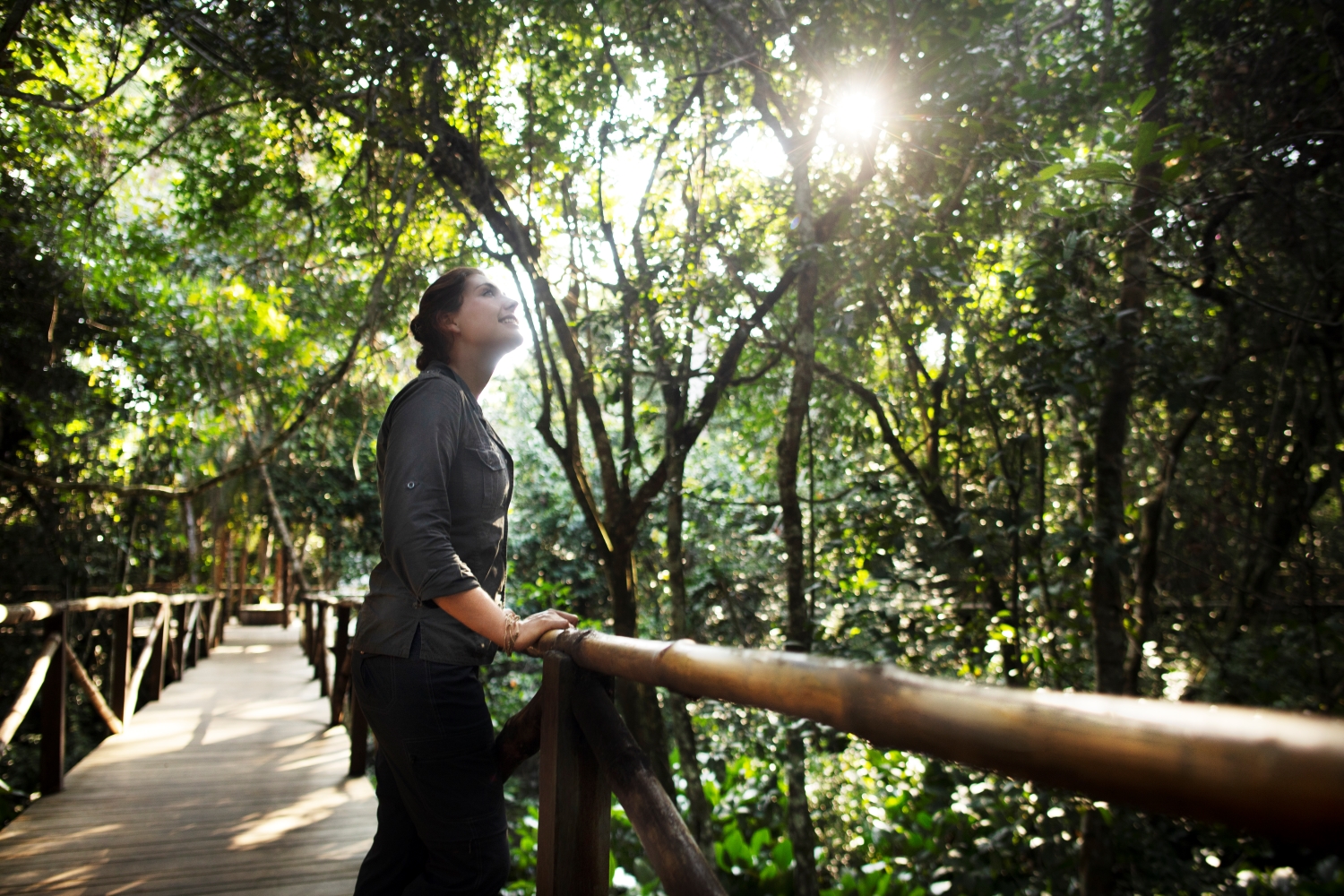
Forest bathing is about being so keenly aware of the beauty of the world around you
Africa: The Unexpected Sanctuary
For those seeking to experience forest bathing in its purest form, Africa offers the perfect setting. Its forests, often overshadowed by the continent’s more well-known landscapes, deliver something surprising: vast green spaces alive with life, offering peace to those who seek it. Here, the trees are guardians of the ancient, their branches stretching toward the sky like arms extended in welcome.

Experience Africa on a deeply personal level from the wild depths of Nyungwe Forest, Image Credit: One&Only
Destinations like Rwanda and the Republic of Congo unveil fairytale rainforests, where misty canopies and the distant calls of wildlife create a mystical atmosphere. Madagascar enchants with its unique biodiversity, while South Africa provides diverse wooded escapes – and this is merely the tip of the tallest tree!
What makes shinrin-yoku in Africa so special is its contrast. One doesn’t typically expect lush greenery in a land synonymous with open plains and wild game. But Africa surprises. Its tree-laden landscapes are as diverse as its cultures, offering spaces where the quiet hum of nature can surround travellers.
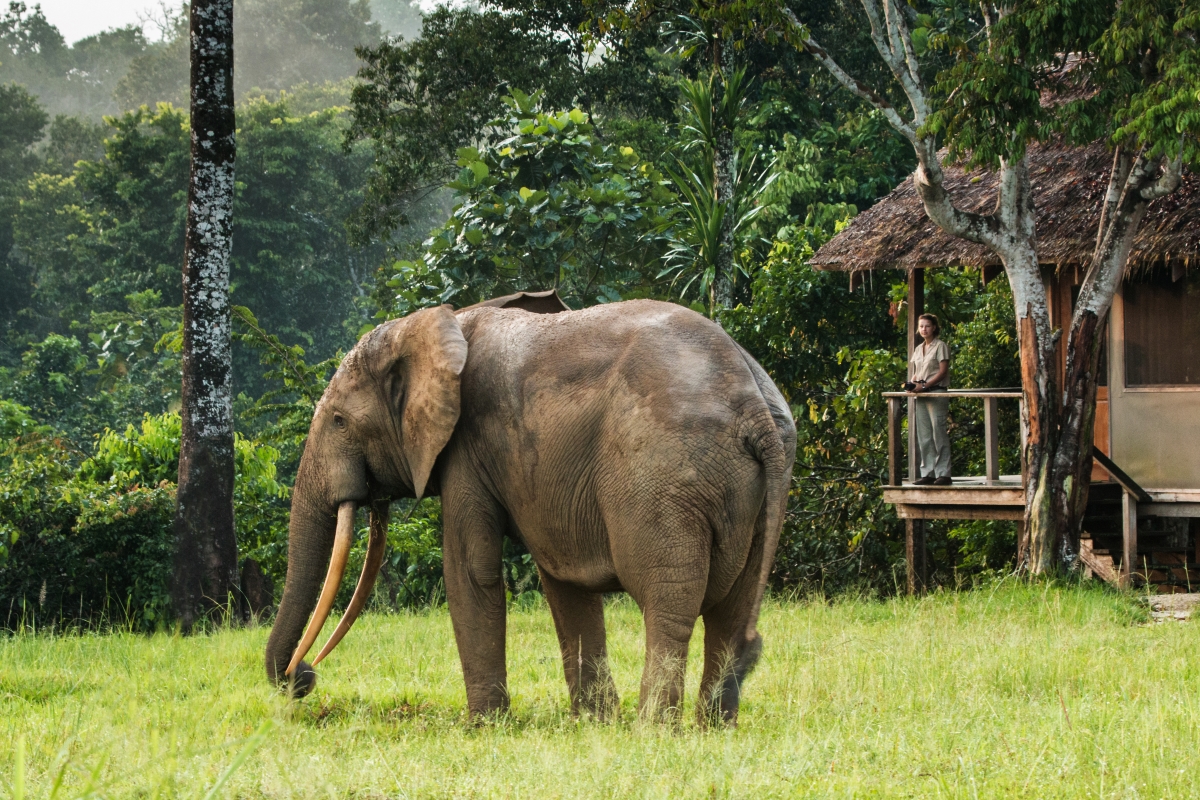
Apart from its gorillas, the Congo is home to Central Africa’s largest elephant population, Image Credit: Mboko Camp
Shinrin-Yoku in Africa is a Feast for the Senses
Every sense comes alive when forest bathing in Africa. The earthy smell of leaves mingling with distant rain draws deep, deliberate breaths. Sounds – a distant birdcall, the faint rustle of unseen movement – become amplified, pulling focus away from endless to-do lists and grounding it in the moment.
The textures are equally arresting: the ridges of an old trunk, the soft cushion of moss underfoot, or the cool air against the skin. Even taste plays its part, whether it’s the sharpness of rain-soaked air or the lingering saltiness in coastal forests. Each sensation works together, an unspoken invitation to let go and simply exist within the trees.
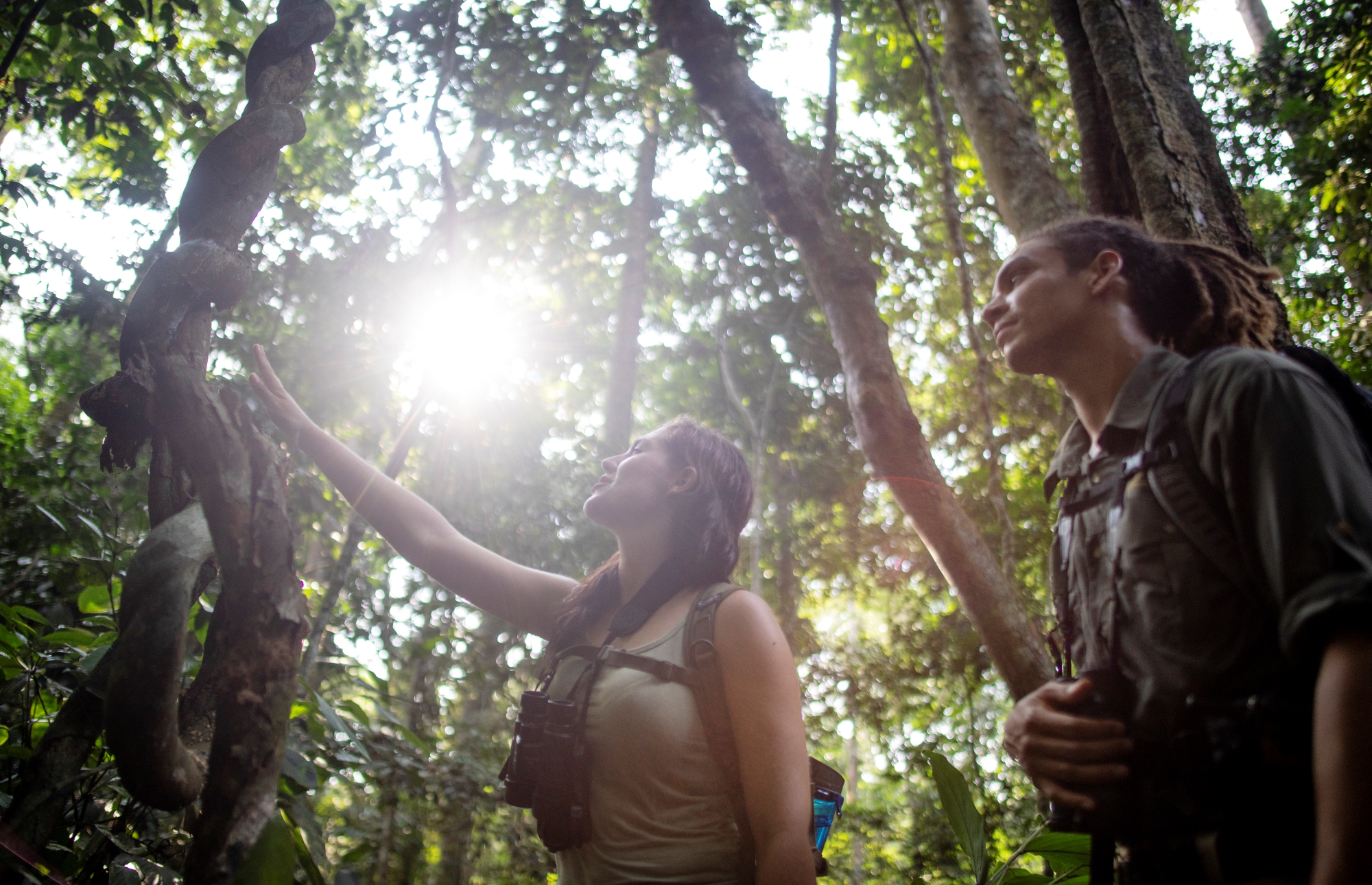
Forest bathing is a grounding experience
Why Shinrin-Yoku in Africa Works
The therapeutic effects of forest bathing are well-documented. Time spent under the canopy reduces stress, sharpens focus, and even boosts immunity. But there’s something about Africa’s untamed landscapes that adds another layer. It’s the knowledge that these forests are alive with stories of life older than time itself, pulsing with vitality.
It’s an opportunity to feel small in the best possible way, reminded of the connection between humanity and the natural world. Few experiences are as humbling or as rejuvenating as standing among ancient trees, their quiet strength almost tangible.
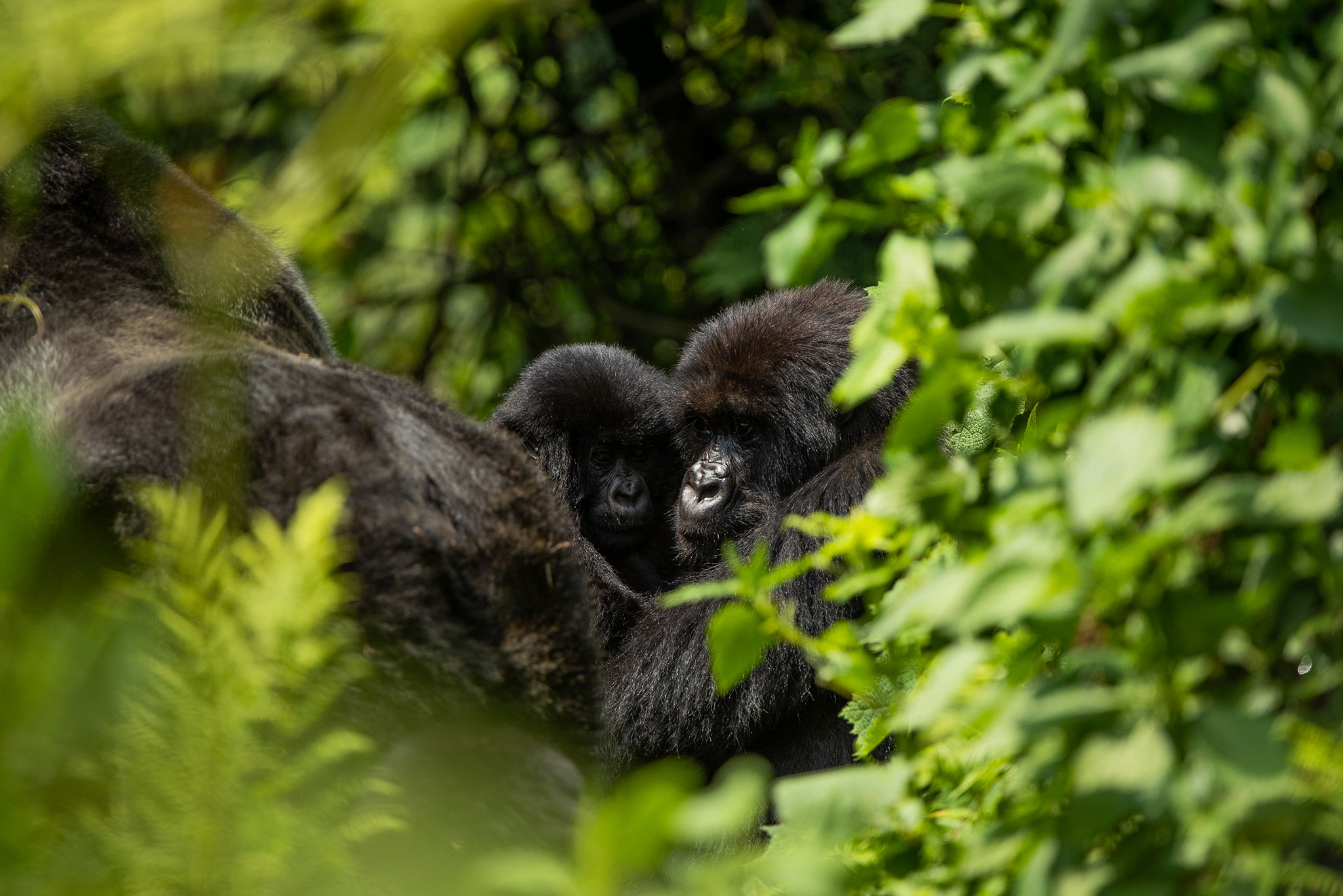
Rwanda’s Virunga Mountains have many surprises in store
Step Into the Forest
Africa may not be the first place that comes to mind for forest bathing, but we promise you it should be! Its wooded spaces offer a chance to pause, reflect, and reconnect with nature in its most unfiltered form – plus it’s incredibly beautiful!
Allow us to be your guide to our continent’s best-kept secrets and help you discover the restorative power of forest bathing. Your next journey into nature begins here. Plan your shinrin-yoku escape in Africa with us.
Featured Image: Ngaga Lodge
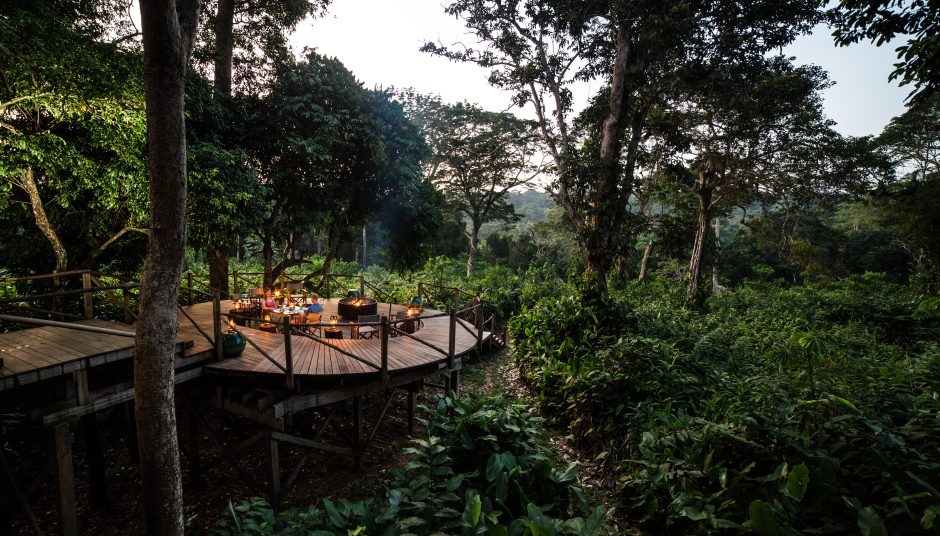
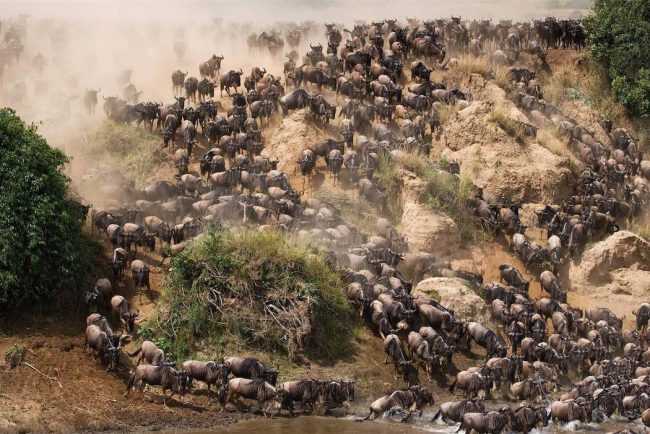
Your Guide to Experiencing the Great Migration in Tanzania
If Tanzania is commonly regarded as the visual triumph of East Africa, the Great Wildebeest Migration is the icing on this visual cake. It’s a naturally orchestrated show of over 2,000,000 animals across 1,000 kilometres over two countries, namely Tanzania and Kenya. Prepare to be thrilled by this incredible spectacle. […]
TanzaniaIf Tanzania is commonly regarded as the visual triumph of East Africa, the Great Wildebeest Migration is the icing on this visual cake. It’s a naturally orchestrated show of over 2,000,000 animals across 1,000 kilometres over two countries, namely Tanzania and Kenya. Prepare to be thrilled by this incredible spectacle. Here’s everything you need to know about this bucket-list phenomenon…
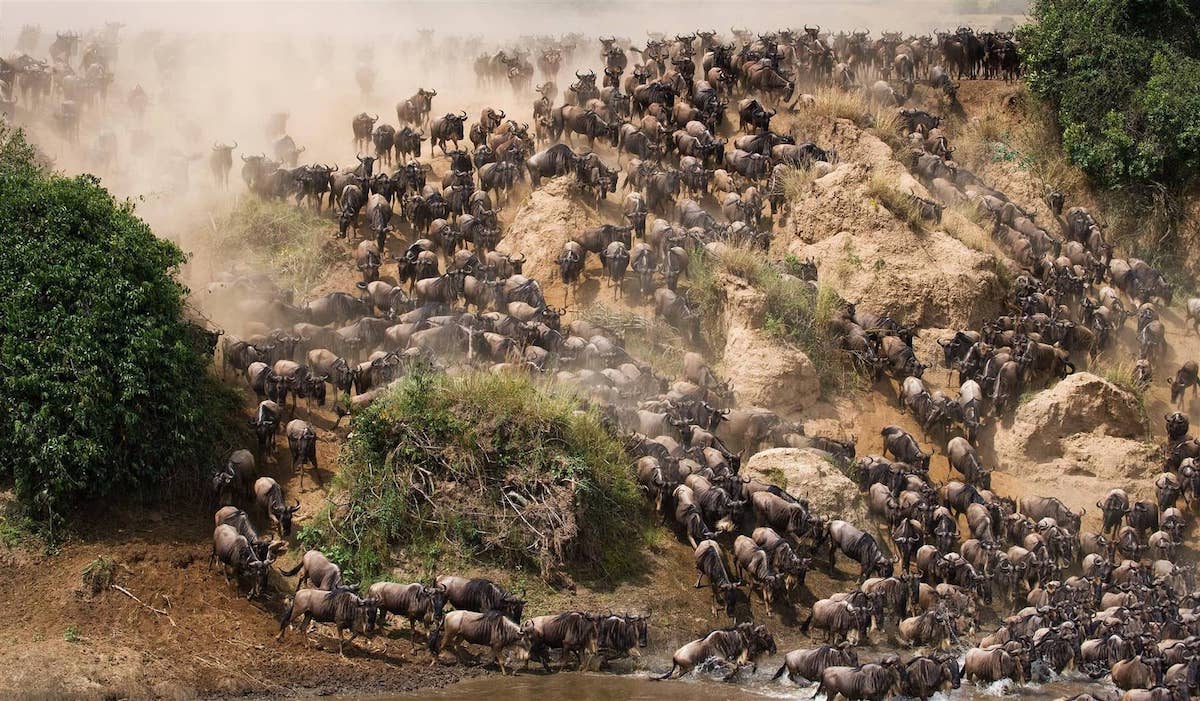
The Great Migration is a testament to nature’s resilience and majesty
When is the Best Time to Visit Tanzania?
One of the main reasons guests want to travel to Tanzania is to witness the Great Migration. And rightly so! However, bear in mind this is a journey and not a once-off event. Therefore, you need expert information on when and where to be to be able to fully experience the Great Migration in Tanzania.
How does this timing work? Well, the rains dictate the country’s seasons and wildlife numbers, offering unique experiences depending on when you choose to visit. Each season has its own charm and surprises waiting for you to discover. Here’s a quick overview of what to expect when visiting Tanzania throughout the different seasons.
Peak Season: June to August
Many guests flock to Tanzania in peak season – which typically falls between June and August – for a chance to witness vast herds of wildebeest and zebra traversing the northern Serengeti before eventually crossing the Grumeti River. What makes these crossings so spectacular is the drama that ensues as the animals try to avoid the jaws of crocodiles and other predators waiting to pounce.
Keep in mind that the peak season can differ slightly depending on the specific movements that year. This is also one of the busier seasons, so please remember that you have to book well in advance to ensure availability.
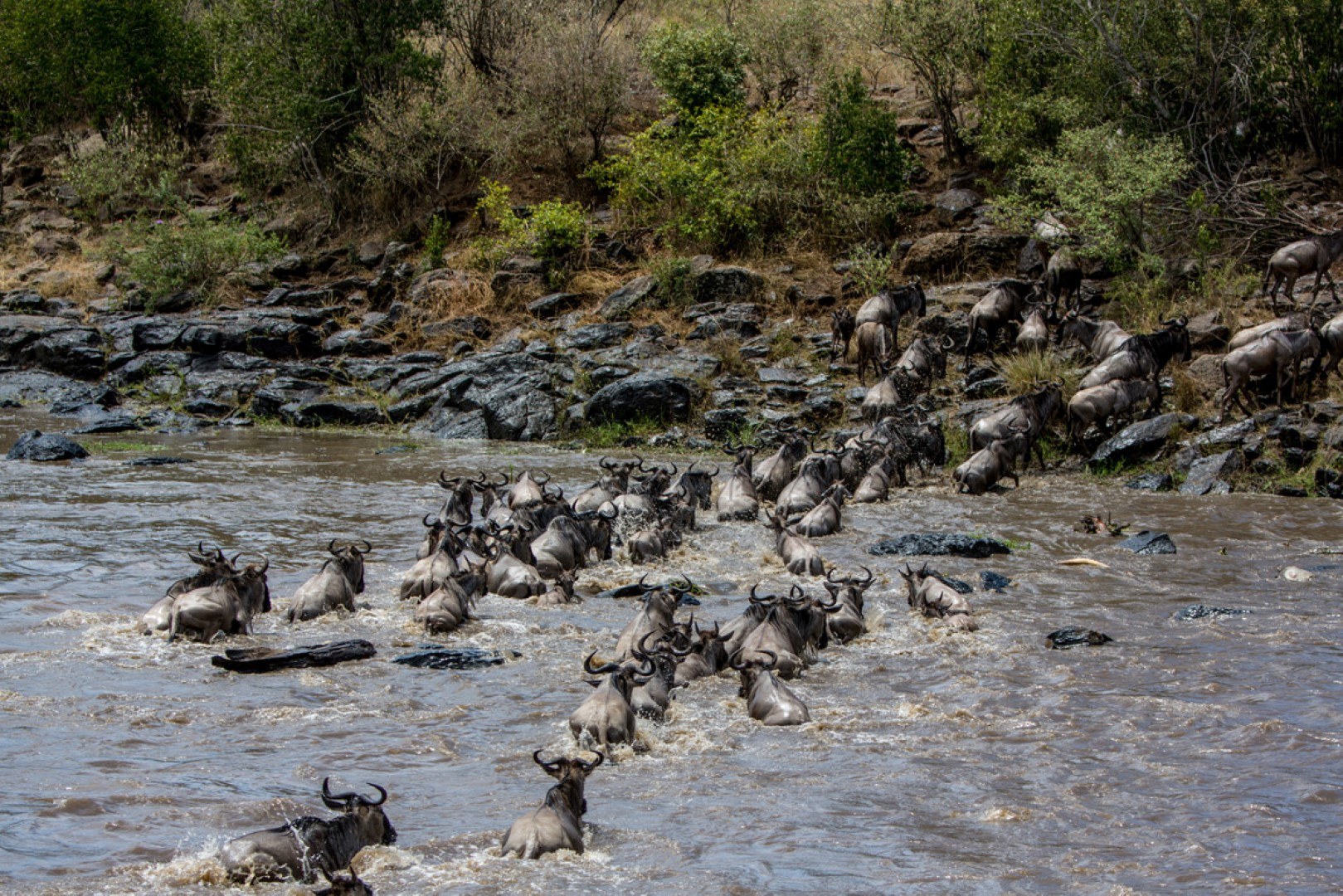
Expect plenty of action and drama as the Great Migration tries to cross the river
Green Season: November to March
Tanzania’s “green season”, between November and March, usually sees fewer visitors. While there’s a chance of highly dramatic thunderstorms, it’s a fantastic time for birdwatching as migratory species arrive in their thousands.
You’ll also see Great Migration herds in the southern and western parts of the Serengeti. With their newly born calves, however, these herds tend to be much more dispersed and less congregated than during the peak of the migration.
Seasons to Skip
The only time we don’t recommend visiting Tanzania is between April and May. This is the only time when heavy rains make it difficult to move in the wilderness. Furthermore, many camps close during this time as the roads can become impassable. But don’t worry, if you book with us, we’ll recommend the best times and destinations for the ultimate African holiday.
Want to know more about the Great Wildebeest Migration? Find out here.
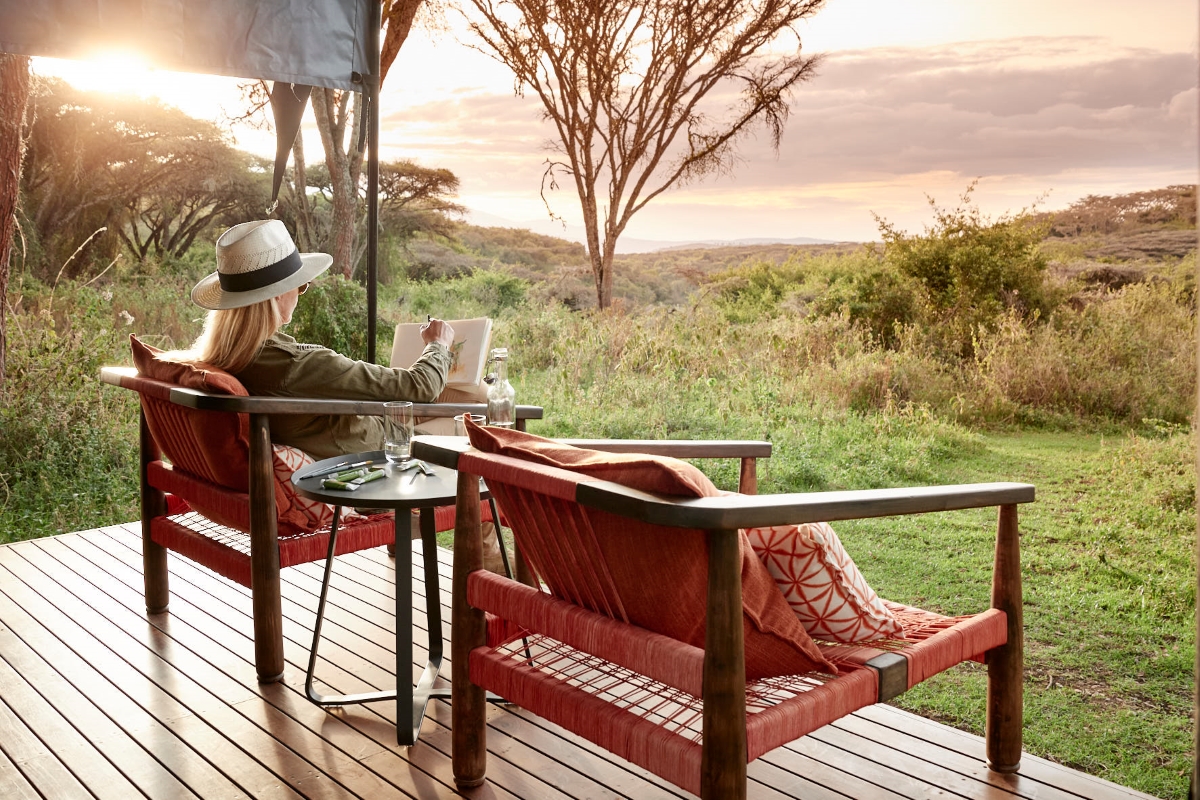
Tanzania holidays can be tailored to suit your needs, Image Credit: Sanctuary Retreats
When Should I Book My Tanzania Holiday?
If you’re hoping to schedule a safari during the peak season, we suggest booking at least 12 months in advance. But if you’re interested in off-season travel, you can book six to eight months before.
Tanzanian holidays come in many forms and as experts, we can craft any holiday to suit travellers of all ages and interests. However, due to the high demand, they fill up fast, so make sure you plan and book early to secure your ideal trip.
Before booking, however, it’s essential to consider what things you’d like to do in Tanzania. Maybe you’d like to include a trip to the beach, historical tours, or visit various nature reserves, for example? Your preferences will help us tailor your trip to your liking.
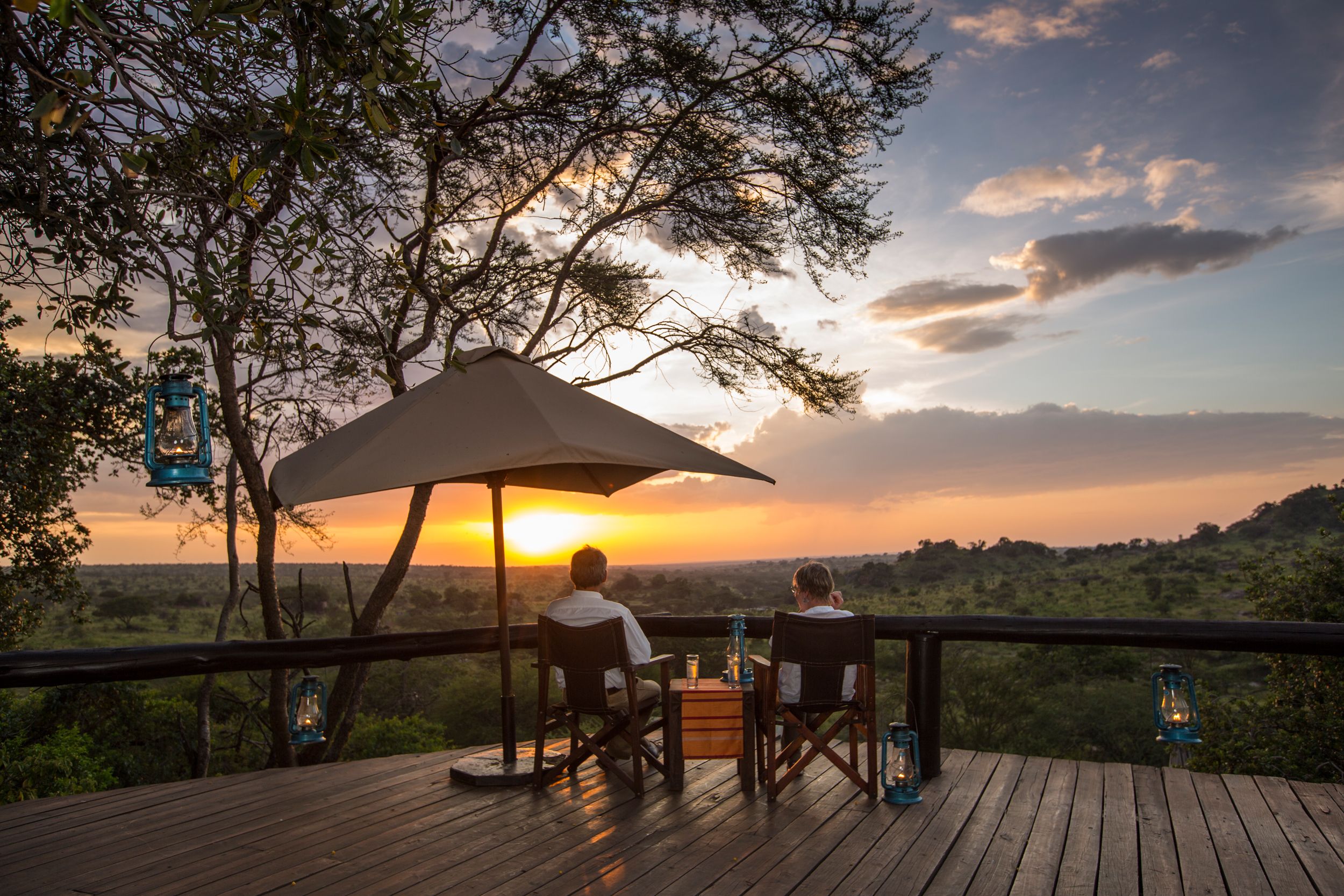
Make sure you get the best experiences by booking far in advance, Image Credit: Elewana Serengeti Migration Camp
How Much Does a Great Migration Safari Cost?
The cost of a Great Migration safari in Tanzania really does depend on what time of the year you’ll be travelling.
As a rough guide, prices start at around 1,000 USD per person per night during peak season. However, the cost can increase to around 3,500 USD per person per night.
We suggest talking to one of our Travel Experts to tailor-make your perfect Tanzanian escape as the range of accommodation options and experiences run the gamut.
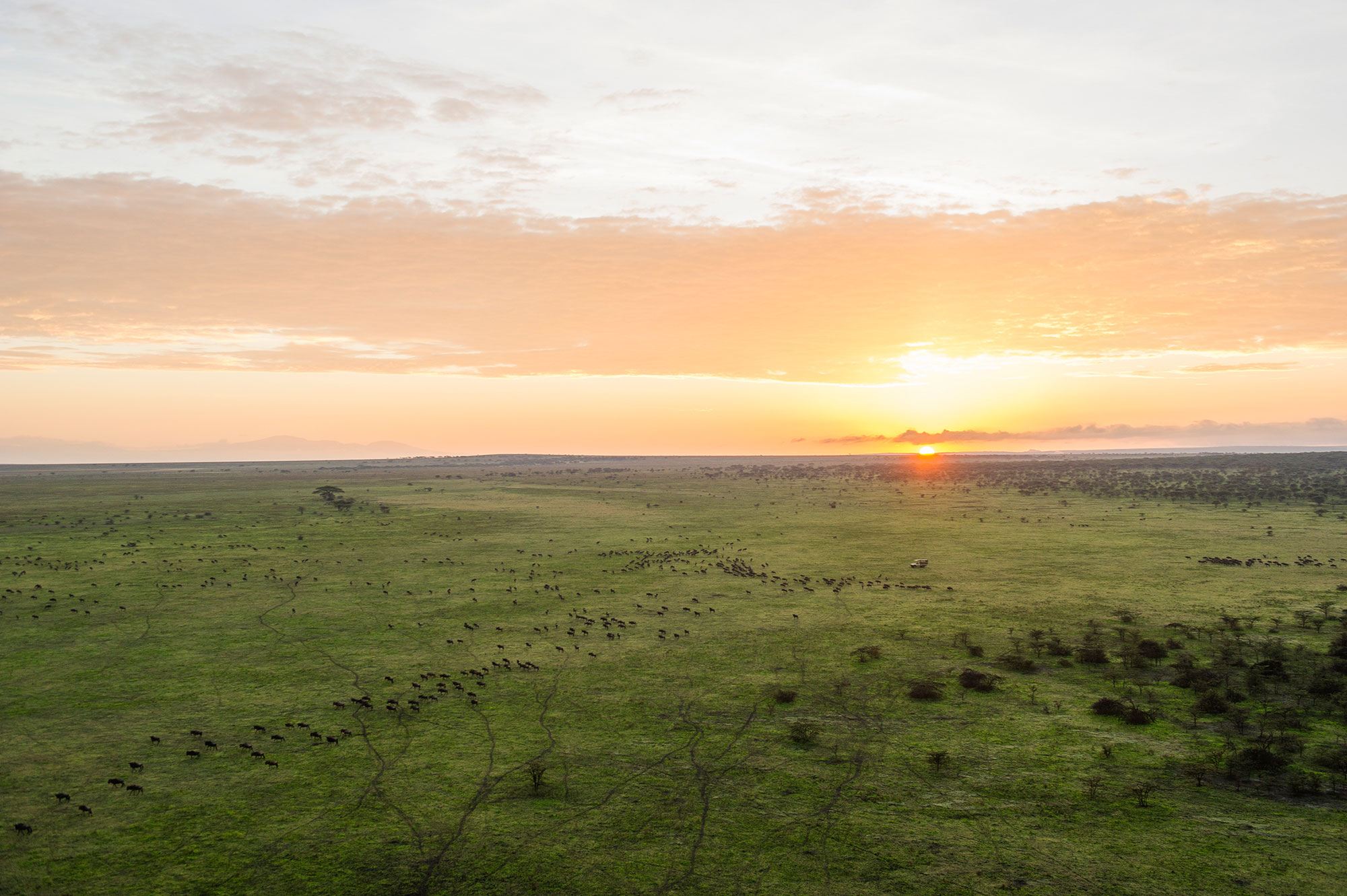
The Serengeti is Tanzania’s most famous safari destination – you can see why!
Where to Stay in Tanzania to See the Great Migration
Our Travel Experts have stayed at all the best luxury lodges in Tanzania and have first-hand experience of which ones offer the best Great Migration experiences. Here’s our hand-picked selection of the best lodges featuring spectacular designs, warm hospitality, and the most panoramic views on the planet.
1. Singita Sasakwa Lodge
Singita Sasakwa Lodge is one of our favourite accommodation spots in the Serengeti. Along with a front-row seat to the Great Migration, you can choose between an elegantly designed Manor House or one of the expansive cottages. Combining old-world sophistication with contemporary charm, Sasakwa Lodge creates a peaceful atmosphere with all the frills your heart could desire.
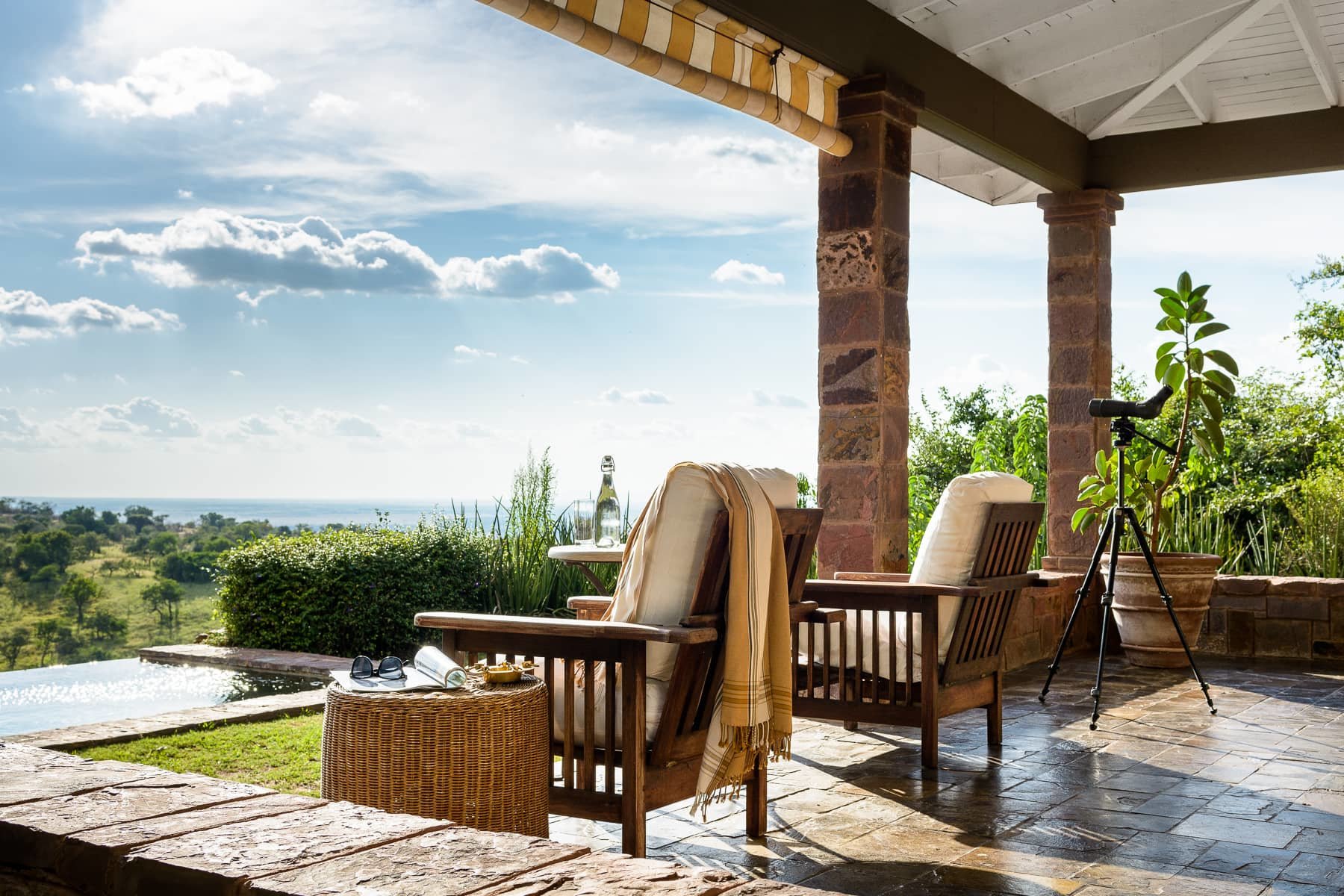
Would love to be here right now, Image Credit: Singita Sasakwa Lodge
2. Mwiba Lodge
Overlooking a rocky gorge on the Arugusinyai River in the Southern Serengeti, Mwiba Lodge is set in between boulders and ancient trees. This private land overflows with stunning vegetation, wildlife and multiple freshwater springs. Here, you can feel like “the king of the castle” while enjoying your rest away from the busy world.
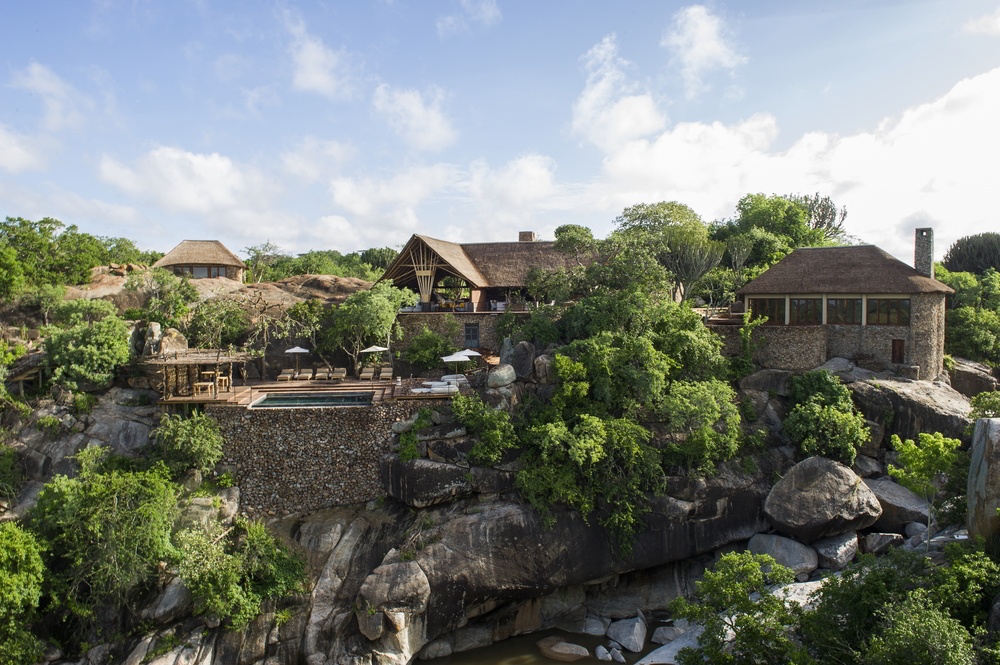
The ultimate vantage point of the Serengeti, Image Credit: Mwiba Lodge.
3. Grumeti Serengeti River Lodge
As the name suggests, you’ll find the Grumeti Serengeti River Lodge on the banks of the Grumeti River, which means you’ll see bloats of hippos and witness the passage of the Great Migration (if you visit at the right time). Few camps have such an ideal location! After a day of game drives and adventure, we recommend winding down with a sundowner on the spacious deck overlooking the activity in the river below.
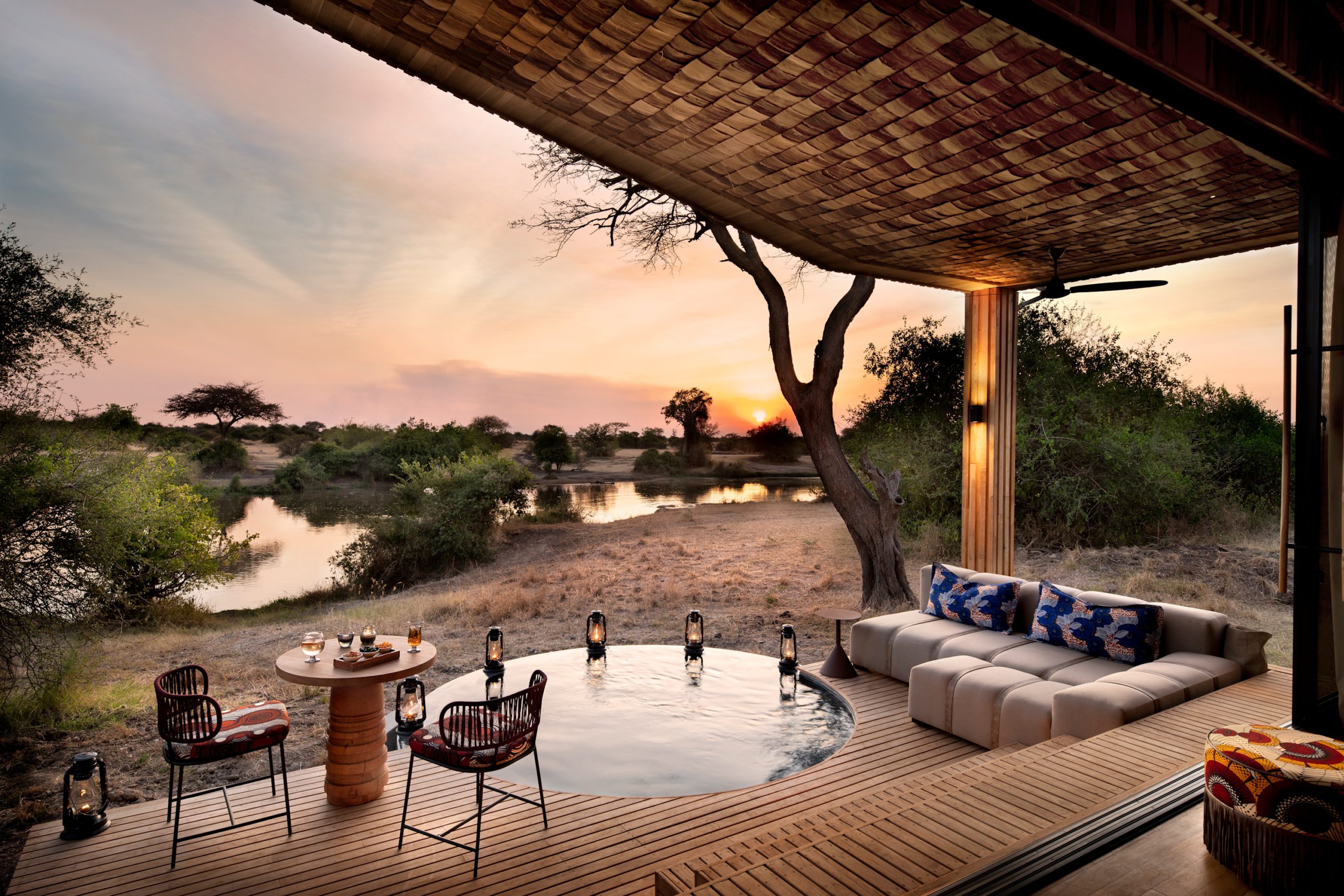
Welcome to your safari home, Image Credit: &Beyond
4. Sayari Camp
Sayari Camp is a beautiful blend of grandeur and wilderness – a high-end lodge that keeps the wild surroundings at its core. Its ideal location near the Maasai Mara and Lamai Wedge makes this the perfect resting spot in between Great Migration safaris. While here, we recommend forgoing traditional indoor dining for a gorgeous dinner under the stars or a bush breakfast before heading out on your safari.
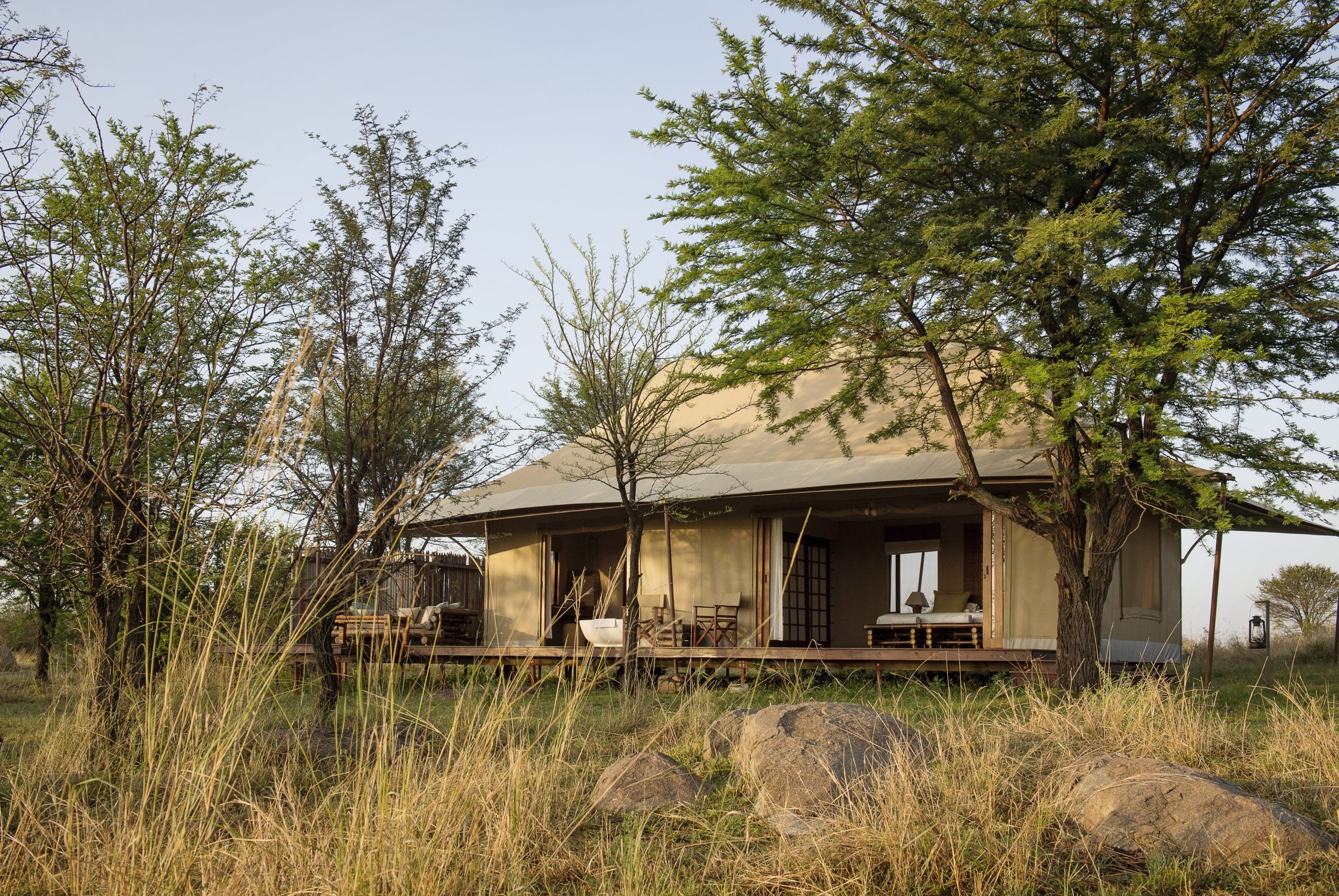
Wake up to panoramic views of the vast Serengeti plains, Image Credit: &Beyond
5. Namiri Plains
Located along the Ngare Nanyuki River in the eastern part of the Serengeti, Namiri Plains is a haven of lavish canvas tents with the highest level of service. The area is known for its “big cat” viewing opportunities, such as lion, cheetah, leopard, and sometimes the smaller serval and caracal. After a day of game viewing, head to the Soit Le Motonyi viewpoint for a sundowner.
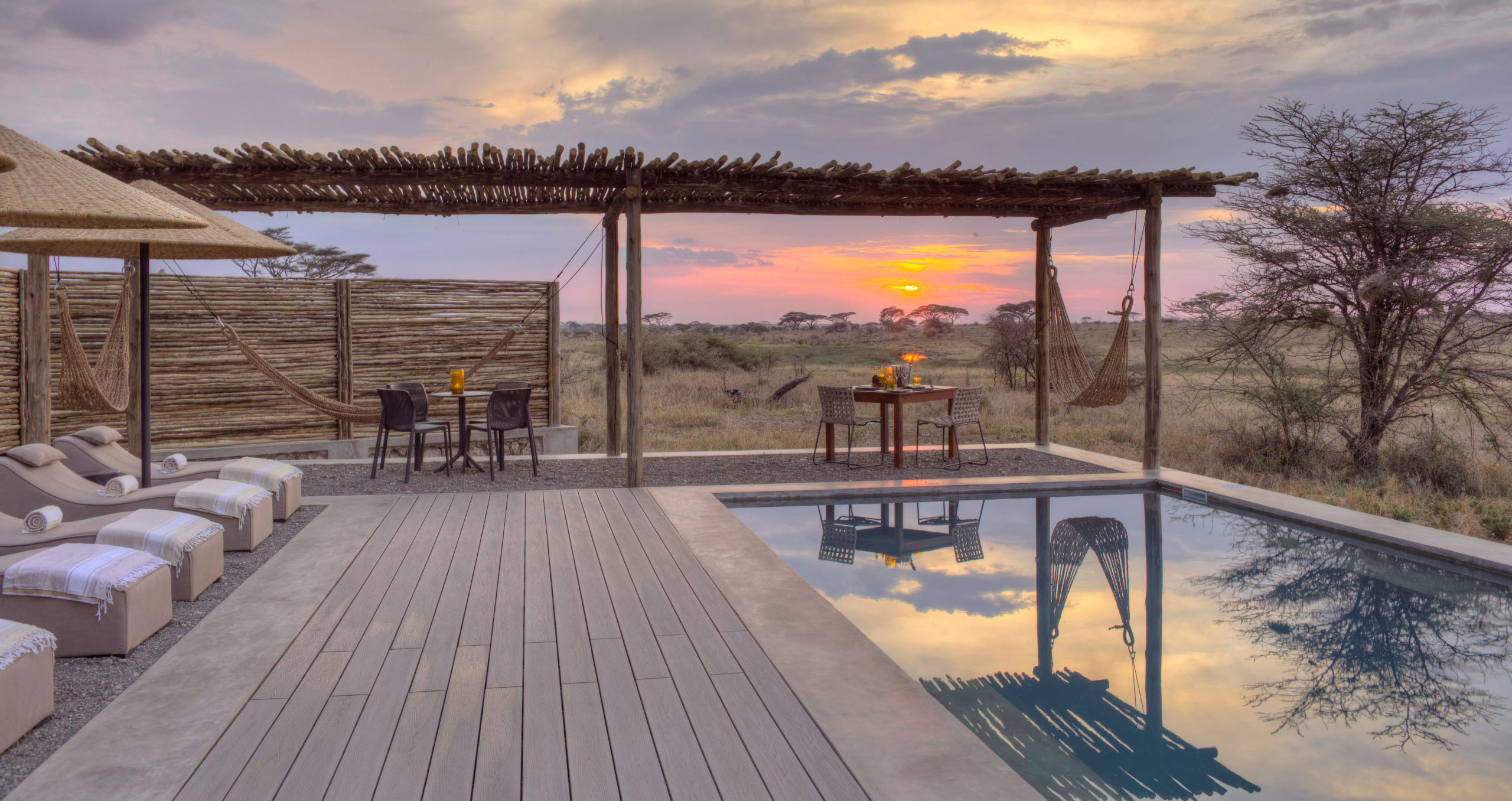
A tranquil retreat in “big cat country”, Image Credit: Asilia Namiri Plains Camp
6. Singita Faru Faru Lodge
With the Singita Grumeti Private Reserve as its backyard, Singita Faru Faru Lodge offers an exclusive retreat away from the busier alternatives. Along with traditional safaris led by expert field guides, you can take to the sky in a hot air balloon to explore the African bush from above – remember to bring your camera along for the ride!
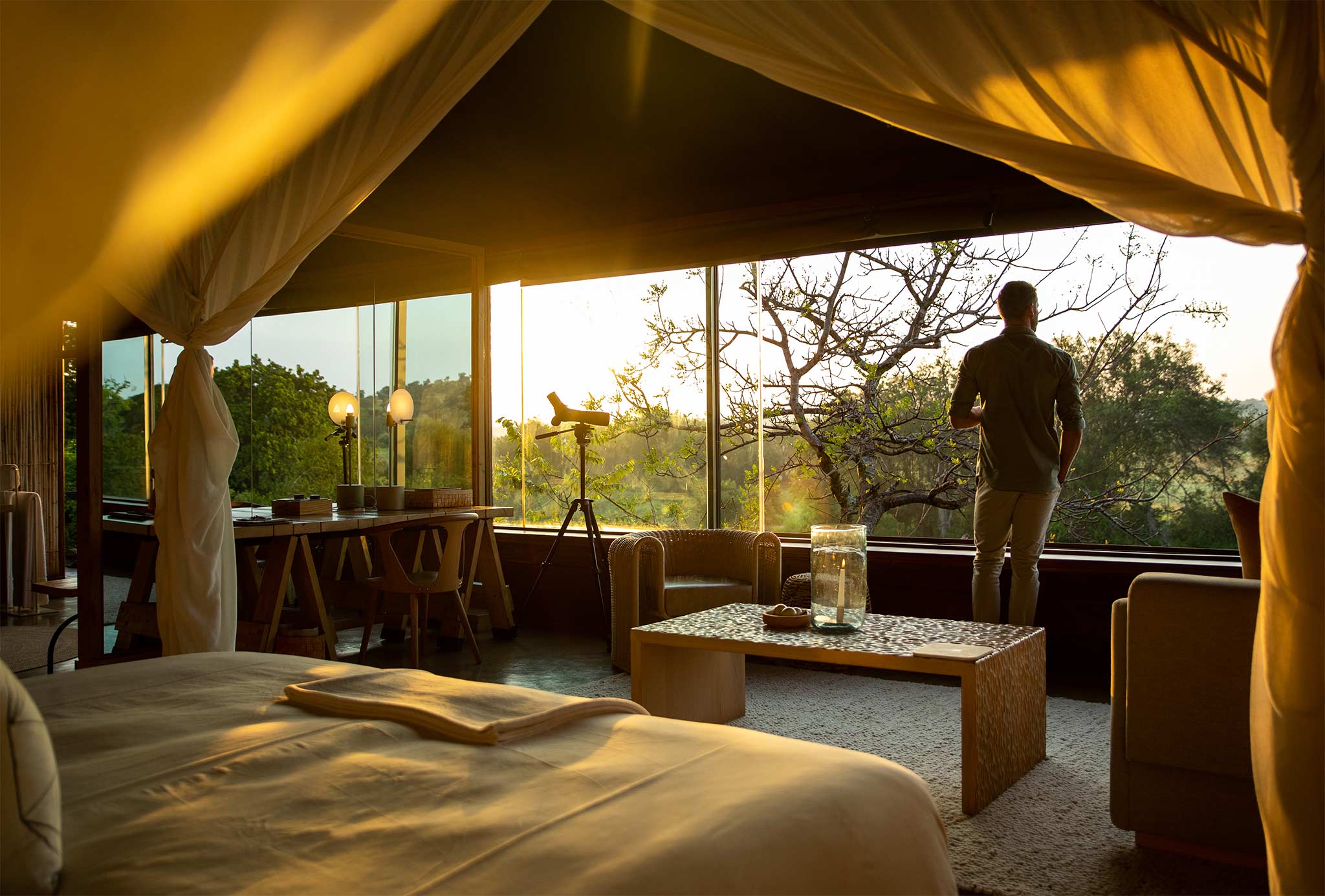
Seeing the Great Migration in Tanzania is something you’ll reminisce about for years to come
Our Favourite Great Migration Tours in Tanzania
At Rhino Africa, we believe in personalising each and every experience. This means we don’t have set tours you have to choose from. Instead, we give you some sample Tanzania tours to get you dreaming. From there, we get to know you and your fellow travellers in order to curate something spectacular.
For one of our favourite combinations, imagine going from the coffee plantations of Arusha to Great Migration meandering in the Serengeti and Ngorongoro Crater, before bringing the journey to an end on the mesmerising island of Zanzibar! Our Ngorongoro, Serengeti and Zanzibar Tour showcases the breathtaking wildlife and landscapes of Tanzania, all rolled into one unbelievable holiday.
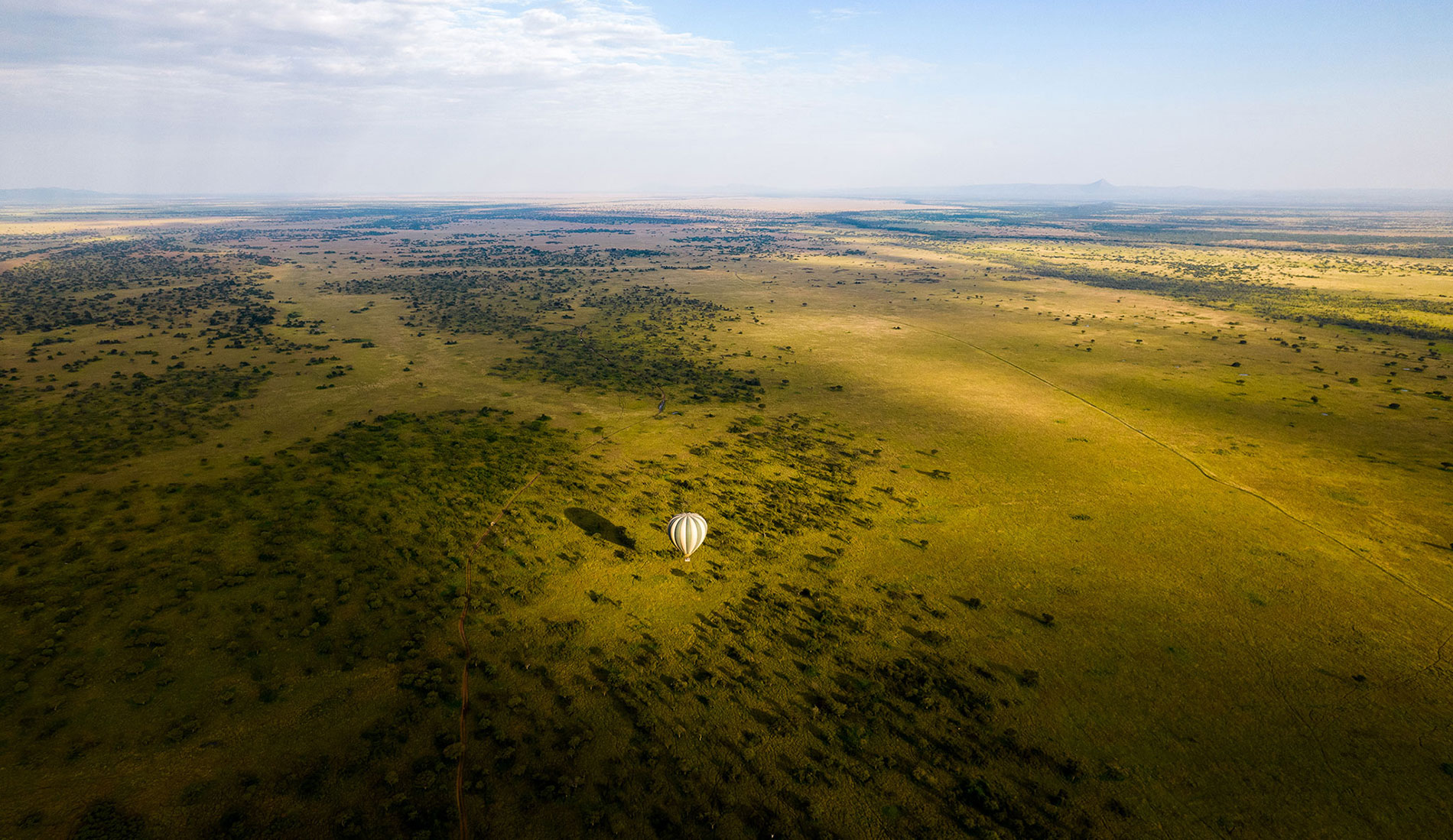
Let’s make some memories in Tanzania
Ready To Get This Show on the Road?
Our first-hand experience means we know the ins and outs of each lodge and can tailor-make the ideal safari for all occasions – whether you’re after a slow travel experience or celebrating your honeymoon.
Contact us, and let one of our Travel Experts start planning your African safari today.
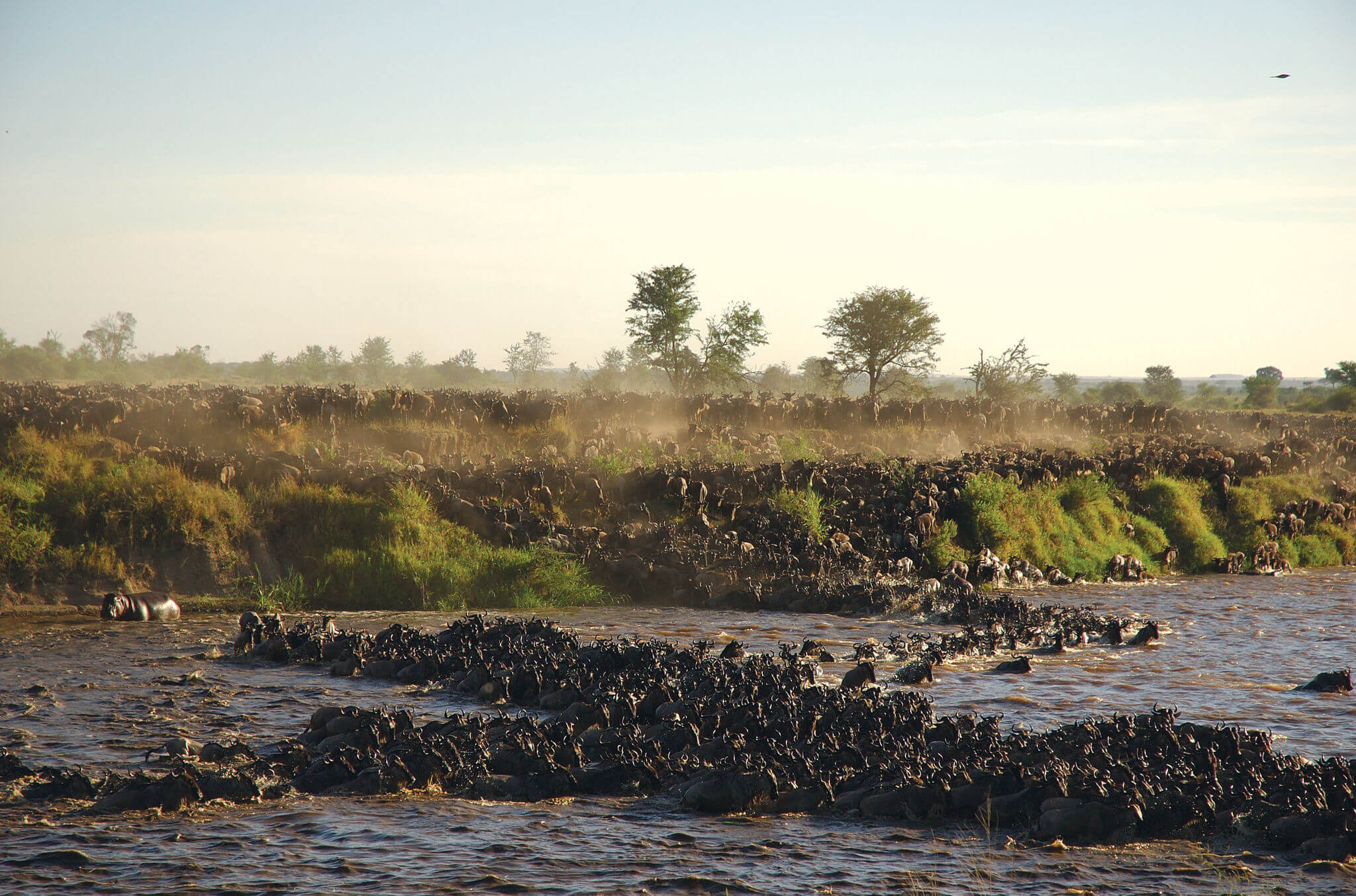
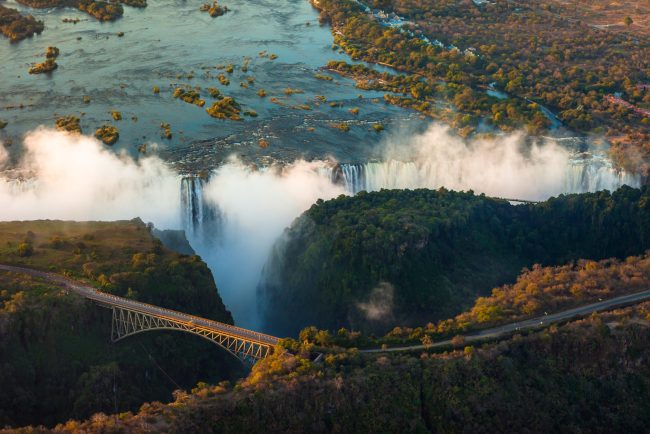
Cascade into Pure Bliss with The 12 Best Lodges in Victoria Falls
We could gush (get it?) about the jaw-dropping Victoria Falls until the hippos come home, but let’s be real – you’ve got to see this African wonder for yourself. And why should you stay at any other place but the best lodges in Victoria Falls? […]
ZimbabweWe could gush (get it?) about the jaw-dropping Victoria Falls until the hippos come home, but let’s be real – you’ve got to see this African wonder for yourself. And why should you stay at any other place but the best lodges in Victoria Falls? Some of Africa’s most sought-after classic hotels and lodges can be found under the spray of the world’s largest sheet of falling water. Here are our 12 top picks, in no particular order – because, like the falls, they all bring their own thunder!
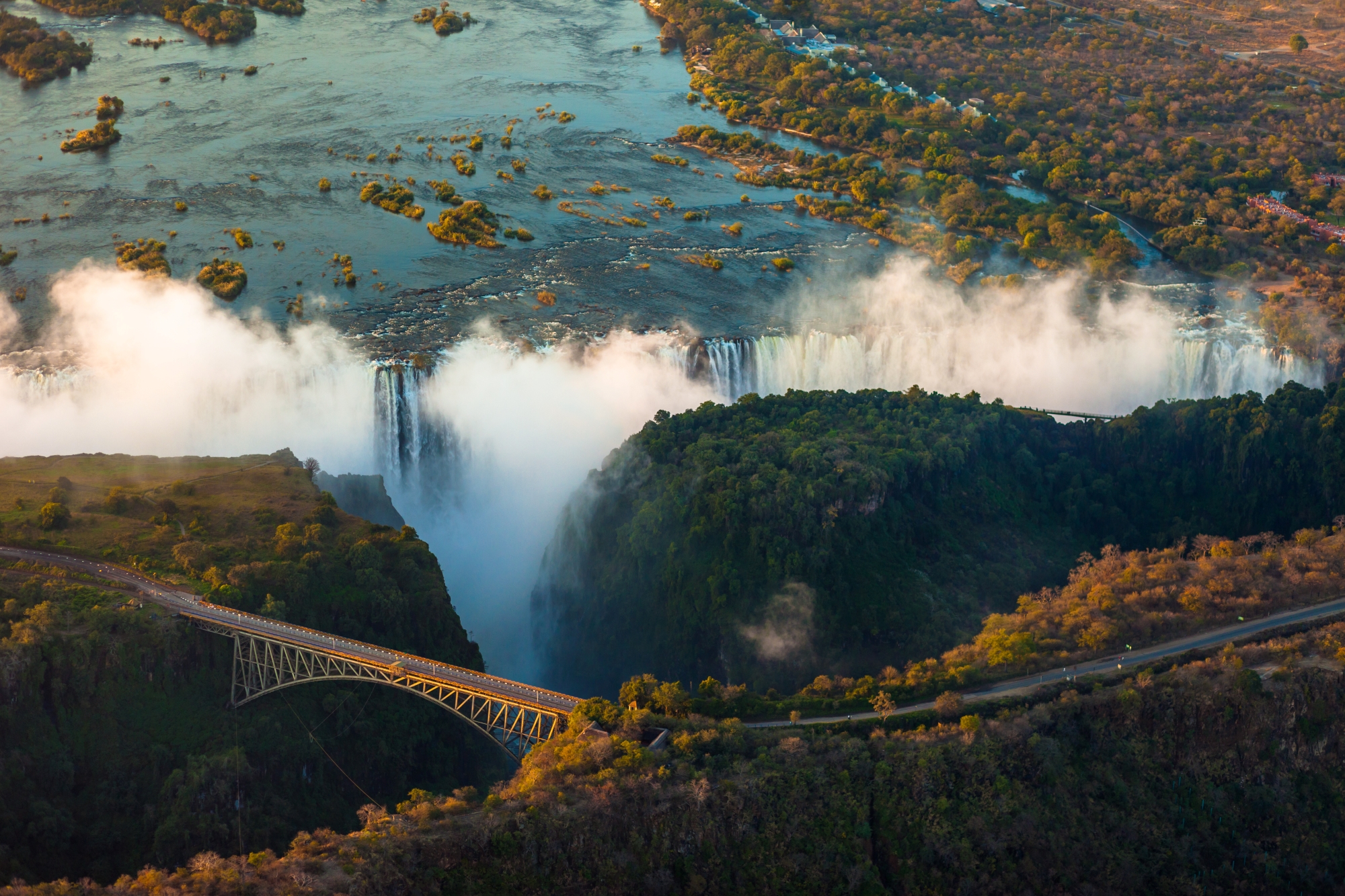
The Victoria Falls presents a spectacular sight of awe-inspiring beauty
1. Victoria Falls Hotel
Location: Zimbabwe, Victoria Falls National Park (10-minute walk from Victoria Falls)
Let’s start with a little bit of historic elegance. Established in 1904, The Victoria Falls Hotel was the first hotel built in these parts and is set in the Victoria Falls National Park. It even has a private path leading directly to the entrance gate of Victoria Falls. With epic views of the Victoria Falls Bridge, gorges below and spray from the waterfalls, the grand dame of Victoria Falls is steeped in history and plenty of colonial grandeur.
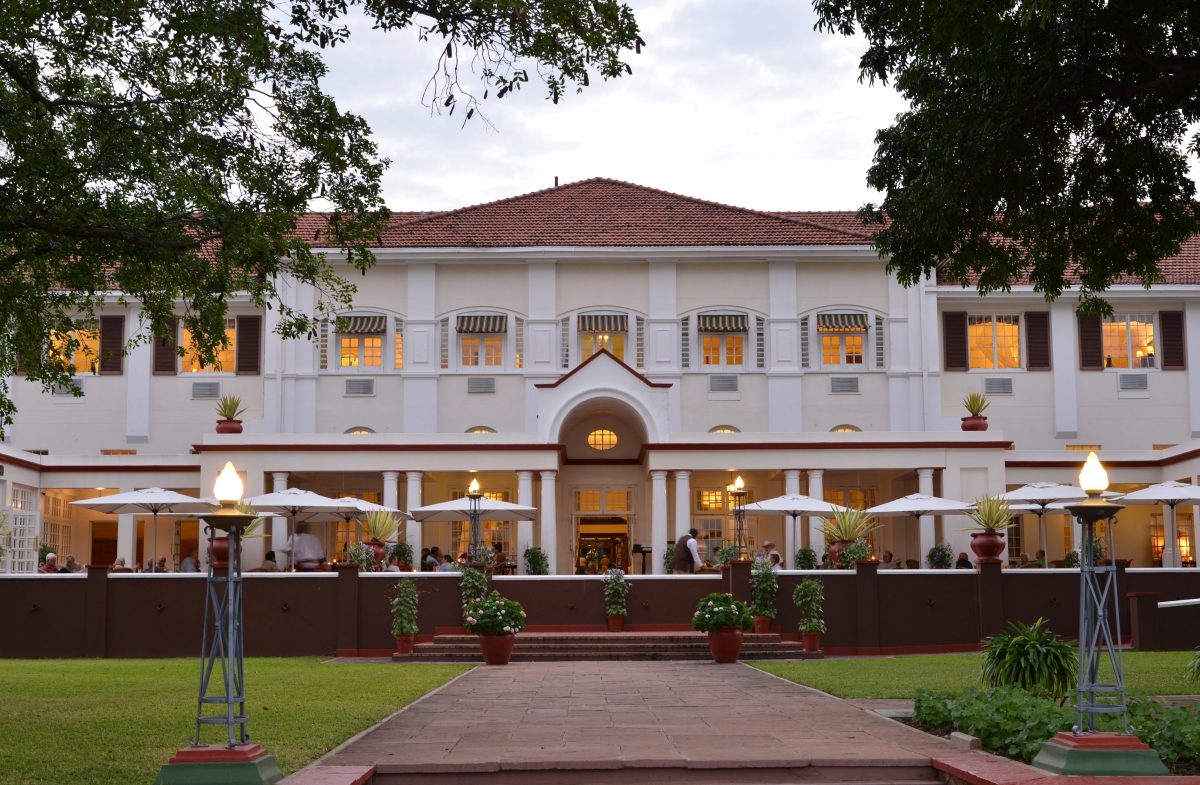
A hotel boasting a history dating back to 1904 with patrons including the British royal family, Image Credit: Victoria Falls Hotel
The rooms and suites are decorated in a style that cleverly mingles a bygone age with today’s modern conveniences. Meanwhile, the corridors reflect the past glories of the Empire, with exquisite lounges wrapping you in seclusion and serenity. For some elegant entertainment, the Livingstone Room specialises in silver service, elegant dinners and dancing. Then there’s the Stanley’s Terrace, showcasing a delectable à la carte menu, renowned High Tea and a sundowner venue that’s hard to beat.
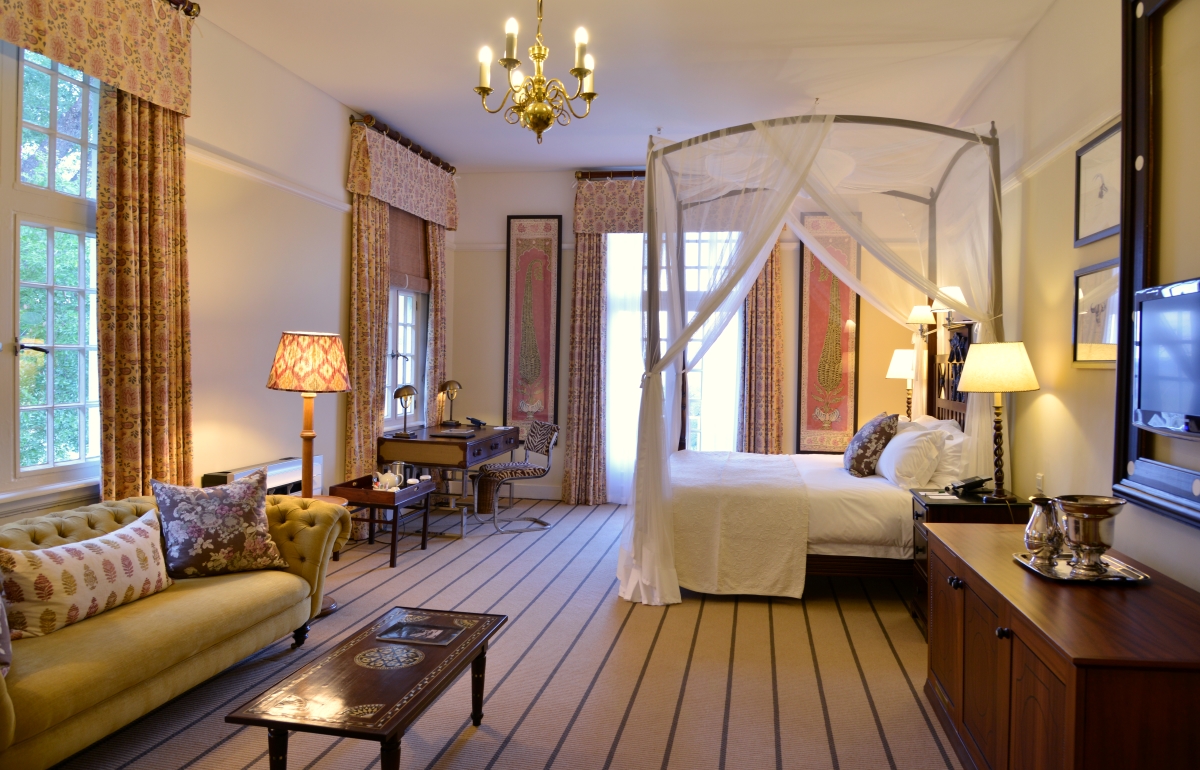
Guests at Victoria Falls Hotel can choose from a delightful array of room options, Image Credit: Victoria Falls Hotel
2. Old Drift Lodge
Location: Zimbabwe, Victoria Falls National Park (7 kilometres from Victoria Falls)
Old Drift Lodge, on the banks of the Upper Zambezi – a setting you won’t forget. The main lodge is designed for those who appreciate the finer things, with a spacious dining area, a bar that begs you to linger, and a lounge with sofas that practically pull you in. Step outside, and you’ll find a fire pit perfect for storytelling and a riverside deck that launches unforgettable boating excursions.
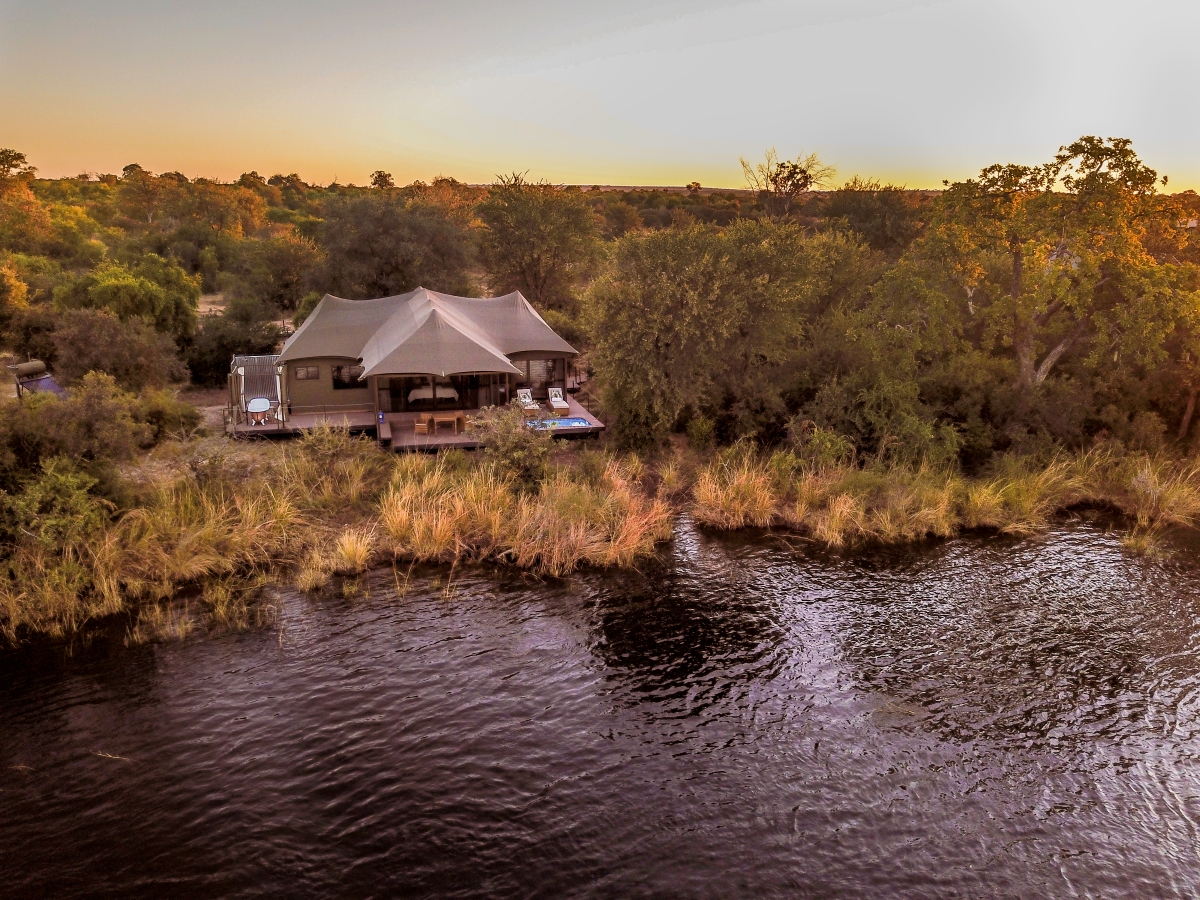
Enjoy enchanting wildlife and five-star comforts, Image Credit: Old Drift Lodge
For those who like their luxury, the tented suites at Old Drift Lodge deliver. Positioned along the river, each suite features a private plunge pool, loungers for ultimate relaxation, and interiors that strike the perfect balance between comfort and style. Plus, the en suite bathroom comes with both indoor and outdoor showers and an outdoor roll-top bath that’s all about soaking in the river views.
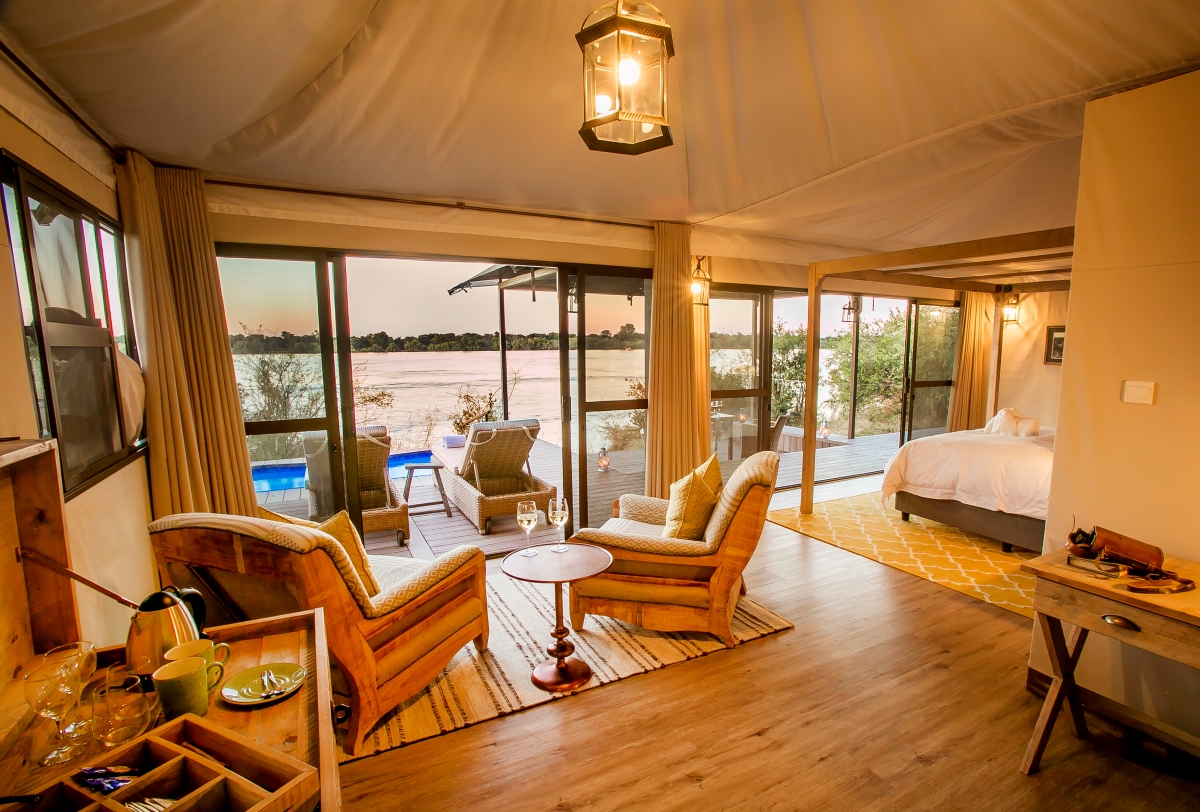
Stay in a luxury tented suite in one of the best lodges in Victoria Falls, Image Credit: Old Drift Lodge
3. Palm River Hotel
Location: Zimbabwe, Victoria Falls National Park (4 kilometres from Victoria Falls)
Timeless elegance defines the Palm River Hotel, from the carefully curated décor to the grand dining hall, where meals are crafted with fresh produce straight from the hotel’s own greenhouses. As a dedicated custodian of nature, Palm River is committed to preserving the majestic indigenous trees that grace its lawns.
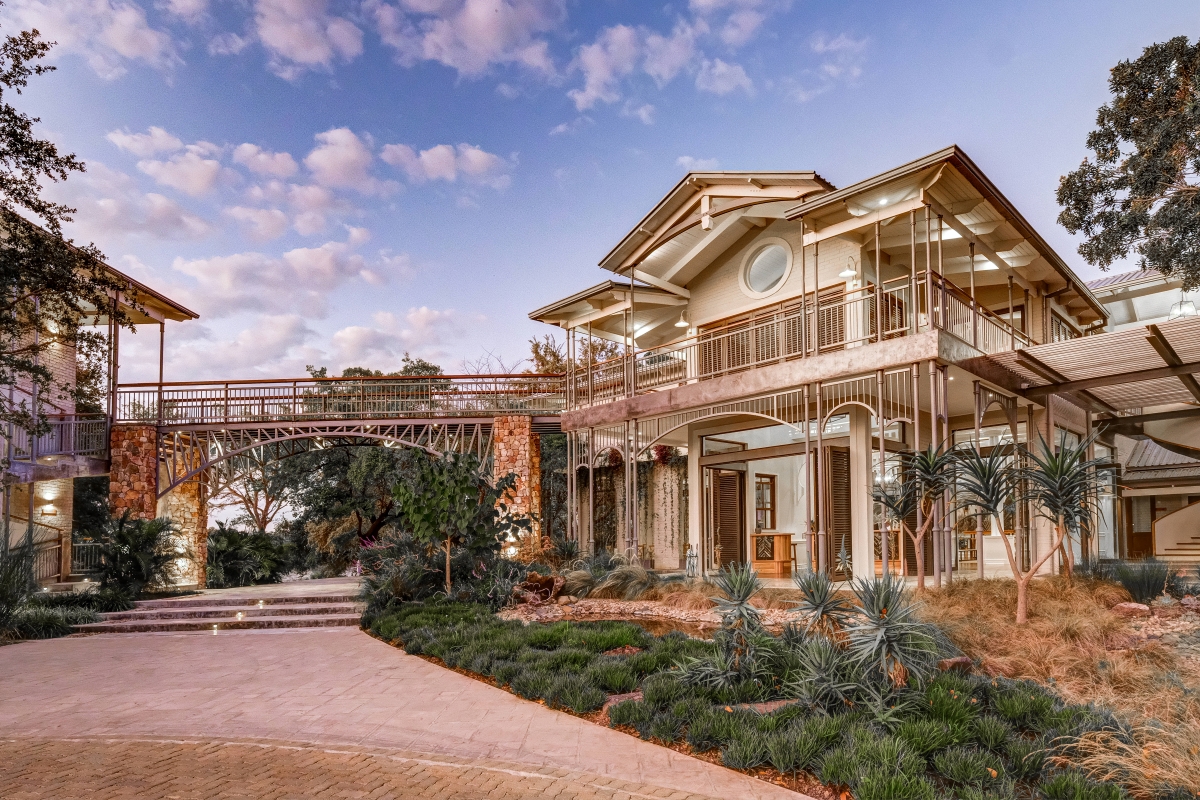
Admire architecture and design that is both modern and timeless, Image Credit: Palm River Hotel
Whether you opt for a Deluxe Room or the exclusive Palm River Villa, you’ll find that every detail has been considered. Natural tones, locally sourced materials, and regional artwork create a sophisticated yet grounded aesthetic. Each room offers sweeping views of the riverside garden that meets the Zambezi, making you feel intimately connected to the landscape just outside your door.
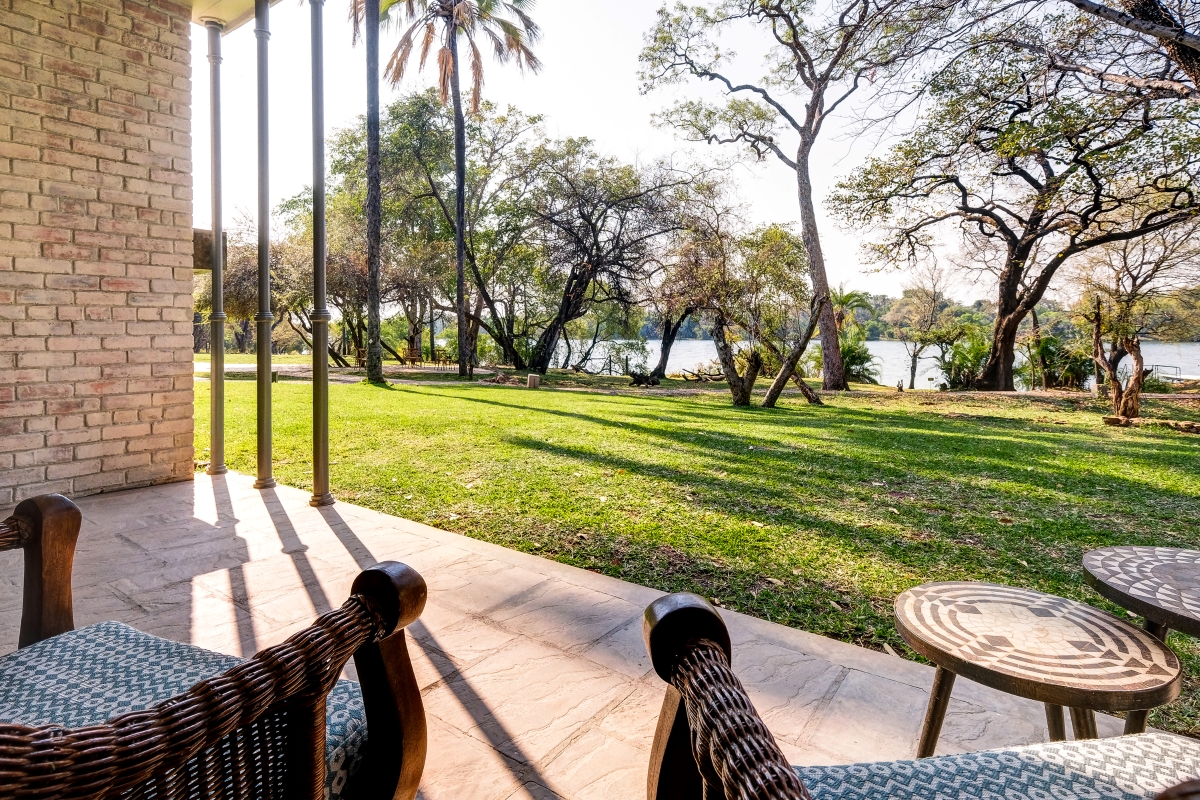
Private patios or balconies to savour scenic views, Image Credit: Palm River Hotel
4. The Elephant Camp
Location: Zimbabwe, Victoria Falls National Park (10 kilometres from Victoria Falls)
The Elephant Camp, a standout among the best lodges in Victoria Falls, offers a rare balance of seclusion and convenience – tucked away in Victoria Falls National Park while being just a stone’s throw from the Falls. The camp’s décor is stylishly simple, with bold African touches and a modest level of luxury that does not detract from the inspiring surroundings.
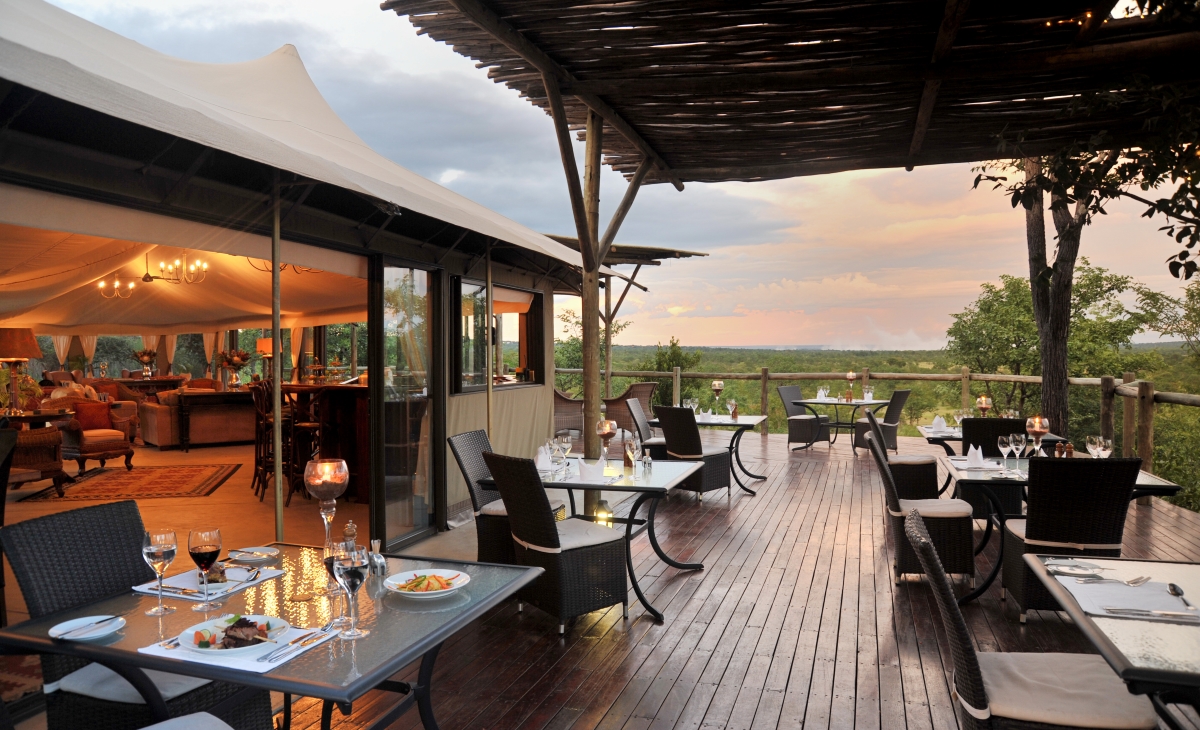
Easy access to the Falls, yet stands on its own private game reserve, Image Credit: The Elephant Camp
Relish delicious meals and sundowners in private seating areas, or on the main dining deck, and create your own delicious wood fire pizza in the pizza oven at lunch. Enjoy the relaxed atmosphere, friendly staff and expansive vistas of the surrounding bush, take a game drive in search of wildlife or head to the “Smoke that Thunders” for a day of adrenaline-filled activities.
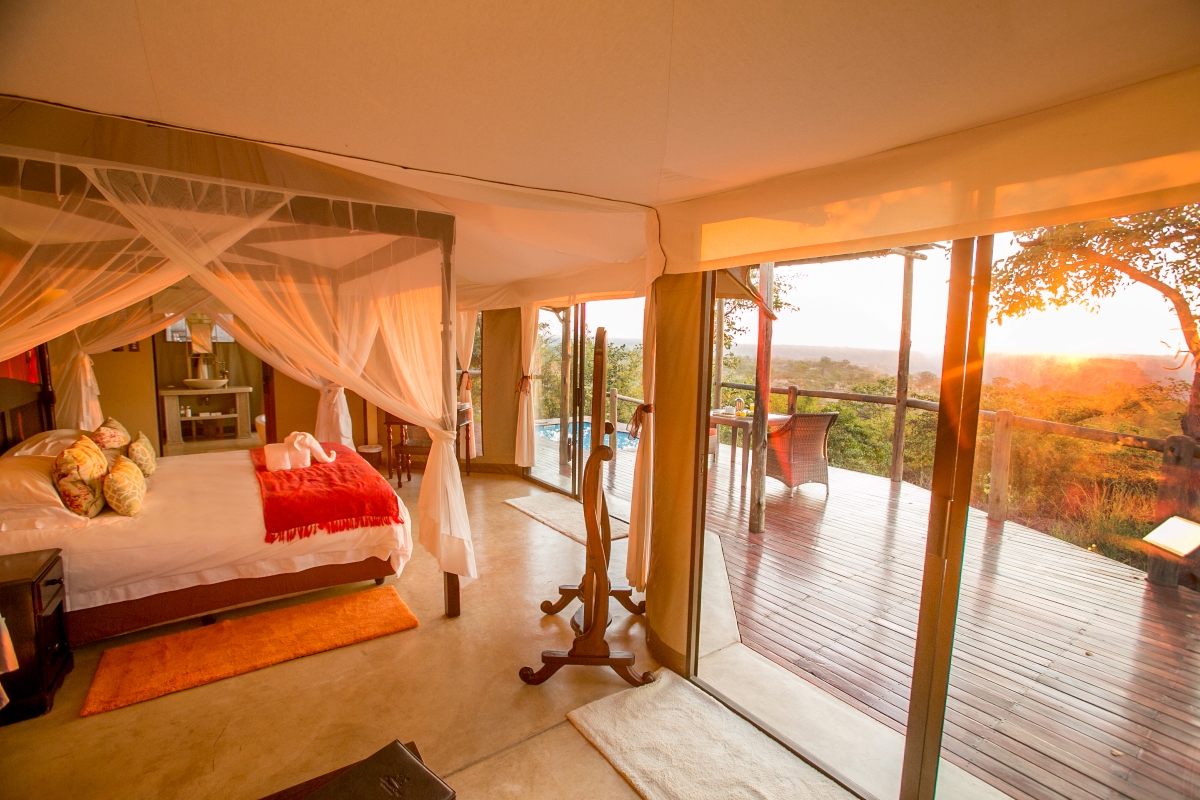
Private viewing decks feature plunge pools, perfect for two, Image Credit: The Elephant Camp
5. Pioneers Victoria Falls
Location: Zimbabwe, Victoria Falls Town (2.5 kilometres from Victoria Falls)
Pioneers Victoria Falls brings a fresh take on comfort and style in the heart of Victoria Falls, just 2.5 km from the iconic natural wonder. Tucked away in a tranquil residential suburb, this lodge perfectly marries the charm of the pioneer era with the modern comforts that today’s traveller expects. With exclusive access for residents, privacy here is more than just a promise – it’s a guarantee.
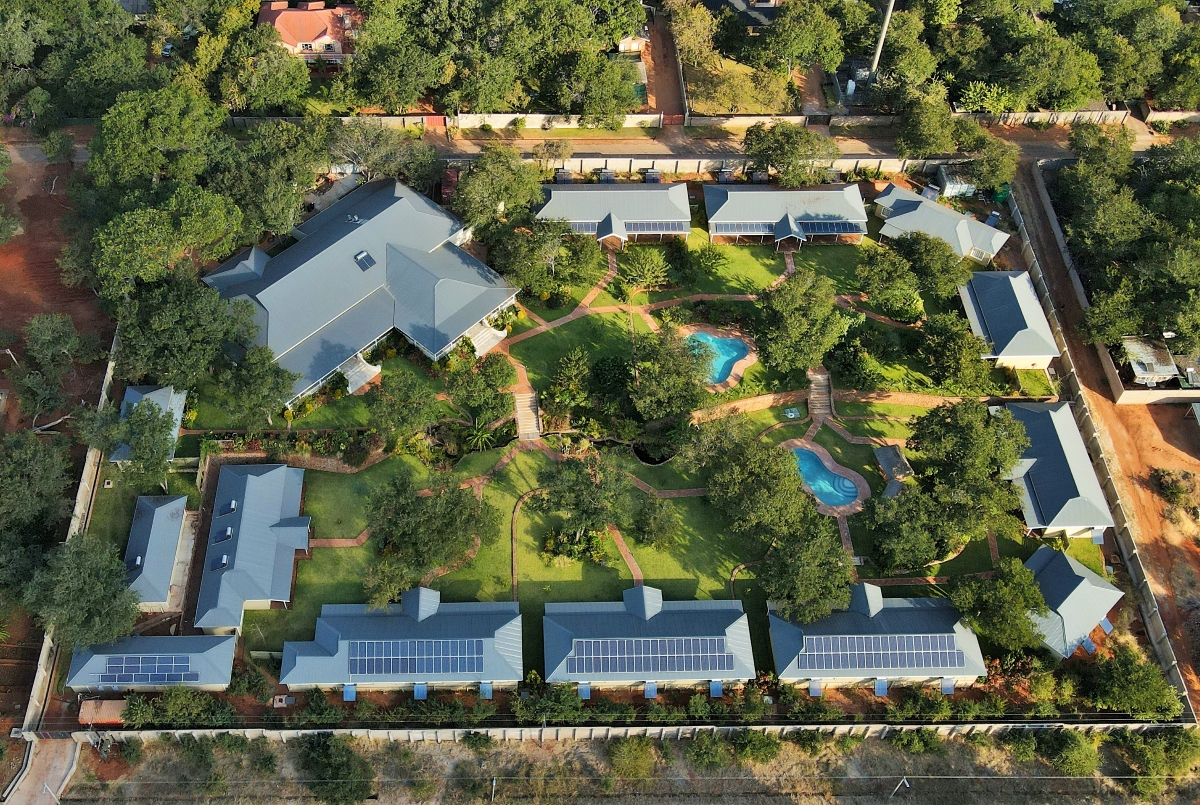
Situated in a peaceful residential suburb, Image Credit: Pioneers Victoria Falls
Find yourself meandering the lush, manicured gardens, and enjoy the Pioneers’ rooms, designed with a classic touch and offering clear views of the garden and all the amenities you need for a comfortable stay. Families are well-catered for in the four spacious family rooms, making this lodge a standout choice for those seeking a refined yet relaxed, Victoria Falls experience.

The layout and classic décor here make it extremely welcoming, Image Credit: Pioneers Victoria Falls
6. Mpala Jena
Location: Zimbabwe, Zambezi National Park (23 kilometres from Victoria Falls)
You’ll find Mpala Jena along (you guessed it!) the legendary Zambezi. The bar’s sandy floor practically begs you to kick off your shoes and embrace the laid-back vibe, while the pool lounge is the ideal hangout post-safari and for those midday hours when the African sun turns up the heat.
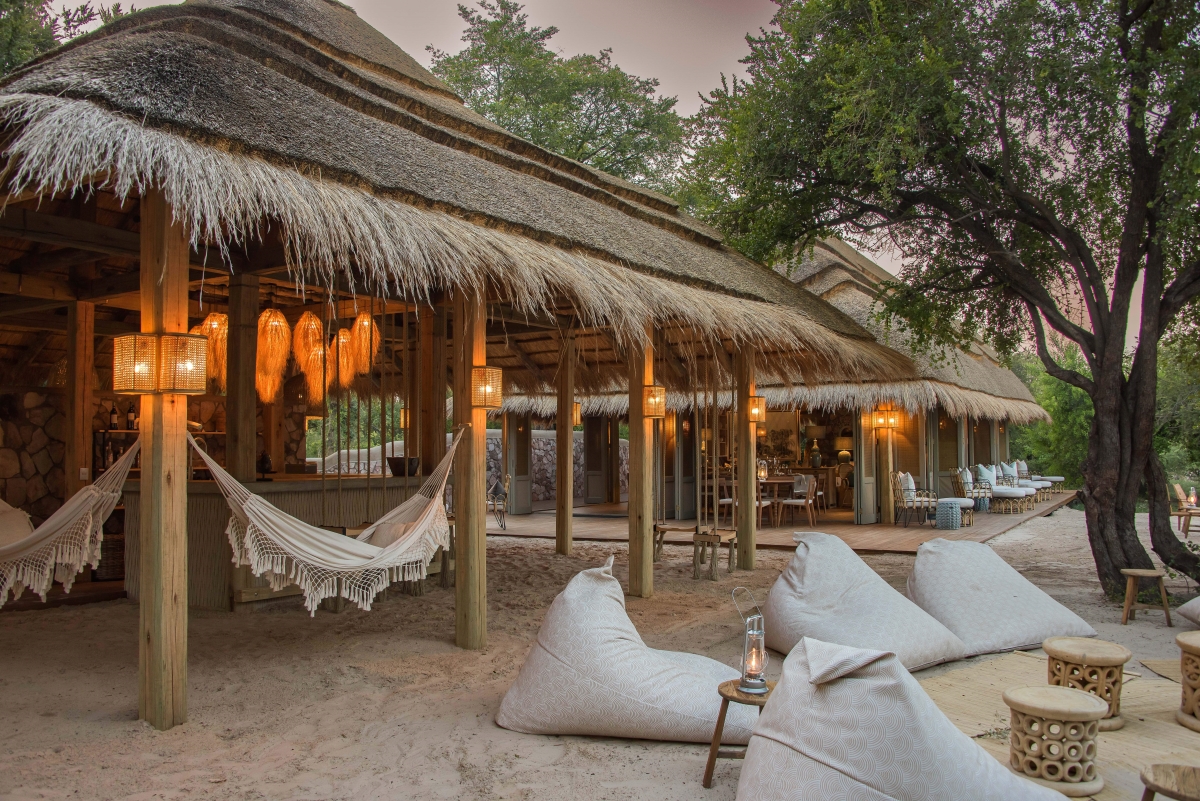
The lodge epitomises “barefoot luxury”, Image Credit: Mpala Jena
There’s no wonder Mpala Jena consistently ranks among the best lodges in Victoria Falls. This intimate camp, with its thatched roofs and flowing canvas tents, makes luxury feel delightfully unpretentious. Each tent is a cosy, high-end retreat, complete with an outdoor bathroom with everything – yes, including a bathtub where you can soak while soaking in the river views.
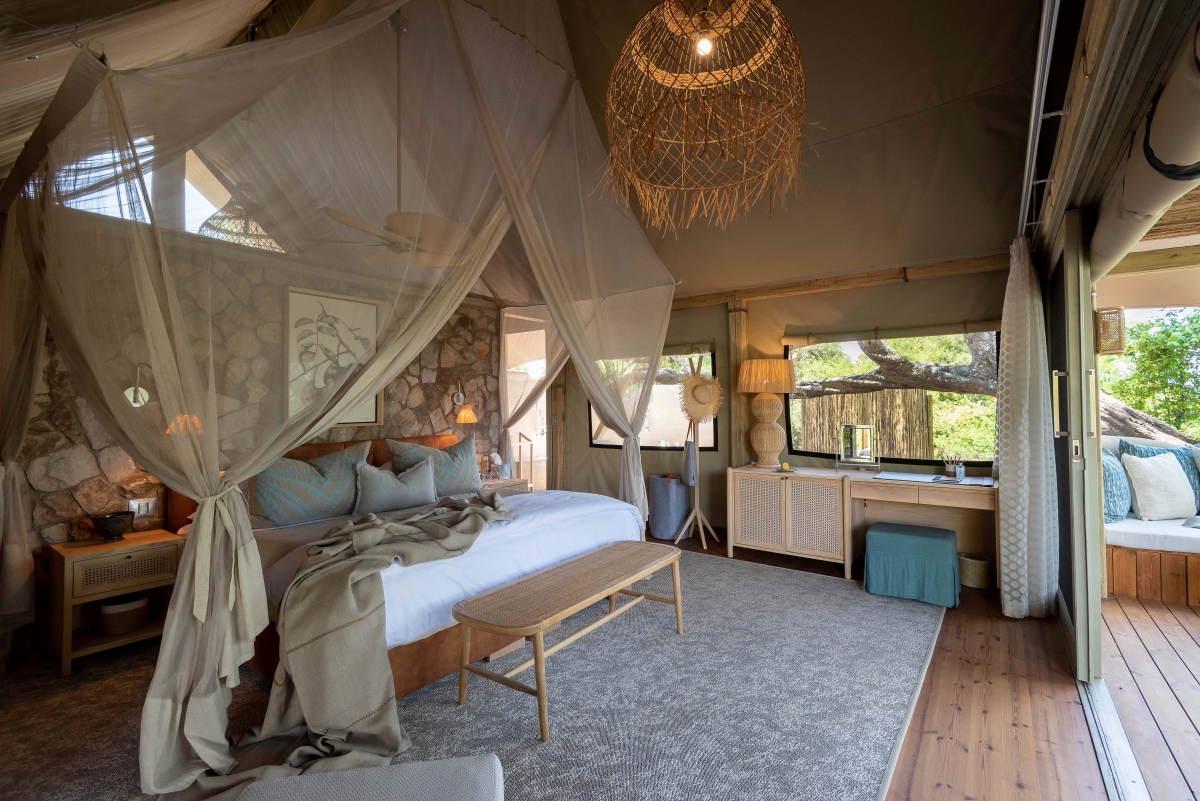
A cool, calming colour palette sets the scene, Image Credit: Mpala Jena
7. Insika Lodge
Location: Zimbabwe, Outskirts of Victoria Falls Town (5.5 kilometres from Victoria Falls)
Insika Lodge, meaning “Pillar of Strength” in isi-Ndebele, takes its name from the iconic mist of Victoria Falls. Located just three kilometres from town and surrounded by national parks, Insika offers the perfect blend of nature and convenience. With complimentary transfers, you’re never far from the heart of the action, making Insika one of the best lodges in Victoria Falls to experience both wilderness and the vibrant local scene.
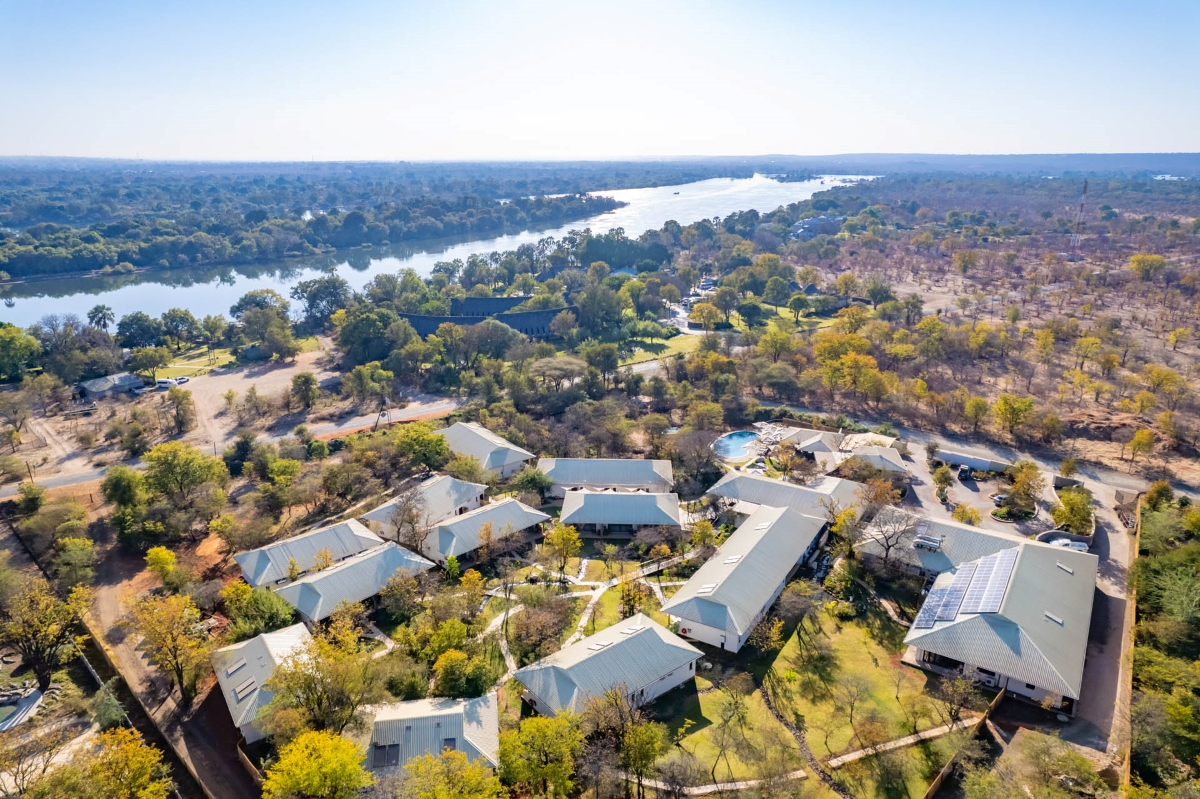
Insika is surrounded by the astounding natural beauty of the area, Image Credit: Insika Lodge
At Insika, the main lodge is where you’ll want to kick back and soak up the good life. The sprawling decks and sparkling infinity pool overlook a Mopane woodland and waterhole, setting the scene for some serious relaxation. As the sun dips, the firepit and bar deli call for fireside feasting and swapping stories. And when it’s time to retreat, the luxurious rooms, as well as a spa and sauna, offer the perfect end to your day.
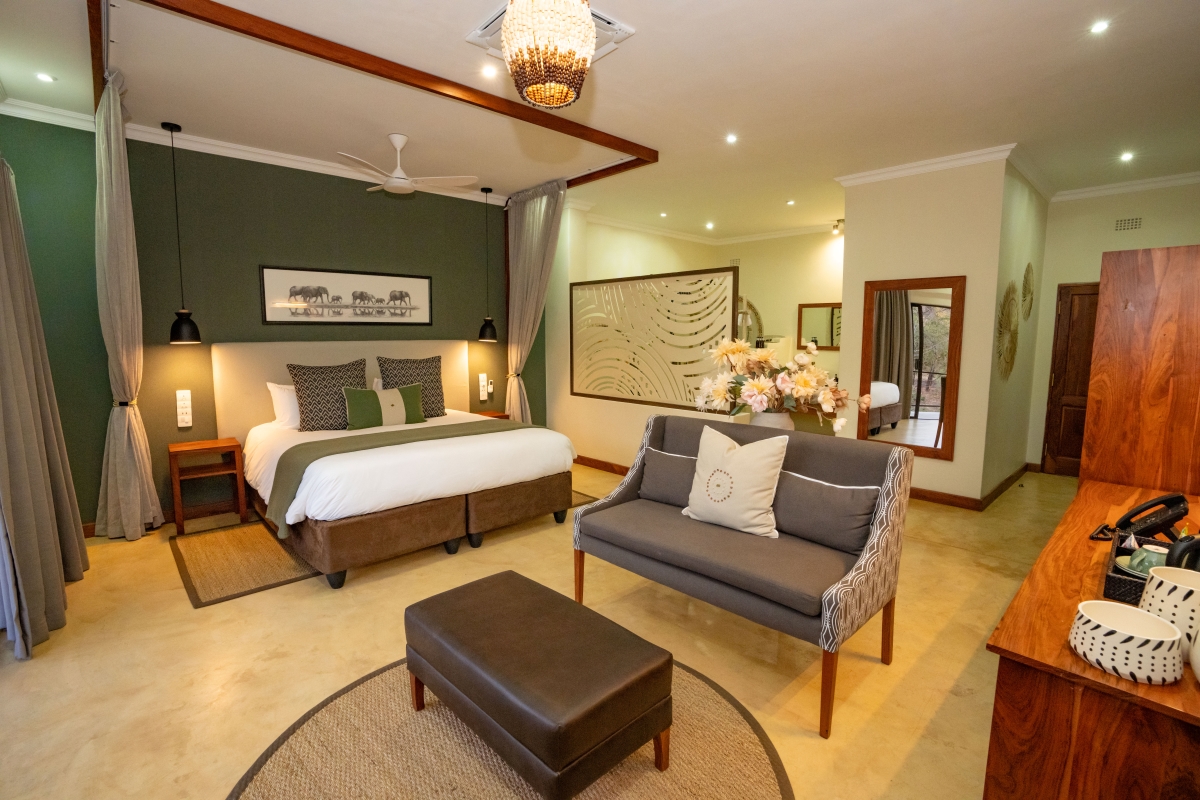
Decorated rooms offer a rare African elegance, Image Credit: Insika Lodge
8. Mbano Manor Hotel
Location: Zimbabwe, Victoria Falls Town (5 kilometres from Victoria Falls)
Mbano Manor Hotel, brought to life by a trailblazing African woman hotelier, is where luxury meets the wild with a sustainable twist. Tucked away in an ancient teak forest, this family-run lodge offers a truly bespoke African safari experience. Wander along the winding paths that connect the elegant accommodations to the hub of the hotel, all while surrounded by nature’s grandeur – a setting that feels both exclusive and authentically African.
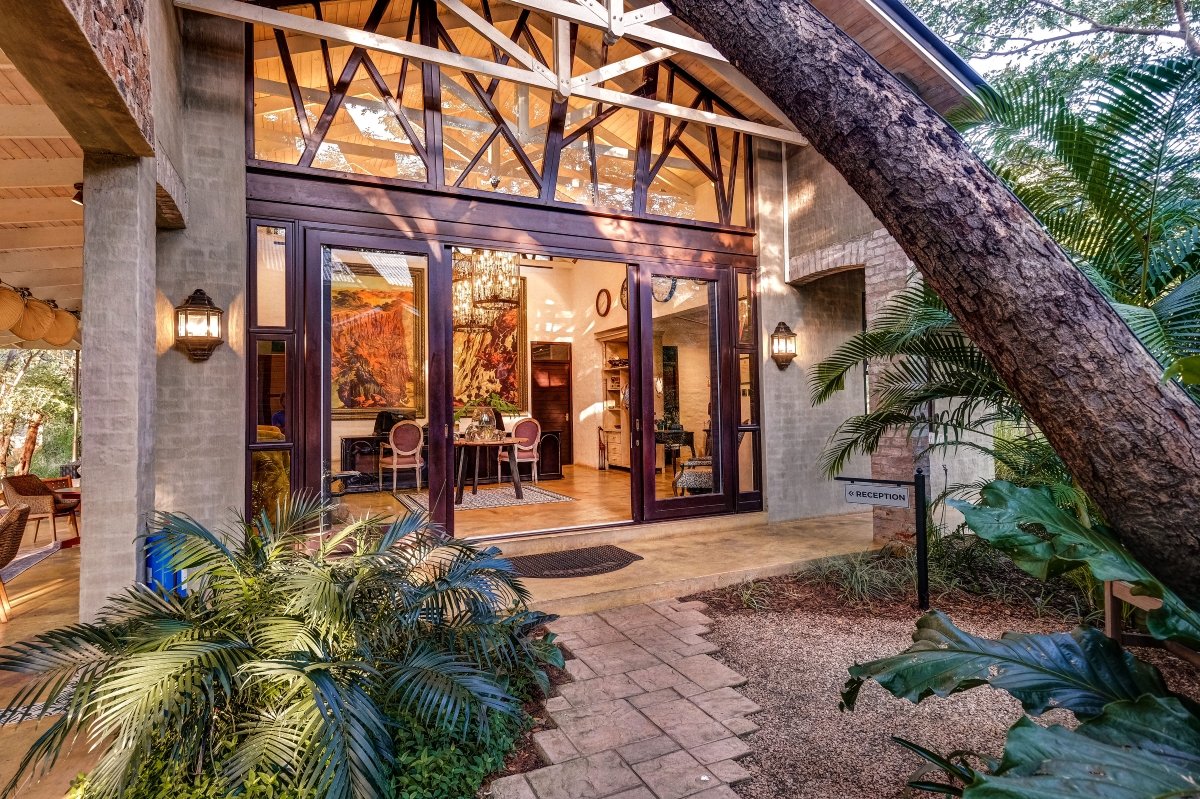
A luxury boutique hotel in an ancient teak forest, Image Credit: Mbano Manor
The design is all about timeless sophistication. Think bungalow-style suites, each with sky-high timber-beamed ceilings and big, beautiful windows that flood the space with natural light. Inside, you’ll find everything you need including a spacious lounge, a plush king-size bed, a refreshment nook, and a bathroom complete with a walk-in dressing room. This is where style meets substance, with a distinctive African flair.
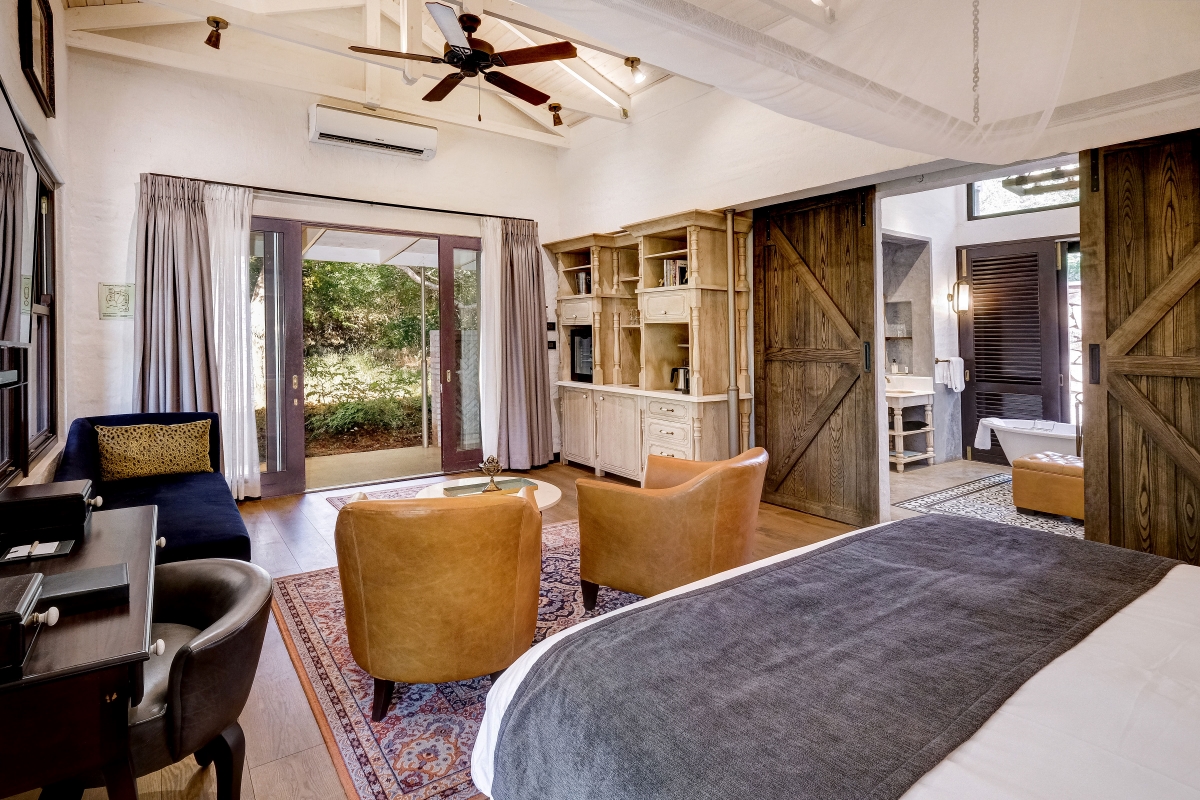
Secluded guest suites offer comfort and privacy, Image Credit: Mbano Manor
9. Matetsi River Lodge
Location: Zimbabwe, Matetsi Private Game Reserve (40 kilometres from Victoria Falls)
Combine the largest waterfall on earth with a classic African safari. Matetsi River Lodge overlooks an exclusive section of the Zambezi – ideal for spotting hippos, crocodiles, buffalos and elephants from the comfort of your luxury suite. All rooms ooze with space and modern, natural design. And don’t forget to make use of your outdoor rain shower and your private plunge pool with river views.

Indulge and discover the precious natural wonders of Zimbabwe, Image Credit: Matetsi Victoria Falls
Choose adventure or relaxing – it’s completely up to you! Matetsi offers activities such as game drives, walking safaris, canoeing and boat cruises. Or unwind during a massage on the banks of the river. The spa therapists will make sure that all your stress is melted away in minutes.
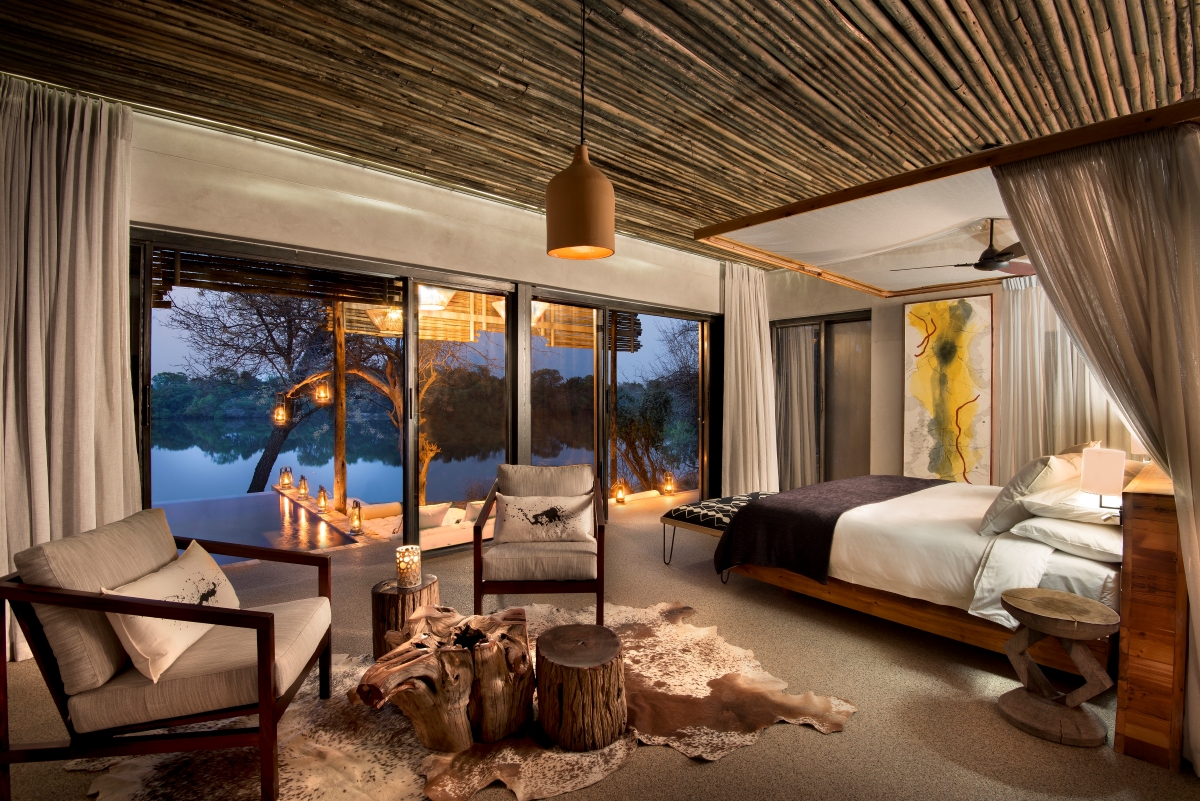
Cool and elegant interiors create a contrast to the rugged exterior, Image Credit: Matetsi River Lodge
10. Victoria Falls River Lodge
Location: Zimbabwe, Zambezi National Park (13 kilometres from Victoria Falls)
Close enough to see the mist of the waterfalls in the distance, yet far enough away from the crowds to reconnect with nature – Victoria Falls River Lodge is your new exclusive home away from home. Explore the natural wonder in true five-star style!
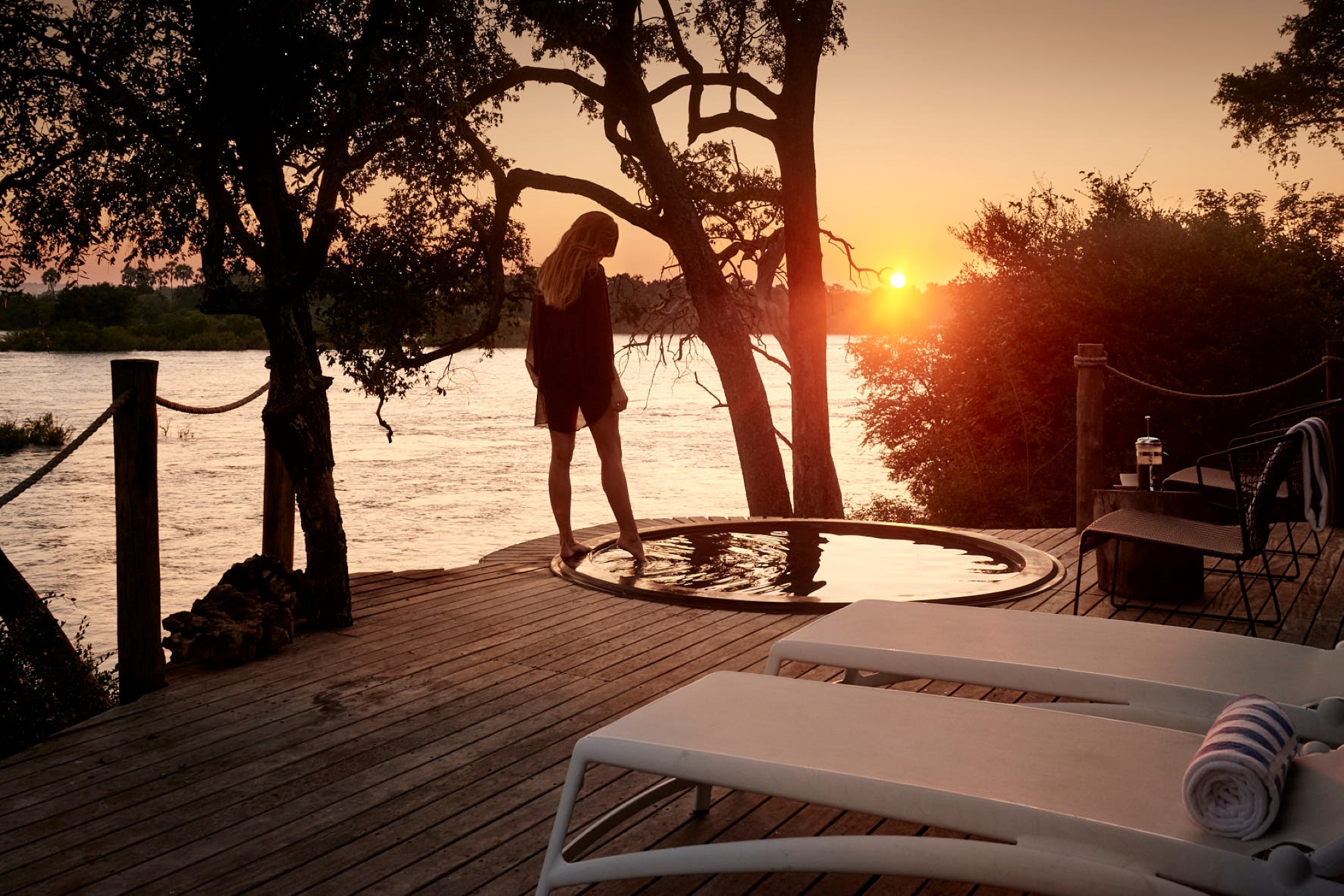
This pioneering retreat sits gracefully on the banks of the untamed Zambezi River, Image Credit: Victoria Falls River Lodge
The lodge’s luxury tented suites are perfect for families and come with private decks as well as plunge pools that boost uninterrupted Zambezi views. For absolute privacy, book one of the luxury treehouses that are located on a tiny, private island in the river. To sum up, Victoria Falls River Lodges is simply one of the very best lodges in Victoria Falls!
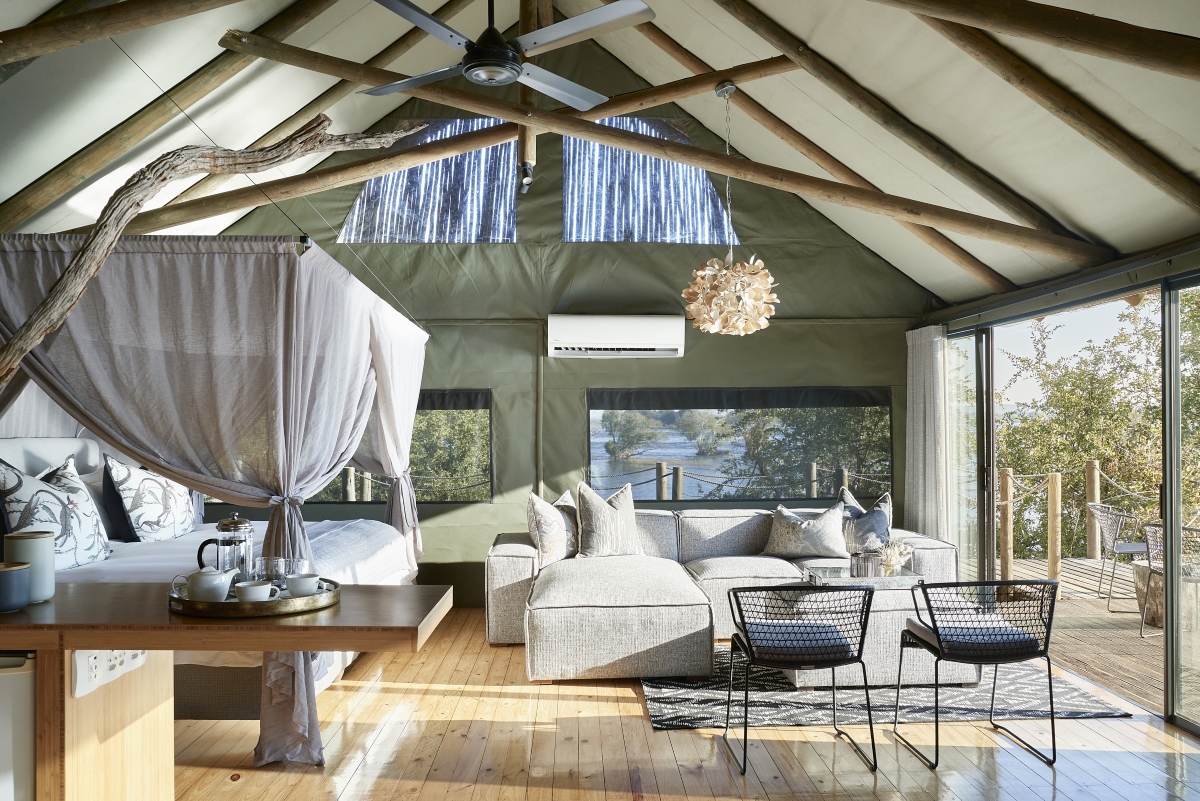
You’ll be swept away by the luxury tented suites, Image Credit: Victoria Falls River Lodge
11. 528 | Victoria Falls
Location: Zimbabwe, Victoria Falls Town (3 kilometres from Victoria Falls)
Adding a distinct flair to our collection of the best lodges in Victoria Falls, 528 Victoria Falls is a lively retreat bursting with personality. Here, neutral tones meet vibrant pops of colour across three beautifully designed floors. Thoughtfully curated artefacts and bespoke elements created by local artisans make every corner of this property a celebration of the area’s rich talent, creativity and heritage.

528 has personality written all over it, Image Credit: 528 | Victoria Falls
528 | Victoria Falls offers a boutique experience with twin, double and triple rooms. The en-suites, with their bronze washbasins and hand-carved shower screens, are a stylish touch. Additionally, peppered throughout the main area are many insta-worthy nooks, perfect for capturing that perfect shot. But the true highlight? The Treetop Bar on the third floor, where you can sip your favourite drink while taking in the distant views of the Zambezi and Zambia.

The beautiful boutique guest house is adorned in meaningful aesthetics, Image Credit: 528 | Victoria Falls
12. Batonka Guest Lodge
Location: Zimbabwe, Outskirts of Victoria Falls Town (2.2-kilometres from Victoria Falls)
Well, are there any affordable options among the best lodges in Victoria Falls, you may ask? And the answer is yes! Batonka is an eco-friendly, entry-level lodge that doesn’t skimp on charm or convenience. Just over two kilometres from the Falls, and a mere one kilometre from town, Batonka puts you close to all the action without breaking the bank.
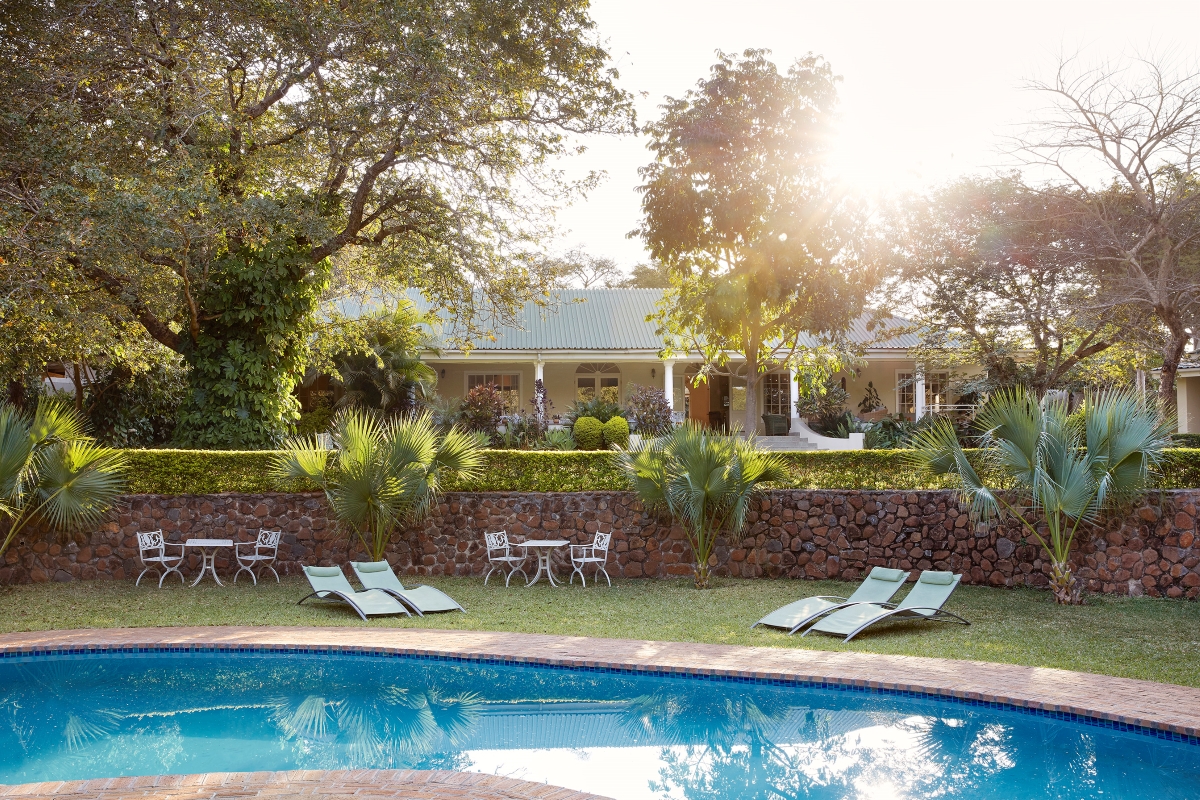
Your poolside haven. Image Credit: Batonka Guest Lodge
So, why choose Batonka? For starters, the lodge’s dining area spills onto a spacious outdoor terrace with views of the garden and sparkling pool. You’ll also have your pick of well-appointed rooms, from garden and pool view options to the stunning Flame Lilly Wing, all decked out in elegant, contemporary décor that nods to Victoria Falls’ colonial past and African flair. Perfect for families, groups, and savvy travellers, Batonka is the budget-friendly choice that delivers!
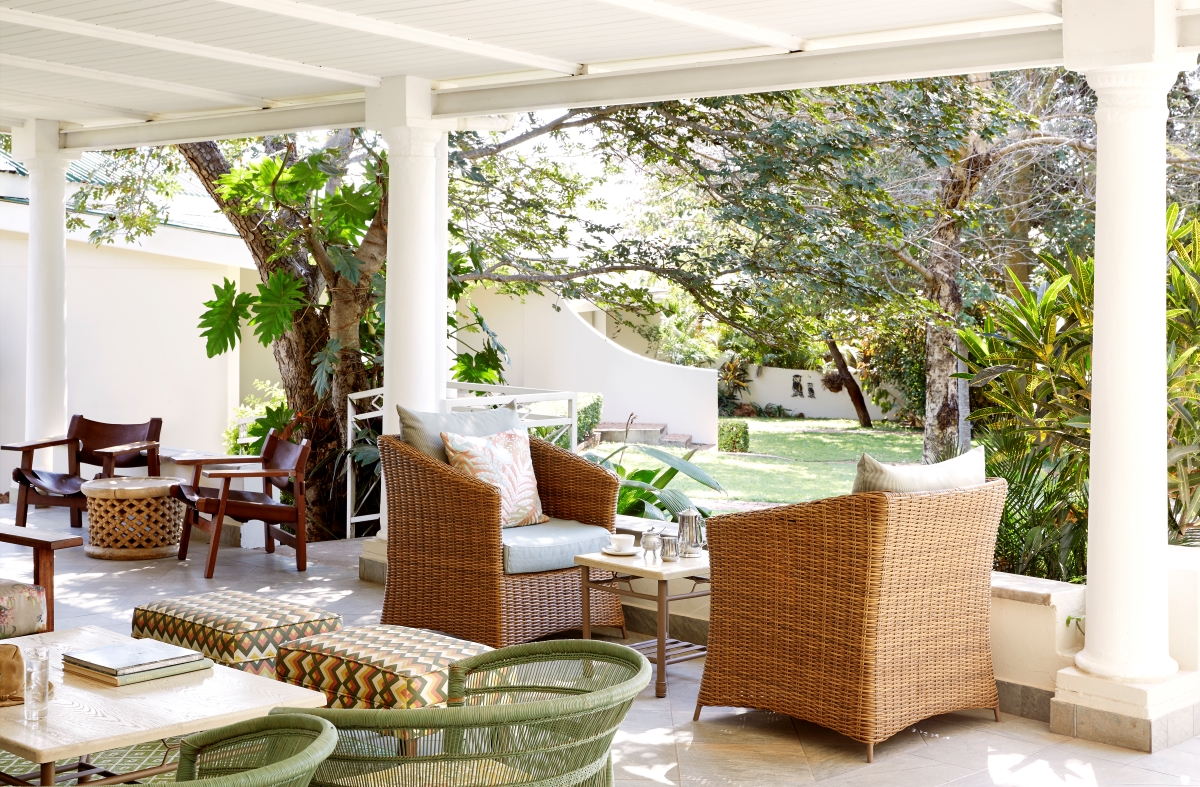
Enjoy the beautiful verandah opening out onto the surrounding gardens, Image Credit: Batonka Guest Lodge
“Waterfall” You Waiting for?
Is visiting a majestic waterfall at the top of your bucket list? Simply contact our Rhino Africa Travel Experts to plan your stay at one of the best lodges in Victoria Falls. The great thing about Vic Falls is that you can easily combine the natural wonder with a Big 5 safari. We can’t wait to welcome you to Africa!
Featured Image Credit: Old Drift Lodge
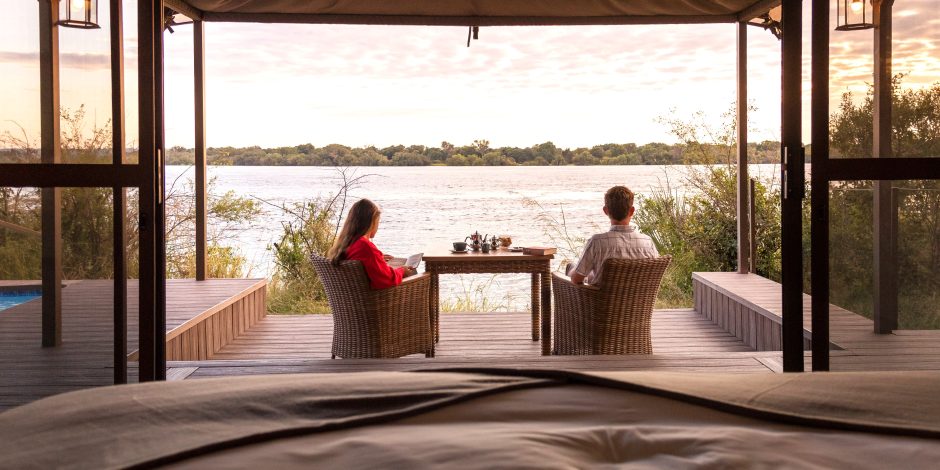
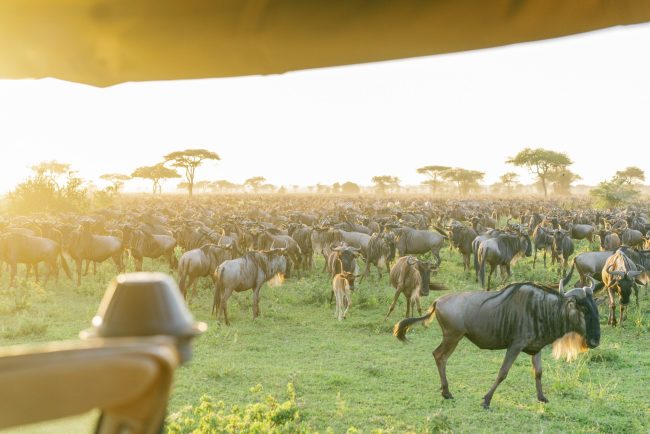
When is the Best Time to Visit the Serengeti?
The Serengeti in northern Tanzania is one of Africa’s most spectacular national parks. The incredible density and variety of wildlife in this county-sized wildlife haven are second to none. While the Great Migration – with up to two million grazers on the move – rightly attracts most of the attention, you […]
TanzaniaThe Serengeti in northern Tanzania is one of Africa’s most spectacular national parks. The incredible density and variety of wildlife in this county-sized wildlife haven are second to none. While the Great Migration – with up to two million grazers on the move – rightly attracts most of the attention, you could still have the greatest luxury safari experience of your life if you miss it. But when is the best time to visit the Serengeti? Here’s a breakdown of the seasons and their effect on your game-viewing experience and the movements of the migratory herd.
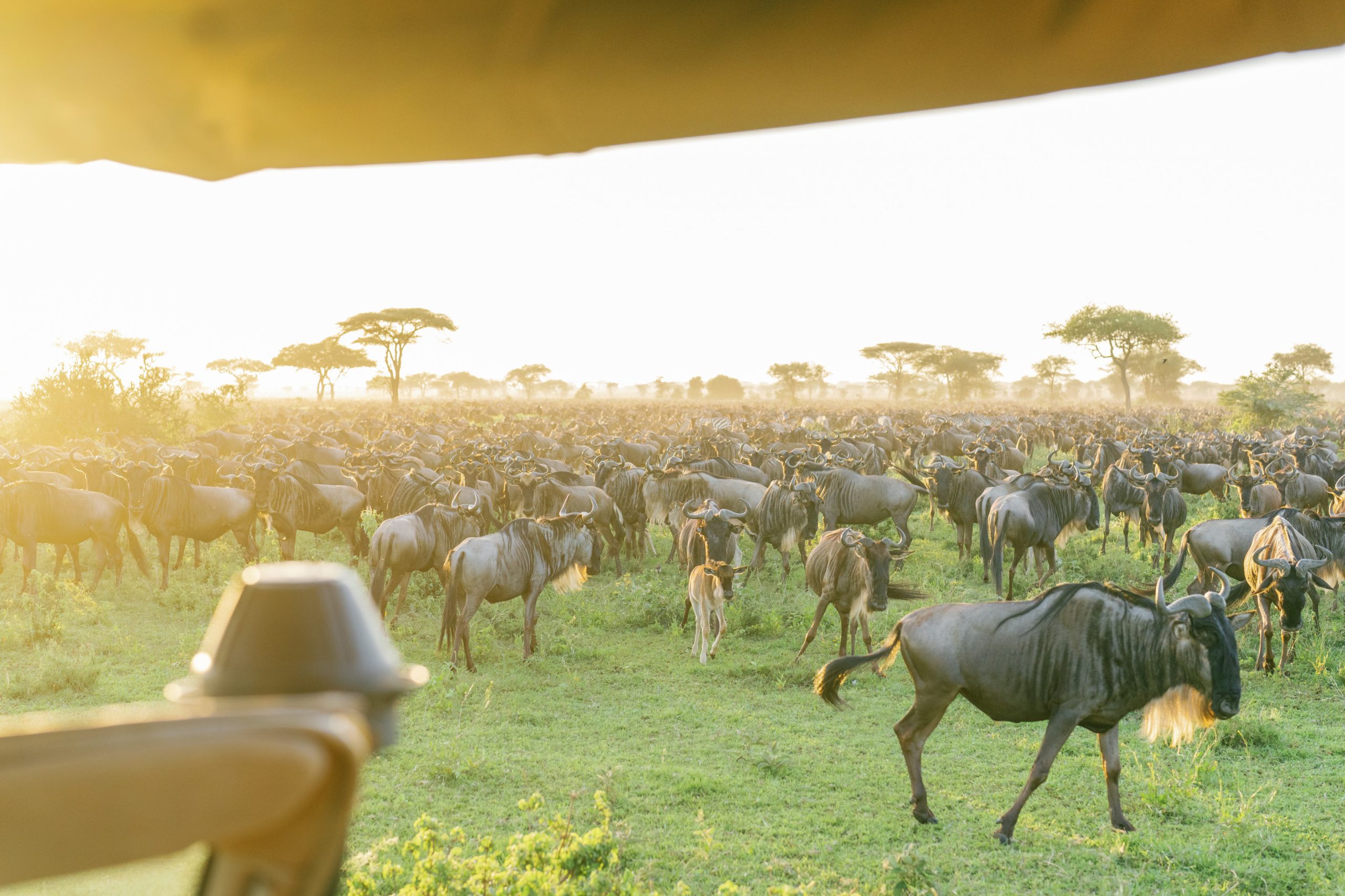
A year-round safari destination, Image Credit: Serengeti Bushtops Camp
January-February: The Short Dry Season
After the short rains of the previous two months, the southern Serengeti is blanketed in short green grass. Therefore, the Great Migration entourage settles here to feed and calve. Permanent residents of the southern plains also calve during this time, so you’ll see many newborns, from elephant calves, lion cubs, cheetah pups, wildebeest calves, zebra fouls and more.
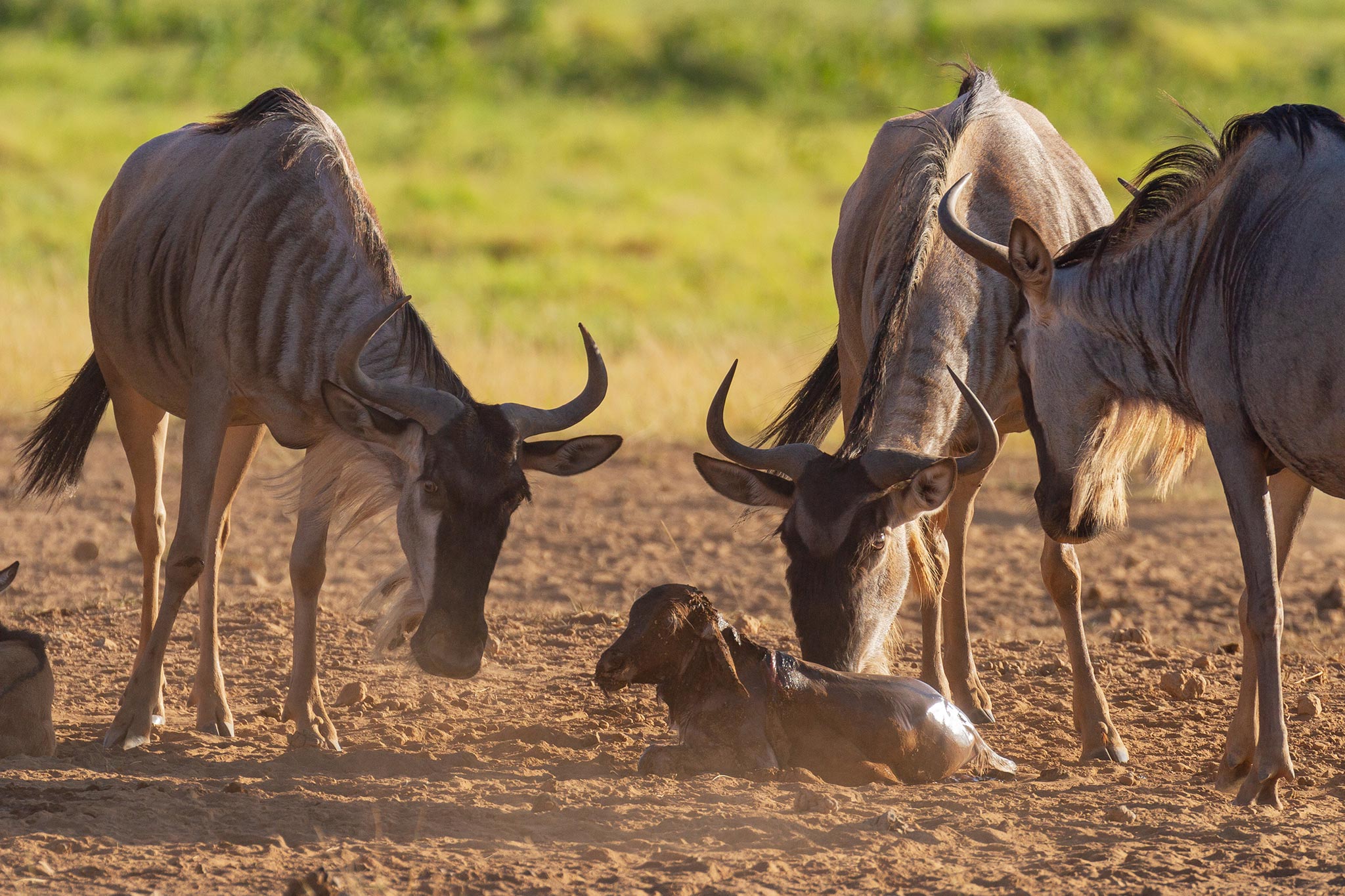
Imagine seing a newborn wildebeest making its debut into the world!
Chances are good that you’ll see actual births in progress, followed by the wobbly first steps of many little ones. Of course, this also means that the circle of life is laid bare with intense predator activity. Lions, cheetahs, leopards, African wild dogs and hyenas pick off the young and old with relative ease. Most calving happens in February, making this month one of the best times to visit the Serengeti to experience the Great Migration and general game viewing.
While technically a dry season, you may still get rain showers during this time. All the better for cooling things off and keeping the visitor numbers lower than the peak dry season.
Weather
- Hot, humid with occasional heavy rainstorms
Safari highlights
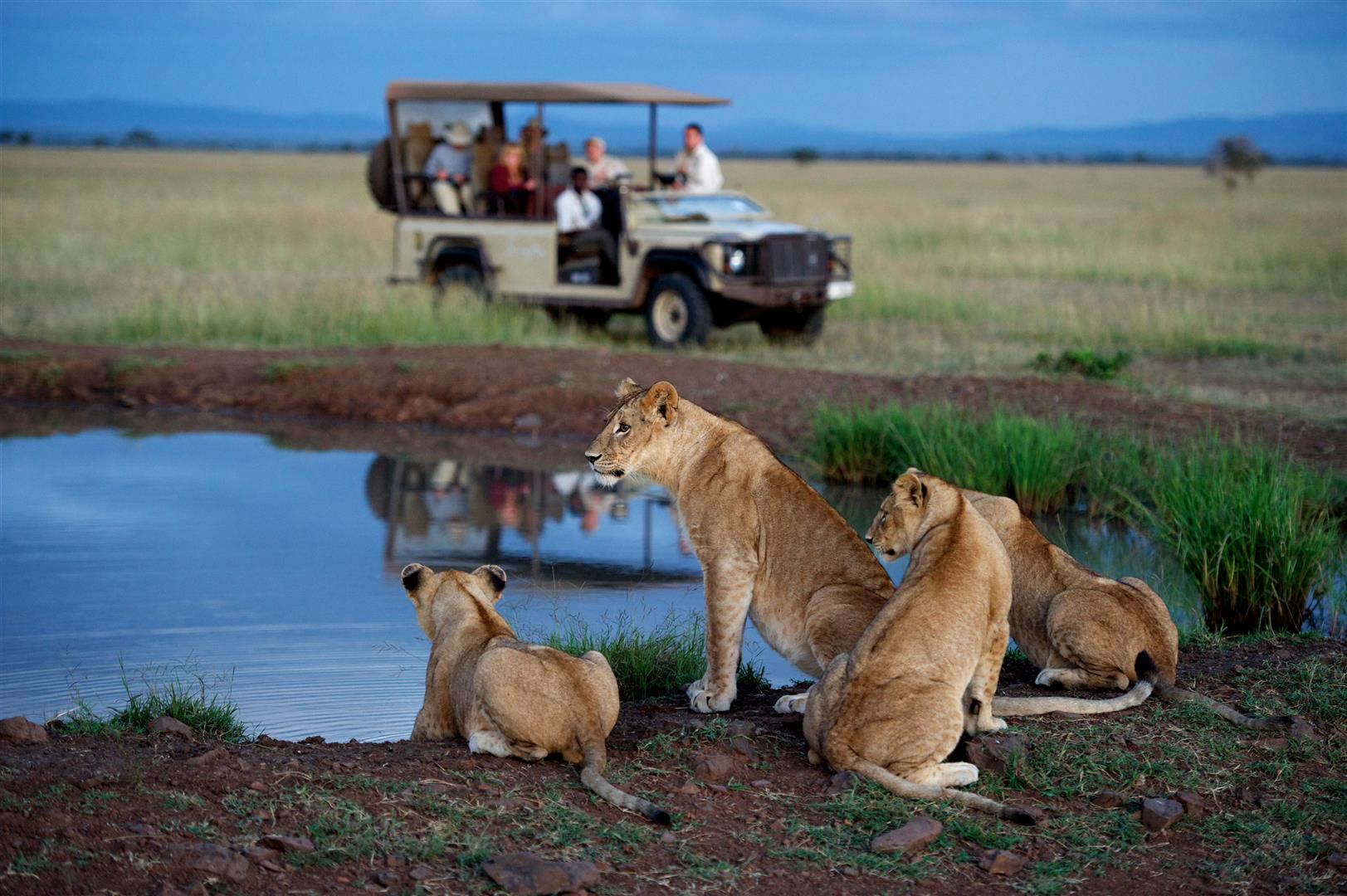
The short dry season allows for incredible predator sightings, Image Credit: Singita Serengeti Lodge
March-May: The Longer Rainy Season
Starting from late March, you can expect daily thunderstorms and a slight drop in temperature after the pre-rain build-up. As a result, it can get quite hot and humid. Migratory birds arrive, and the Wildebeest Migration drifts west and northwards as the newborns build up their strength for their first adventure. Furthermore, this is also the start of the rutting season, with many species jostling for pole position.
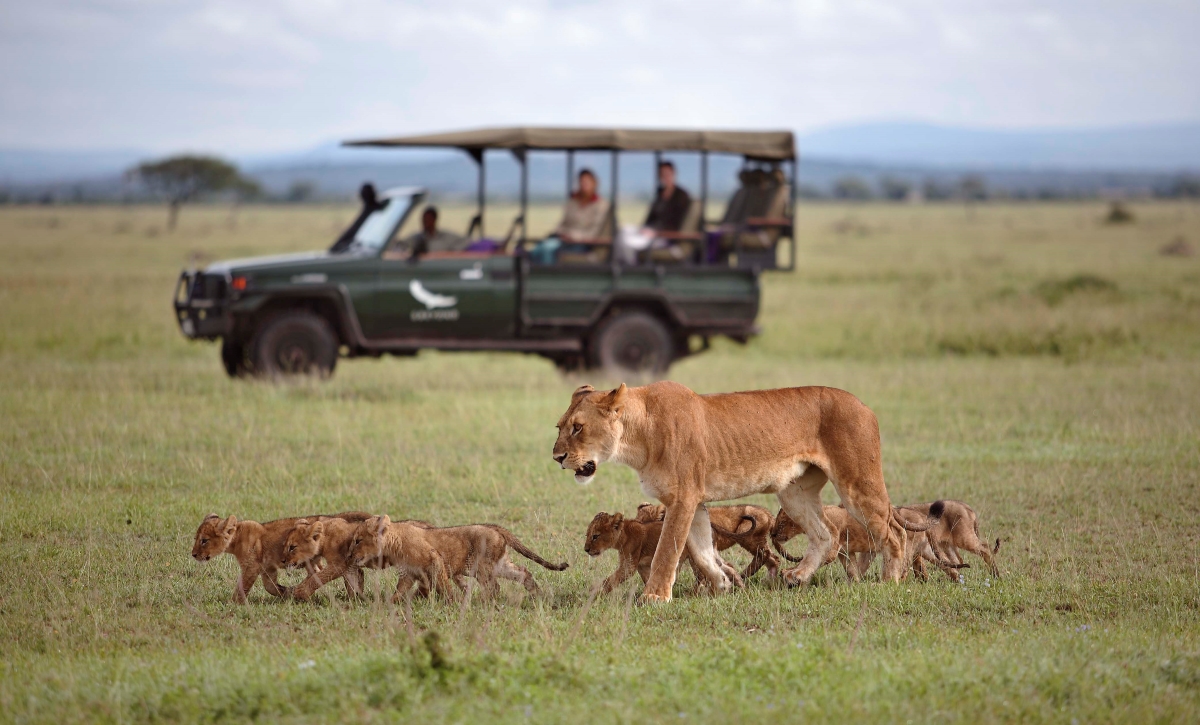
The Serengeti is home to a thriving predator population and diverse birdlife, Image Credit: Grumeti Serengeti River Lodge
General game viewing certainly doesn’t disappoint in the wet season. With most wildlife being territorial, you’ll still see plenty of lions, leopards, cheetahs and the Big 5 on the open plains, even in areas where the Great Migration is not around. The Serengeti’s temperate climate and flat plains allow for excellent general game viewing even during the rainy season. Driving conditions and daily plans may be a bit less predictable, but your safari gets all the more exciting because of it.
Some of the more remote and mobile safari lodges close for the long rains, but many remain open all year round, and visitor numbers are greatly reduced. The south receives about a third of the rainfall compared to the north of the Serengeti. A safari in the western and central corridor promises incredible migration sightings – without large tourist crowds. This alone could make the rain season the best time to visit the Serengeti for some.
Weather
- Warm to hot and humid with frequent heavy thunderstorms
Game viewing highlights
- Good general game viewing
- Migratory birds arrive, and it’s rutting season
- The Great Migration begins its northwestward trek, gaining pace as the young gain their strength
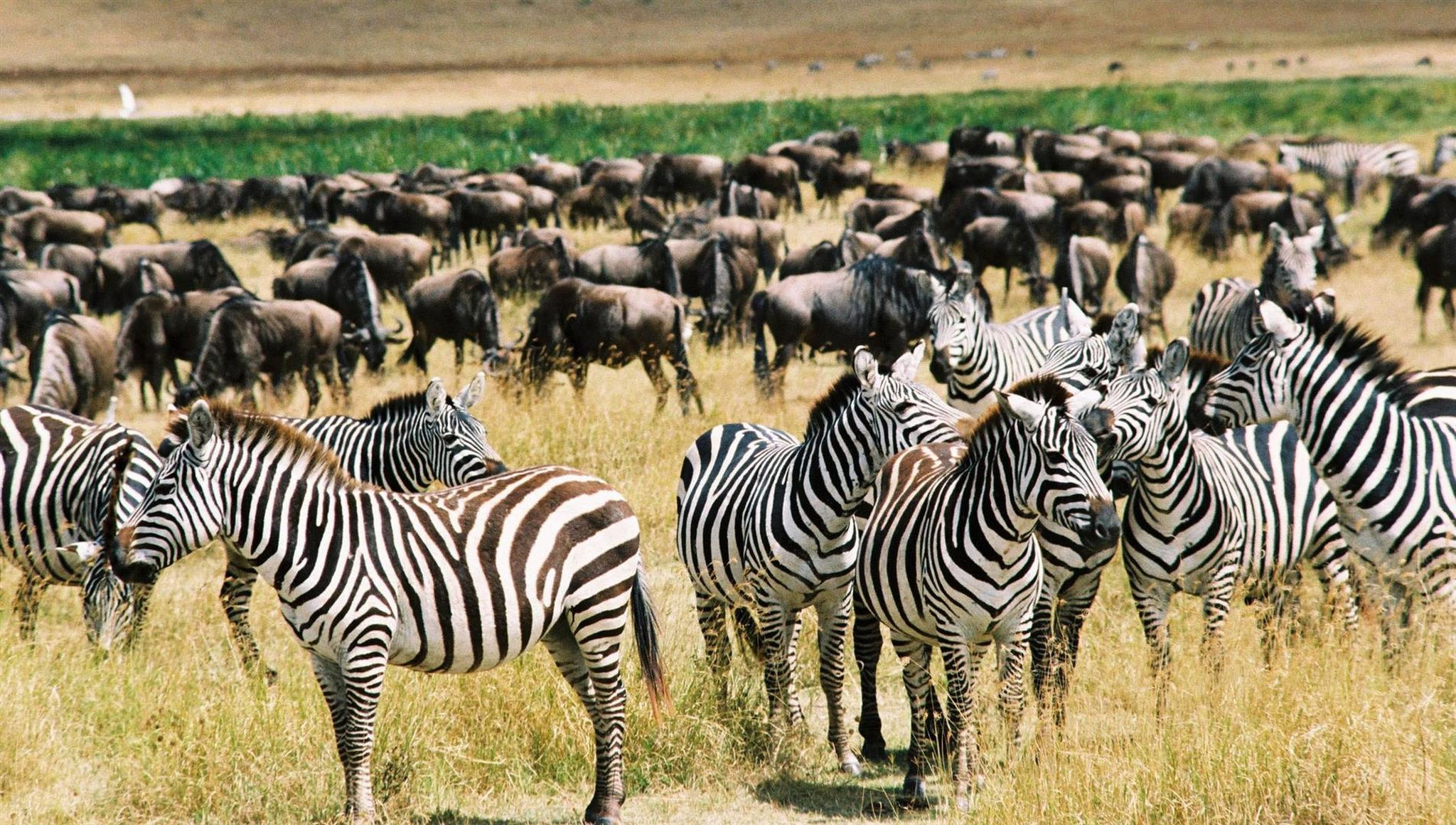
Zebras often join the Great Wildebeest Migration
June-October: The Dry Winter Season
The rains usually taper off and disappear by June, ushering in prime safari season for the Serengeti. During this time, game viewing is at its best, with the dry grasslands making visibility even better, and you can see greater concentrations of wildlife at water sources. In addition, now is also the best time to explore the Ngorongoro Crater and relax on the sandy beaches of Zanzibar.

Add a beach holiday in Zanzibar to your itinerary
Cooler conditions mean fewer mosquitoes and other summertime critters, and the weather is generally very pleasant. Mornings are cold on the open plains in an open safari vehicle, so you’ll be grateful for any extra layers you’ve packed.
The Great Migration herd moves through the northern corridor of the Serengeti, bunching up before the crossings of the Grumeti River and Mara River. Around September and October, most of the herd has crossed over into Kenya’s Maasai Mara National Reserve. As a result of the excellent game-viewing conditions, exciting Migration river crossings, and comfortable weather conditions, the long dry season is widely considered the best time to visit the Serengeti.
Weather
- Warm, dry, clear days with cold nights and early mornings
Game viewing highlights
- General game viewing is excellent throughout the national park
- Thrilling river crossings near the border of Kenya
- Great time for a bush and beach holiday by combining safari in Serengeti with Zanzibar

The Great Wildebeest Migration trying to pass safely through the river
November-December: The Short Rainy Season
By early November, the rains arrive, delighting the parched land and its inhabitants. The downpours are short-lived and often at night, so they seldom interfere with your safari activities. Most of the safari lodges and camps remain open during these shorter rains.
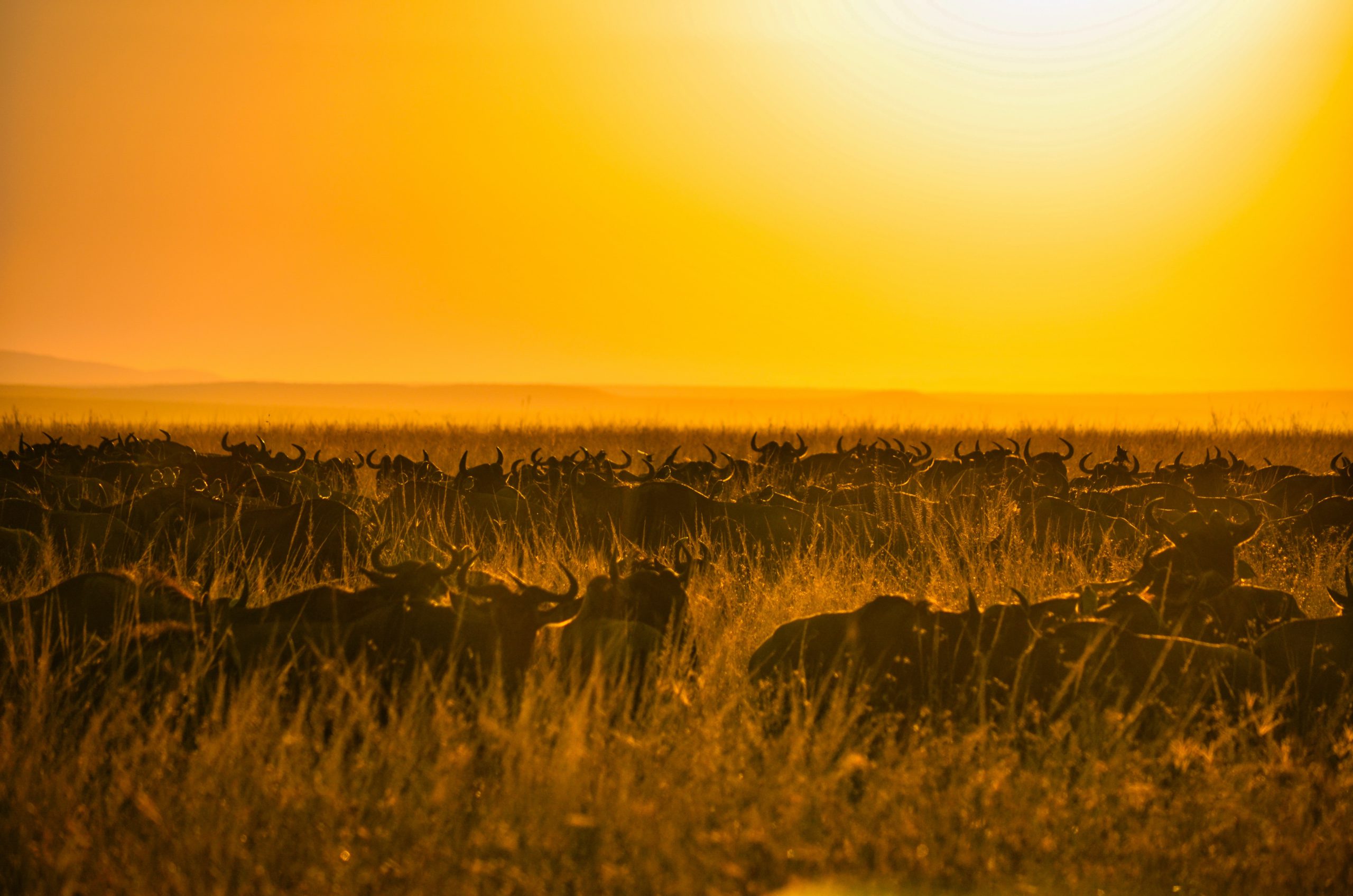
Hot days with thunderstorms can be expected in November and December
The Great Migration concentrates along the eastern boundary of the Serengeti, aiming to arrive at the southern plains in time for calving season all over again.
Game viewing is still excellent throughout the national park, thanks to the high numbers of animals and good visibility across the savannah. Afternoon thunderstorms quickly clear up, leaving the crisp summer light above a lush expanse of the African wilderness. In other words, it’s a photographer’s dream.
Weather
- Hot, humid days with frequent short-lived thunderstorms
Game viewing highlights
- The Great Migration concentrates in the east
- Good game-viewing throughout the national park
- Spectacular thunderstorms and lush scenery
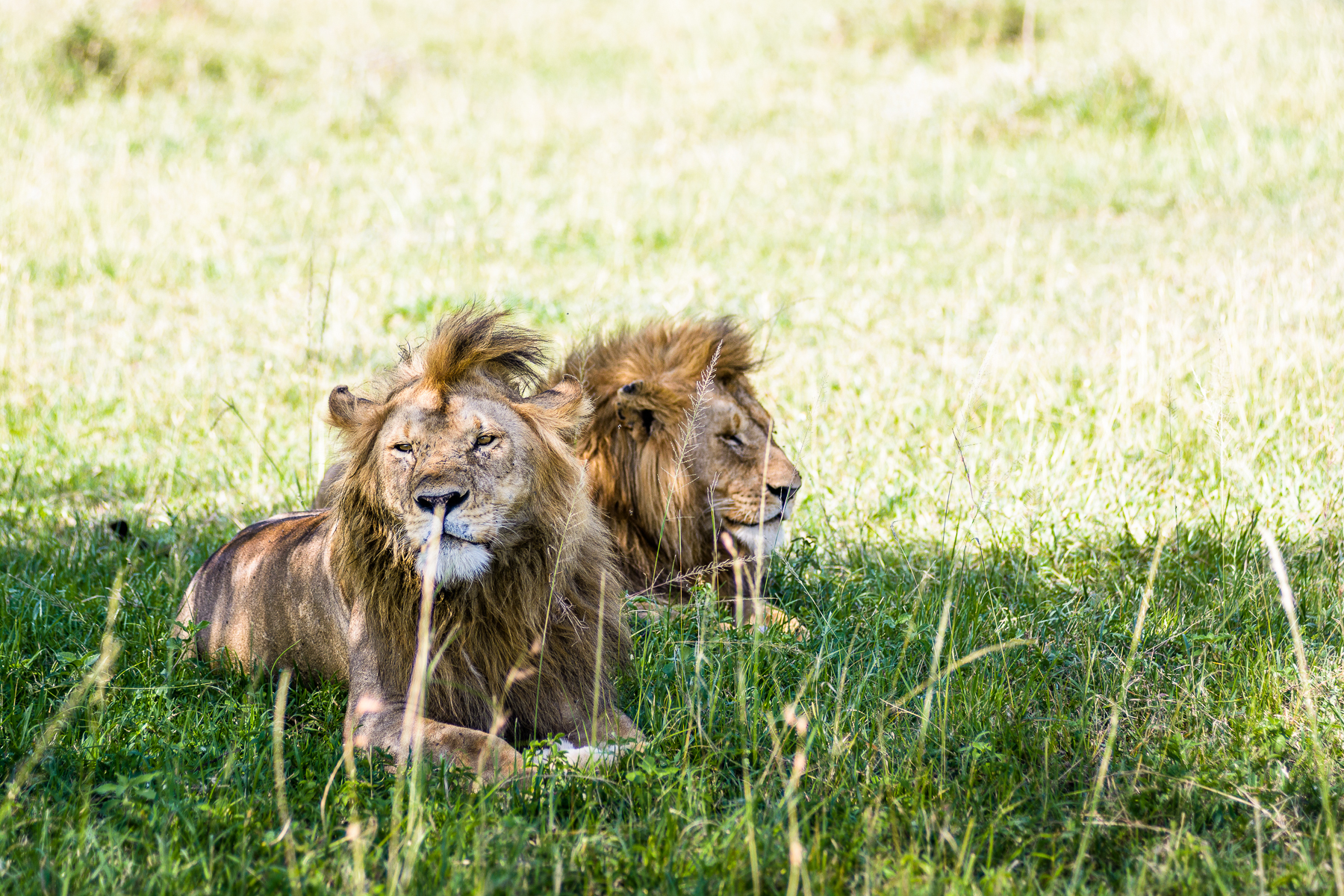
Get your camera ready, Image Credit: Singita
So, When is the Best Time to Visit the Serengeti?
The best time to visit the Serengeti depends on how important the Great Migration experience is to you. So, if it’s the main reason for visiting the Serengeti, head north to experience a river crossing towards the end of the dry season.
If it’s the best of both worlds you seek – a general safari and the migration – consider January and February when the migration takes a hiatus for calving season, and the game viewing and predator activity are at their peak.
The Serengeti National Park is a year-round safari destination for general game viewing. Short grasses on the vast open plains offer good sightings of lions, leopards and cheetahs, as well as hyenas, African wild dogs, crocodiles and many smaller predators. Large herbivores are fully represented with elephants, rhinos, giraffes, large antelopes, wildebeest (obviously!), zebras, hippos and a host of smaller antelope and plains game. Last but not least, birding is also excellent, with many migratory species and resident raptors.
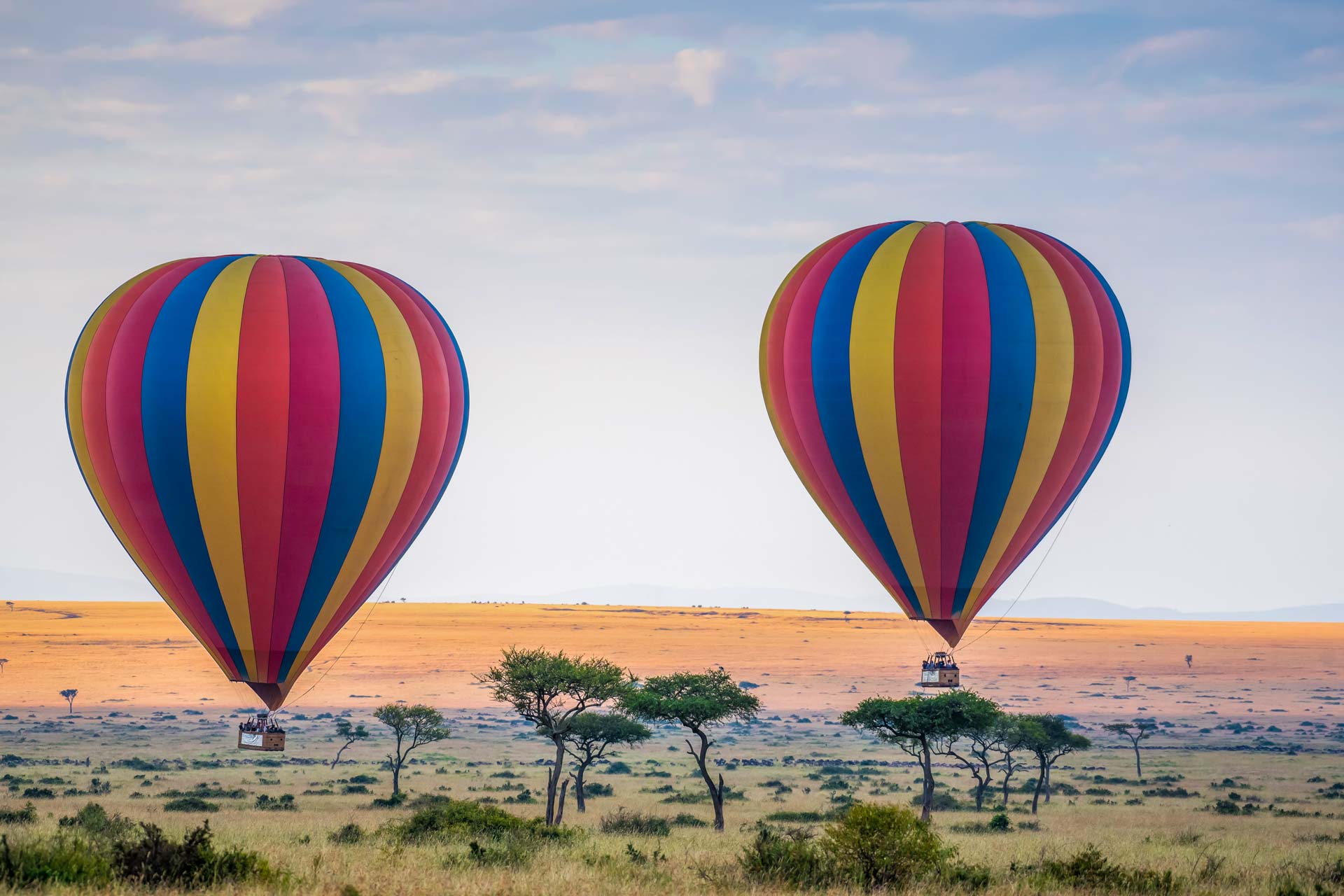
Go hot air ballooning over the Serengeti
Book Your Serengeti Safari Today
Ready to book your Serengeti safari with the World’s Leading Safari Company? Talk to one of our Travel Experts, who’ll help you plan your ultimate luxury safari experience.
Our Travel Experts have slept in the beds, tasted the food, and know all the ins and outs of an African safari to make your holiday not only stress-free but memorable. And as the world’s most-awarded safari company, no one knows Africa like we do! Let’s start planning!
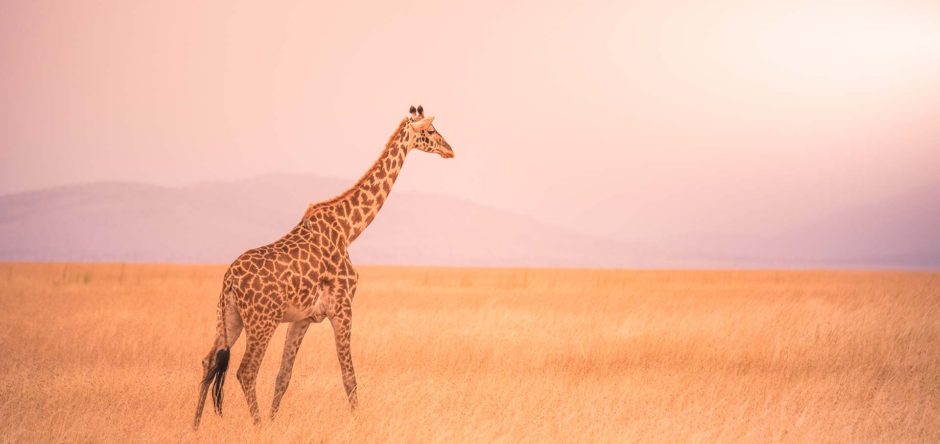
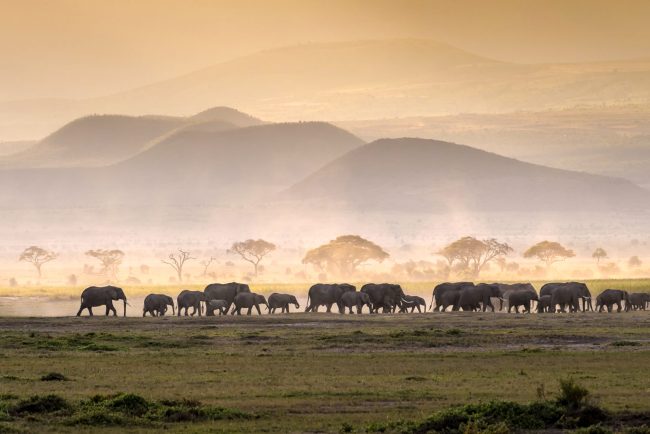
A Nyerere National Park Safari is Waiting for You
The lesser-known but oh-so-wild and beautiful Nyerere National Park offers a phenomenal slice of wilderness heaven, with dramatic landscapes teeming with wildlife. Go deeper into nature than ever before with incredible trekking adventures through the bush, expertly guided game drives and water safaris along the […]
TanzaniaThe lesser-known but oh-so-wild and beautiful Nyerere National Park offers a phenomenal slice of wilderness heaven, with dramatic landscapes teeming with wildlife. Go deeper into nature than ever before with incredible trekking adventures through the bush, expertly guided game drives and water safaris along the Rufiji River. Oh, and did we mention it’s Africa’s largest game reserve? So, there are so many little nooks to explore. Follow in our footsteps as we show you where to go and what to do…
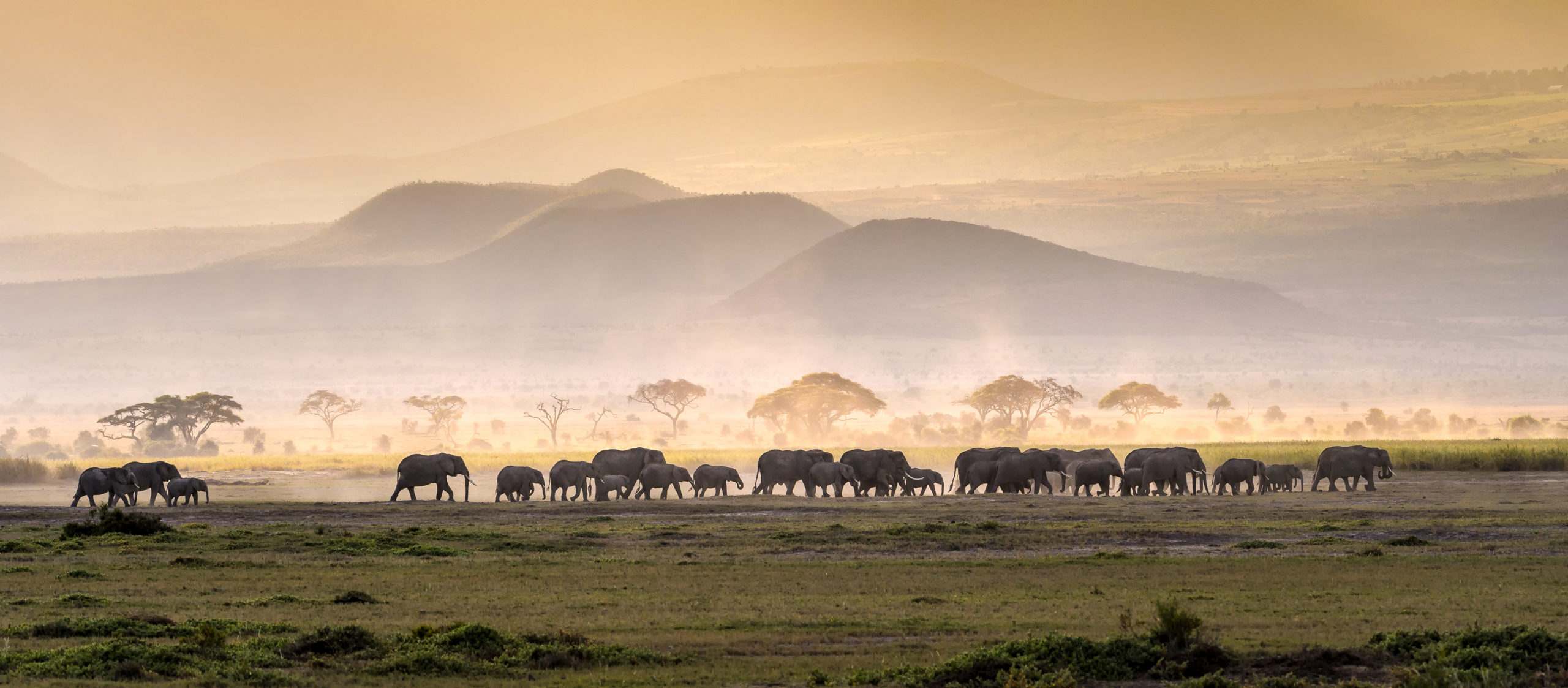
Tanzania is a hot commodity, so it’s definitely advisable to book well in advance
Welcome to Tanzania’s Largest National Park
The Nyerere National Park is massive. This conservation area is almost too large to fathom and over twice the size of the Serengeti, which makes for an incredible safari experience.
Plus, as an up-and-coming tourist destination, Nyerere National Park is more affordable and less frequented than its northern Tanzania counterparts. As a bonus, you’re unlikely to have others interrupt your photo ops. No need for Photoshop later!
A defining feature of the national park is the Rufiji River, which flows through the northern part of the reserve. Smaller interconnected oxbow lakes, swamps, and channels branch out of the main river, making it the largest river in Tanzania. One of our personal favourite ways to explore this magnificent river is on a boat safari, where you can watch large floats of crocodiles and pods of hippos in the water while enjoying a refreshing sundowner.
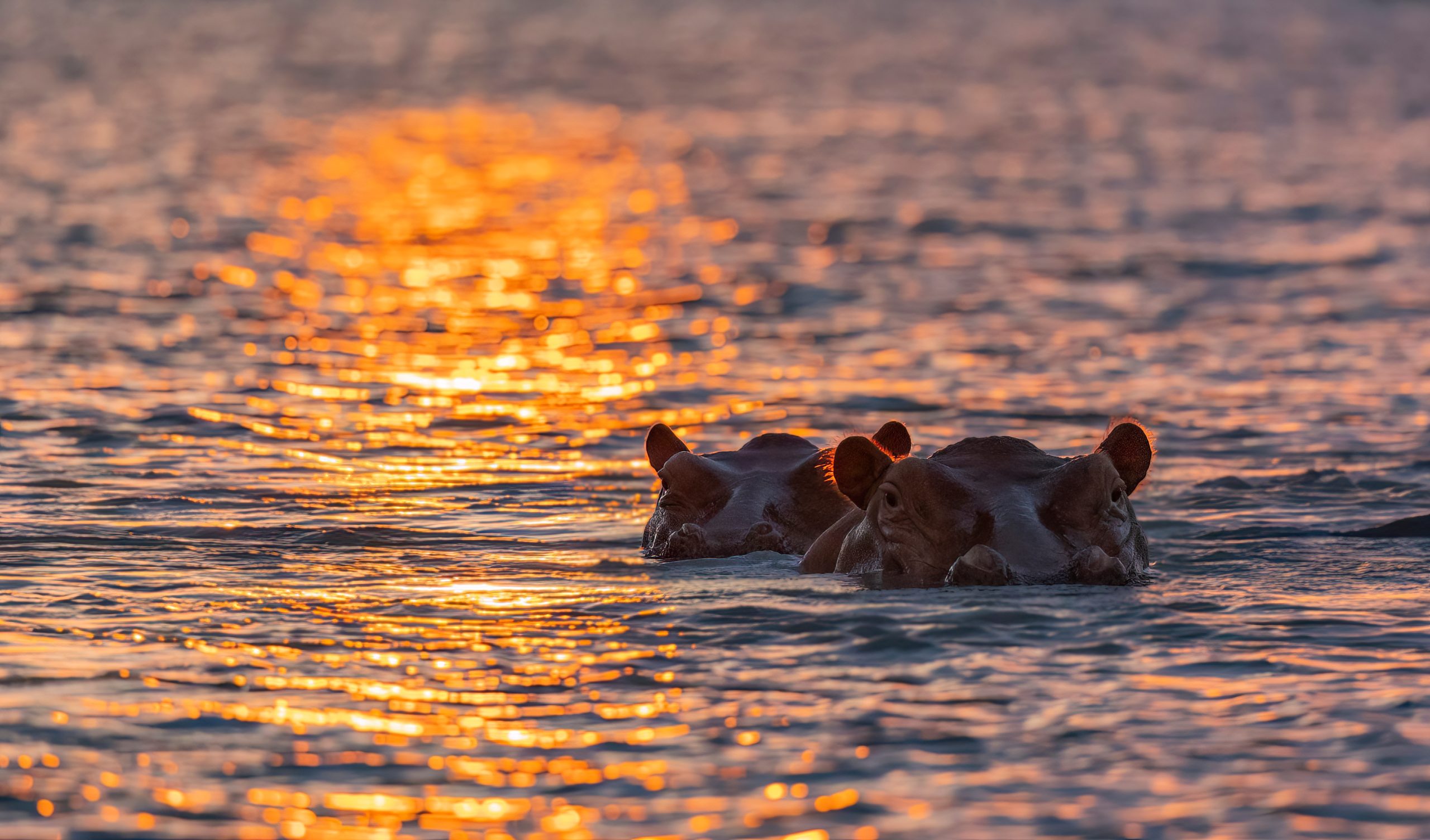
You’ll see animals everywhere, on the land and underwater
From Selous Game Reserve to Nyerere National Park
In 2019, the Government of Tanzania set new boundary lines within the existing Selous Game Reserve to create the Nyerere National Park. However, the wildlife are free to roam between the wilderness regions and while you’re on a safari here, you are too.
Under the protection and management of the Tanzania National Parks Authority (TANAPA), this area is dedicated to photographic tourism and improved on-the-ground anti-poaching protection.
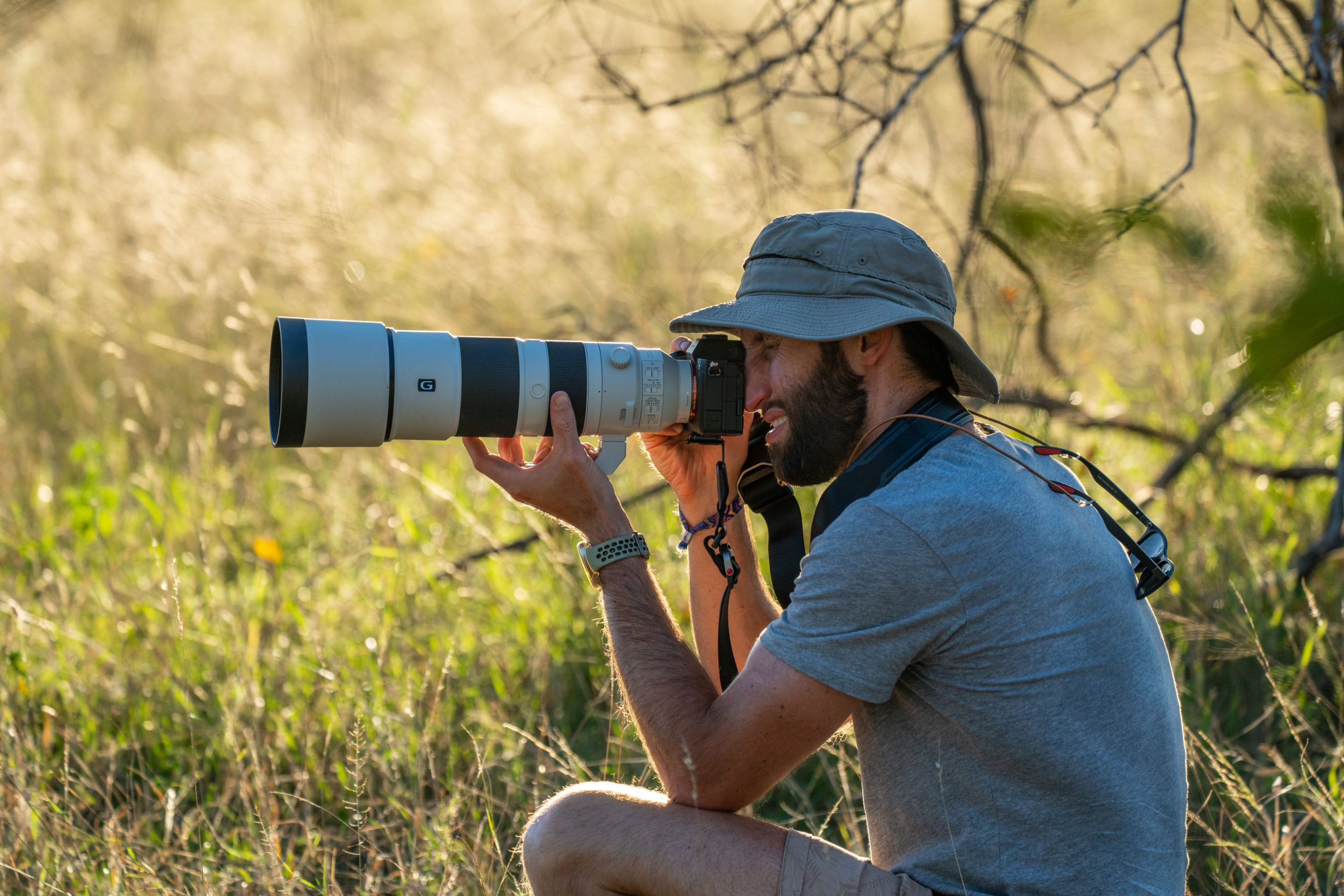
Professional and amateur photographers are welcome
What Wildlife Can I See While on Safari in Nyerere National Park?
Relatively undisturbed by humans, the national park’s diverse vegetation accommodates a great amount of flora and fauna. While on a Nyerere National Park safari, you can see the Big 5, namely elephant, lion, leopard, rhino (although sightings of black rhino are rare), and African buffalo. You can also see impressive concentrations of other predators like cheetah, spotted hyena and endangered African wild dog in action as they stalk their prey.
Because of Nyerere National Park’s size, there are plenty of opportunities to witness phenomenal wildlife moments – and not just those on land… The national park is home to over 450 species of birds, including species like the giant kingfisher, pink-backed pelicans, yellow-billed stork, Malagasy squacco heron, white-fronted bee-eaters, African skimmers, ibises, purple-crested turaco, and so many more.
Furthermore, a Rufiji River boat safari offers the vantage point of spotting crocodiles, hippos, and Nile monitors bathing on the banks.

The African wild dog is one of the world’s most endangered mammals
What Activities Can I Do in Nyerere National Park?
Game viewing is definitely your main priority on a Nyerere National Park safari. After a day of traversing the various landscapes by vehicle, you could spend the next morning getting even more immersed in nature on foot by going on a walking safari.
You can also book a hot-air balloon safari to spot the wildlife from above while enjoying panoramic views of the national park, or a boat safari to capture the wildlife and plants closer to the waterway.
With hills, plains, dry riverbeds, marshes and even a hot spring to explore, every day on your safari will be new and exciting. And, if you’re after a longer overnight trekking experience, Nyerere National Park has that, too.
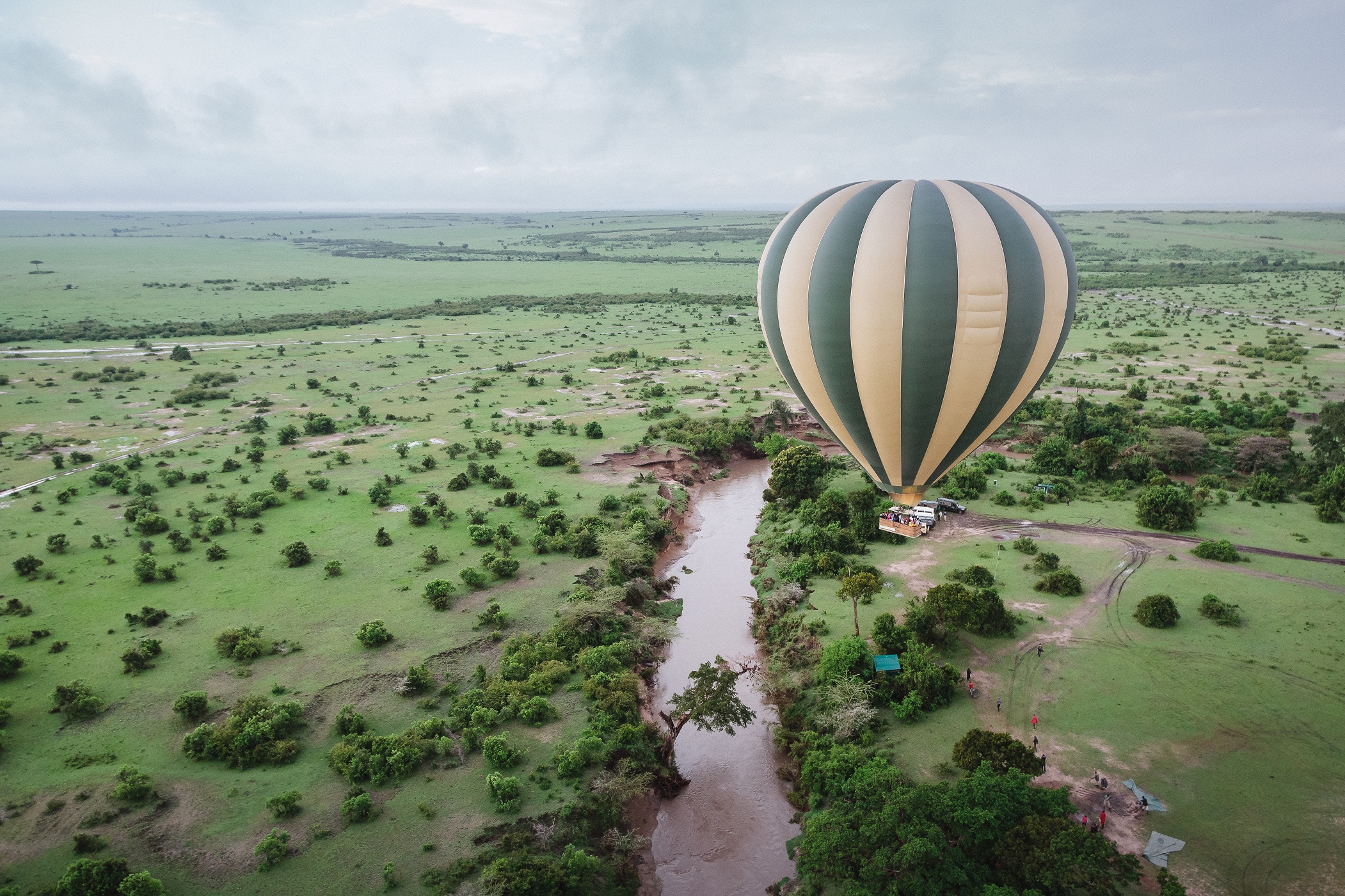
Go on a hot air balloon safari in Tanzania to admire the landscapes and wildlife from above
Where Should I Stay in Nyerere National Park?
We recommend the glamping tents at Siwandu Camp for an unforgettable stay. Embedded in a grove of palm trees along Lake Nzerakera (just off the Rufiji River), this camp is the prime home base for your safari adventures. The strategic location and thoughtful layout ensure that you can observe wildlife from the privacy of your verandah, a truly exclusive experience.
Here, you can look forward to delicious meals blending international flavours with African traditions. And for a truly al fresco dining experience, you can opt to eat out in the Tanzanian bush.
Siwandu Camp specialises in creating intimate experiences for visitors. So, you’re in for a treat with access to your own entertainment, bar, and dining areas, plus a swimming pool and jetty boat. And our favourite, the pièce de résistance – an open-air shower! With no city lights around, Siwandu Camp is also the perfect place for stargazing.
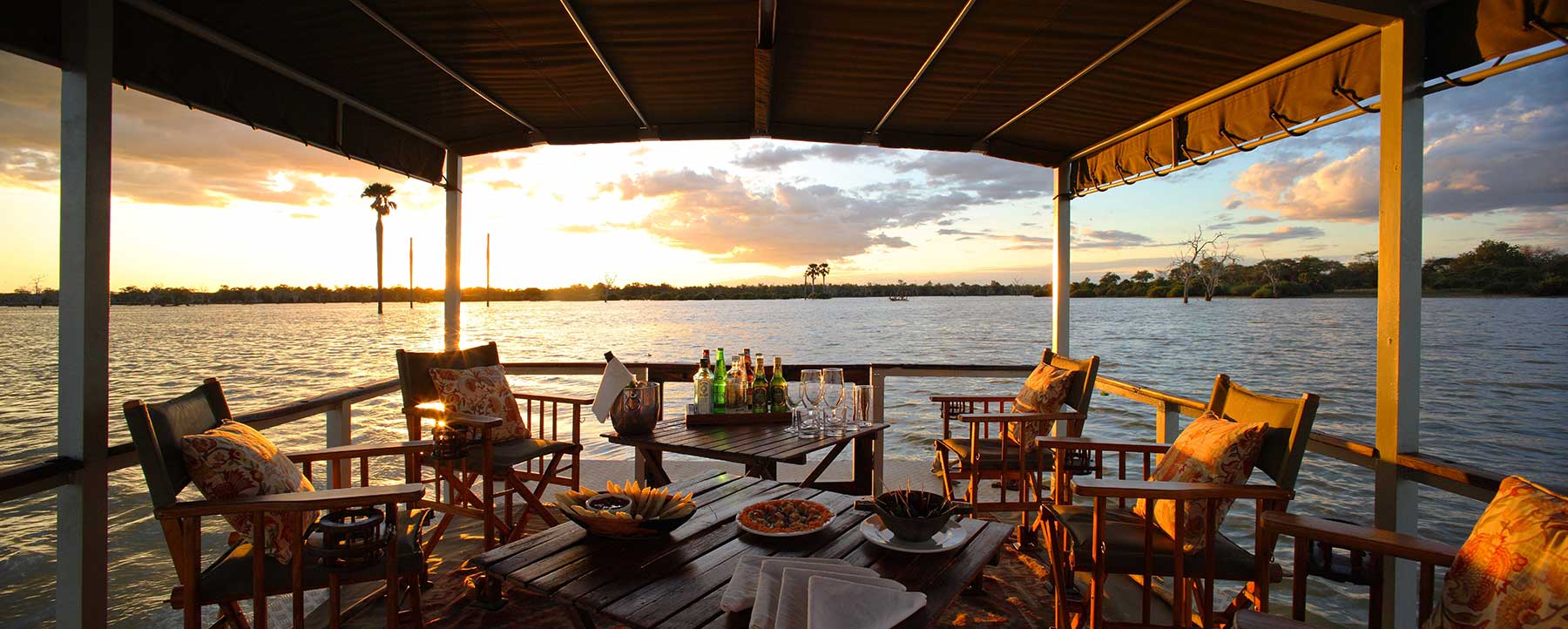
Sit back and enjoy the ever-evolving view, Image Credit: Selous Safari Company
When is the Best Time to Visit Nyerere National Park?
If you want to get the best game viewing experience, the best time to visit Nyerere National Park is from mid June to October. As this is the dry season, vegetation has thinned out and it’s much easier to spot the wildlife, and you’ll find them gathering at the few remaining waterholes and river shores.
However, don’t dismiss the other seasons entirely! Each one has its own charm, and our Travel Experts will advise you on the best places to go at a time you can travel.
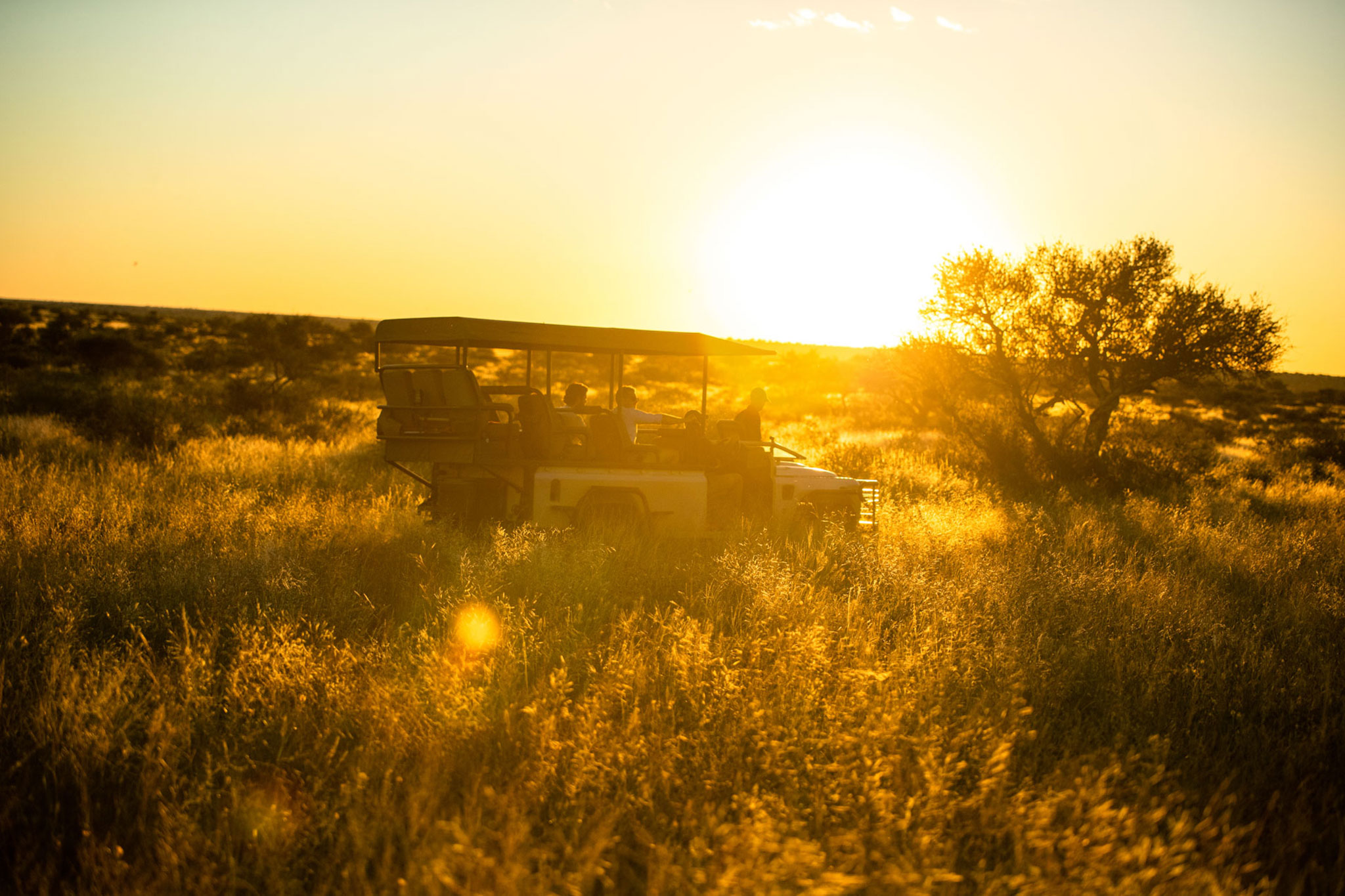
Golden hour on safari is often paired with sundowner drinks
Come Along to Nyerere National Park
For wildlife connoisseurs and safari enthusiasts, Nyerere National Park awaits! Our Travel Experts love this quieter, lesser-known national park, and we’re sure you will, too. Plus, we know all the best spots around, so we can recommend more destinations that will perfectly complement your trip.
Reach out today, and let’s start planning your Nyerere National Park safari.
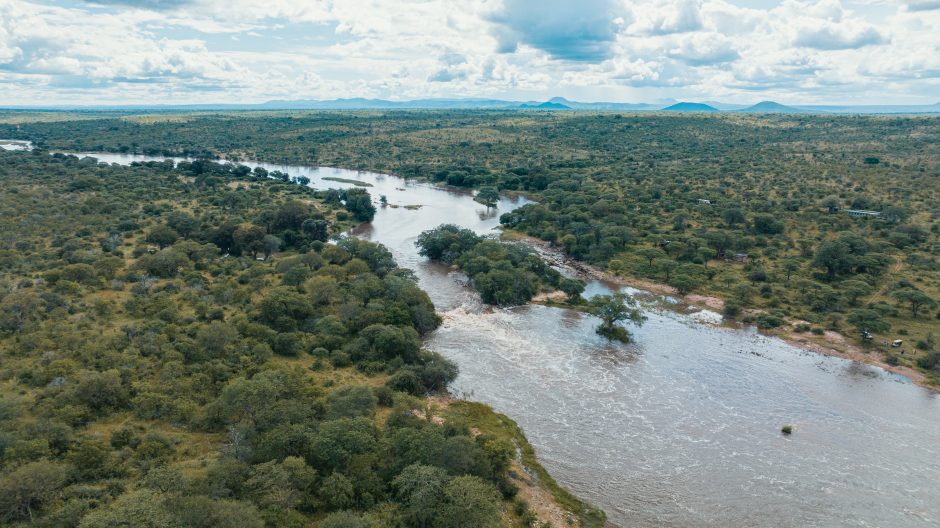
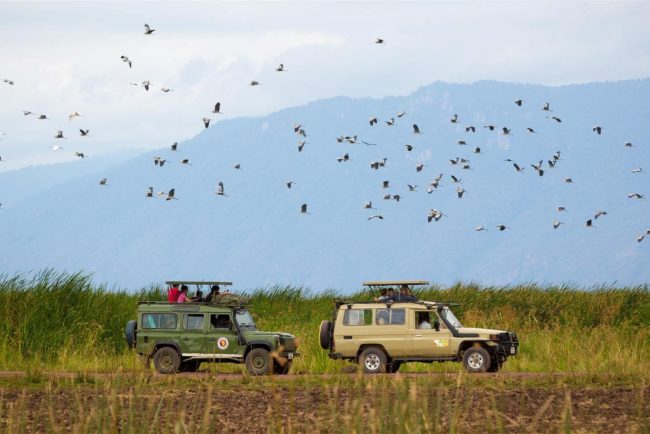
Reasons You Should Plan a Return Trip to Africa
Popular first-time destinations in Africa include the triple threat: South Africa, Tanzania, and Kenya. Based on decades-long relationships, Africa enjoys a viable tourism infrastructure and a mature marketing presence; it’s embossed upon the hearts and minds of long-haul travel consumers and the travel trade. Whether […]
TanzaniaPopular first-time destinations in Africa include the triple threat: South Africa, Tanzania, and Kenya. Based on decades-long relationships, Africa enjoys a viable tourism infrastructure and a mature marketing presence; it’s embossed upon the hearts and minds of long-haul travel consumers and the travel trade. Whether travellers wish to explore Africa on a shoestring or in six-star luxury, the continent offers travel products of enviable diversity. We unpack why you should plan a return trip to Africa.
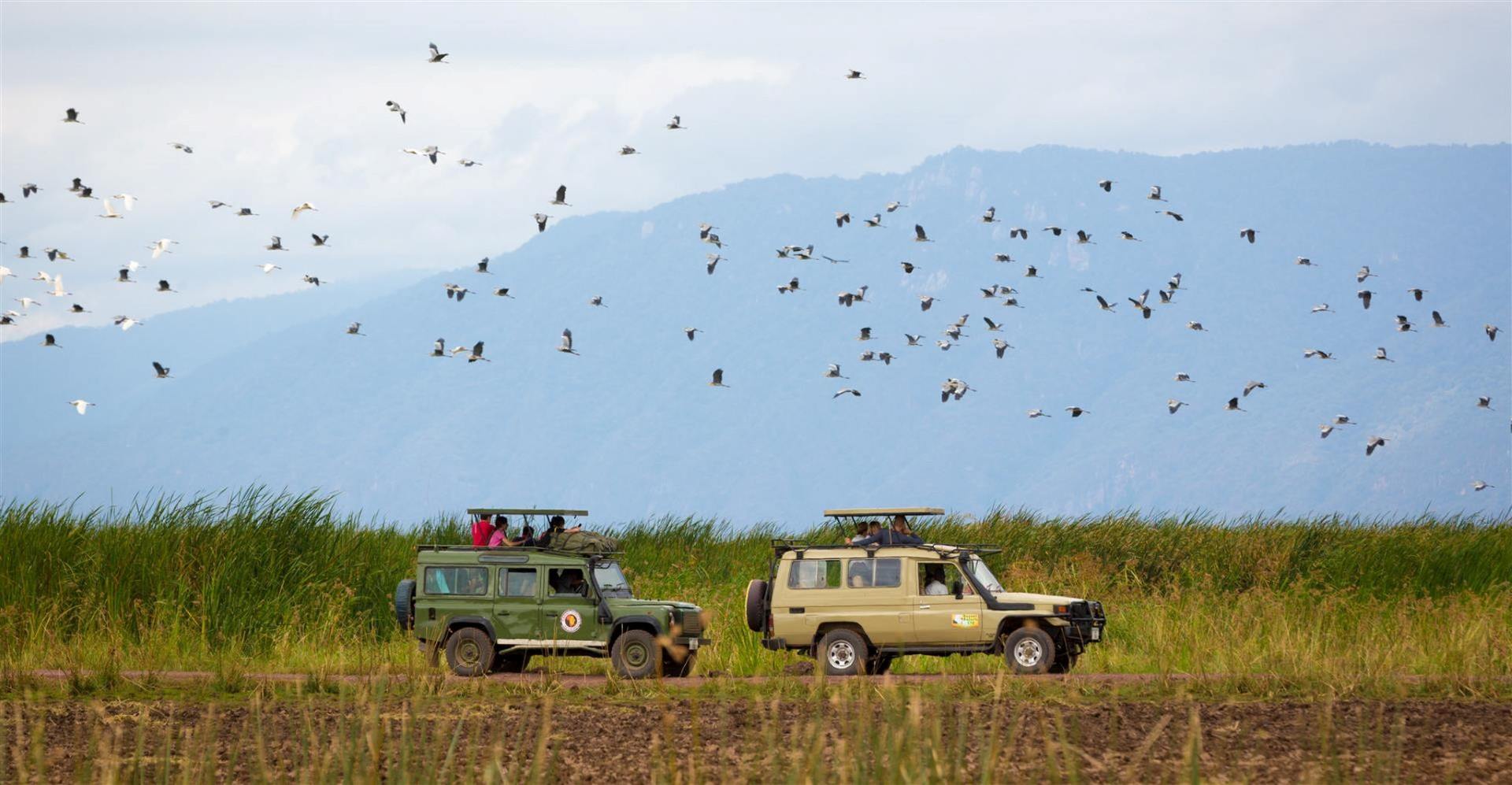
With so much to explore, no two trips to Africa need to be the same
The Power of In-Person Gatherings
Ahead of this year’s Africa’s Travel Indaba (Indaba), South Africa’s Tourism Minister, Patricia de Lille, led the discussion at the Business Opportunity Networking Day (BONDay) agenda on May 13th, 2024, around creating an environment enabling tourism through improved air connectivity and visa waiver programs.
Indaba is a long-standing travel exhibition that draws African specialists worldwide, showcasing many Africa-based travel products. A roaring success this year, the event drew policymakers and politicians from various African countries to put their heads together, fostering stronger ties for a brighter future for the continent and her people.

Our Rhino Africa Crash at Africa’s Travel Indaba 2024
Repeat Travel Fosters Deeper Connections
Beyond the trodden trails and Big 5 tick lists lies a life-long love affair waiting to unfold. Visiting one country, maybe two, the first visit barely scratches the surface of the continent’s incredible offering. Here is a list of a few solid reasons to return.
Invigorating Variety
Try to resist the temptation to cram too much into your (first) trip. Consider your carbon footprint when combining countries, and plan the path with the most negligible impact when stitching your itinerary.
Carriers such as Kenya Airways have excellent links between eastern and southern Africa. As a result, you can easily fly into the fascinating Nairobi (Kenya), an entry point for visiting the Maasai Mara to Zambia‘s side of Victoria Falls for visits to natural wonders. And then from Victoria Falls to Cape Town, a consistent favourite with world travellers. And don’t forget that working with an experienced travel planner is a great idea to ensure seamless logistics.
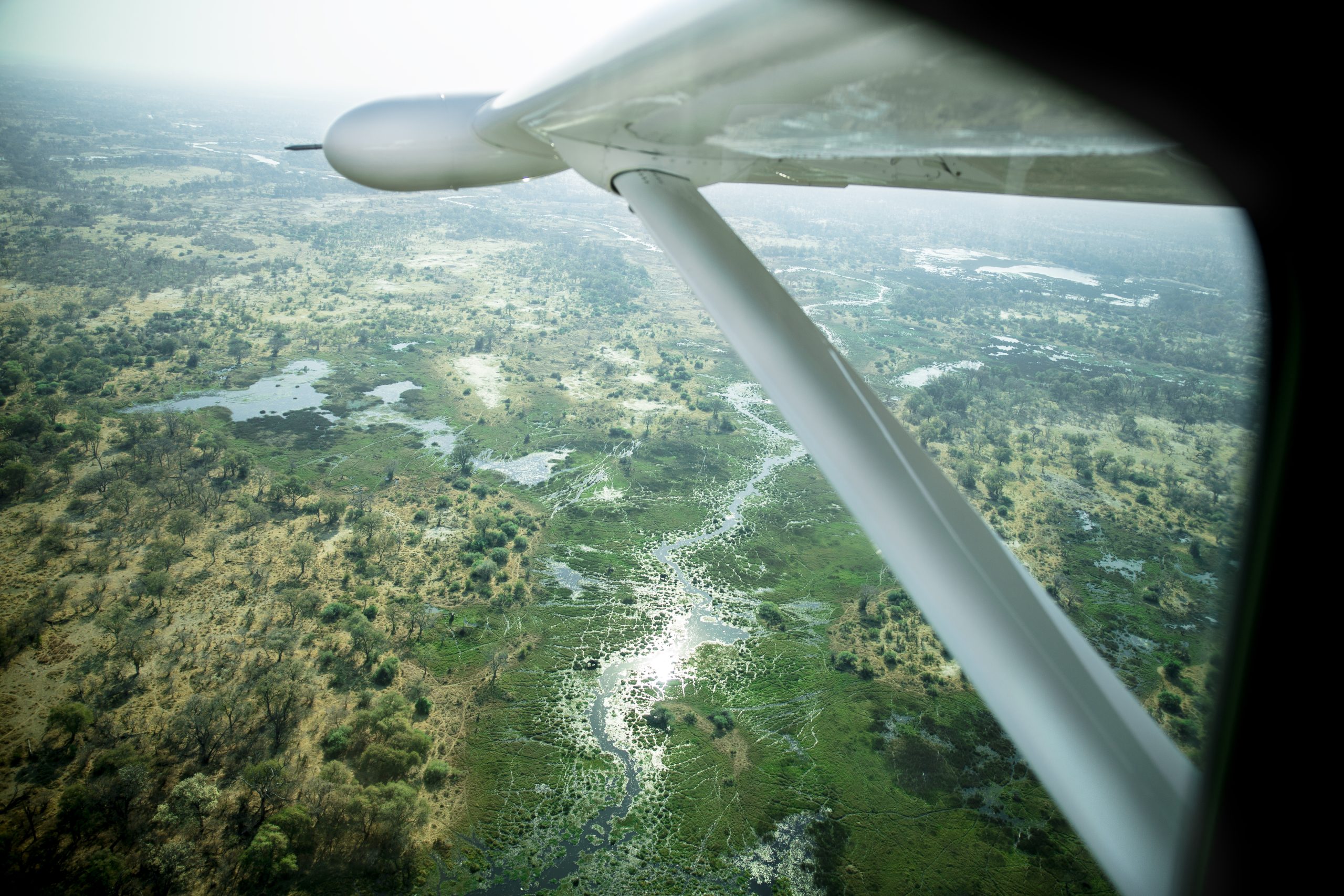
African destinations are a simple flight away
Inspired Inclusivity
Destination management companies that do the right thing by incorporating diversity, equity, and inclusion (DEI) into their organisational strategies deserve a place in the sunshine of Africa’s tourism landscape. As conscious travellers drive demand and increasingly flex their buying muscles, choosing travel suppliers carefully with ever-more-discerning criteria, the impactful EU Green Directive is being finalised, with far-reaching effects for greenwashing culprits.
Meanwhile, accessibility in tourism is gaining momentum. While the industry grapples with how best to serve this emerging sector, it’s vital to understand that accessibility means different things to different people, depending on their needs. For example, not all people with accessibility challenges use wheelchairs. Some are neurodivergent, whilst others may be visually impaired. The industry would benefit from a holistic view of this sector, which holds impressive repeat traveller value.
The key to engaging with this target market is understanding what’s required to exceed expectations. For example, June is Gay Pride Month, and Africa’s warm welcome embraces the LGBTQ+ community in South Africa, Botswana, Namibia, Mozambique, Rwanda and the Seychelles.
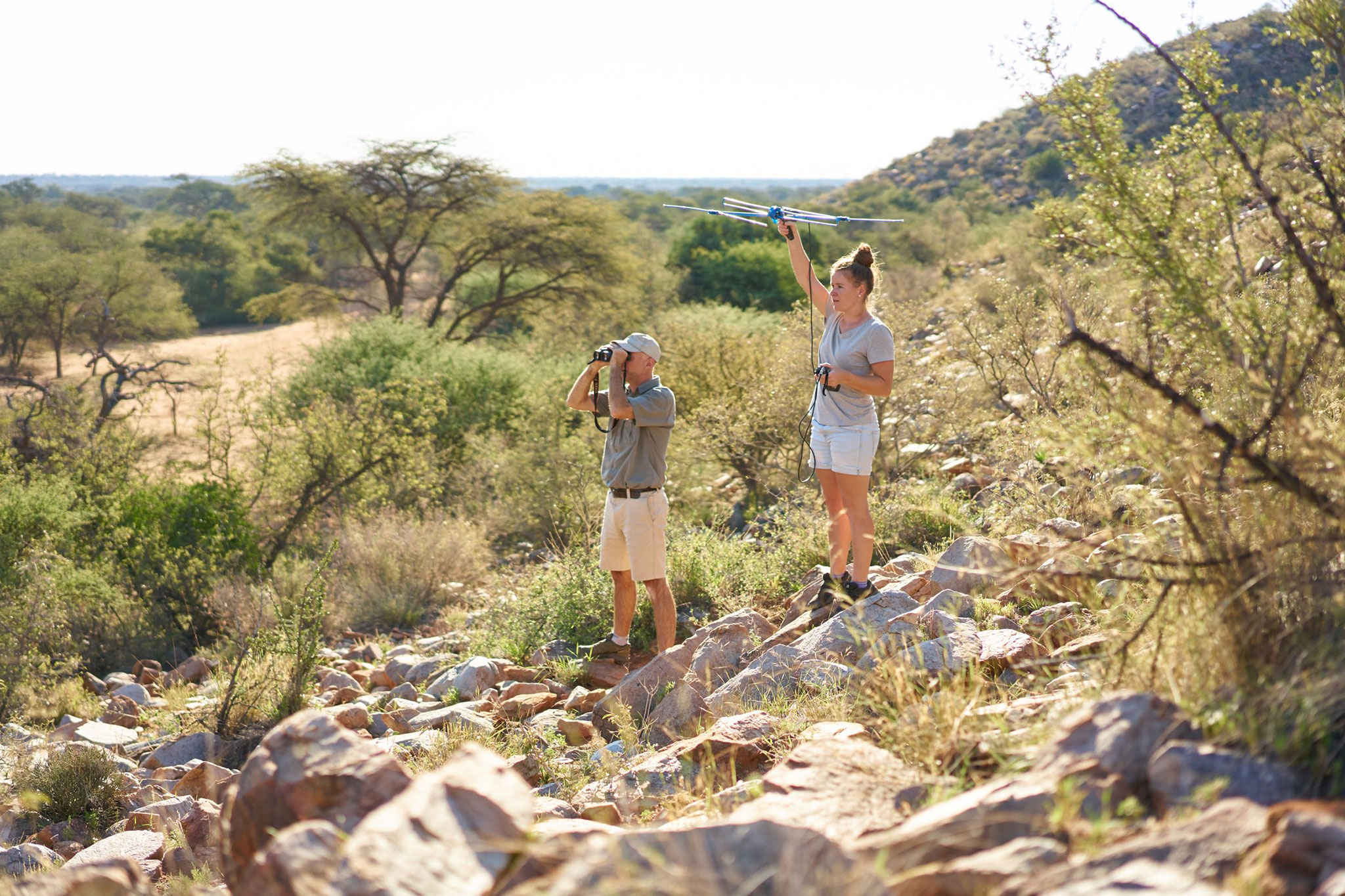
Your stay has a far-reaching impact on community projects, including conservation efforts, Image Credit: Tswalu Kalahari
Cultural Exchange
I grew up in South Africa and experienced first-hand the effects of apartheid. And then, as a teenager, I witnessed, with delight, the birth of my country’s beautiful democracy. Being a citizen of transformation has profoundly shaped my worldview. I’ve always believed that tourism has the power to change lives.
The soundtrack to life in Africa is vibrant, and her people are charismatic. She walks to her unique drumbeat. At times, she’d tuck me away in places of quiet solace where I’d smile inwardly, knowing that somewhere, somehow, something surprising was happening. Africa’s expansiveness, underscored by soulful connections, is all about the people you meet.
Before visiting, you should challenge yourself by leaving your expectations at home and engaging fully with host communities, safari guides, tour guides, and travel providers. Such a pledge requires a paradigm shift, releasing the insatiable need to document every moment with a camera or smartphone. Instead, be in the moment and focus on the real magic – building relationships.
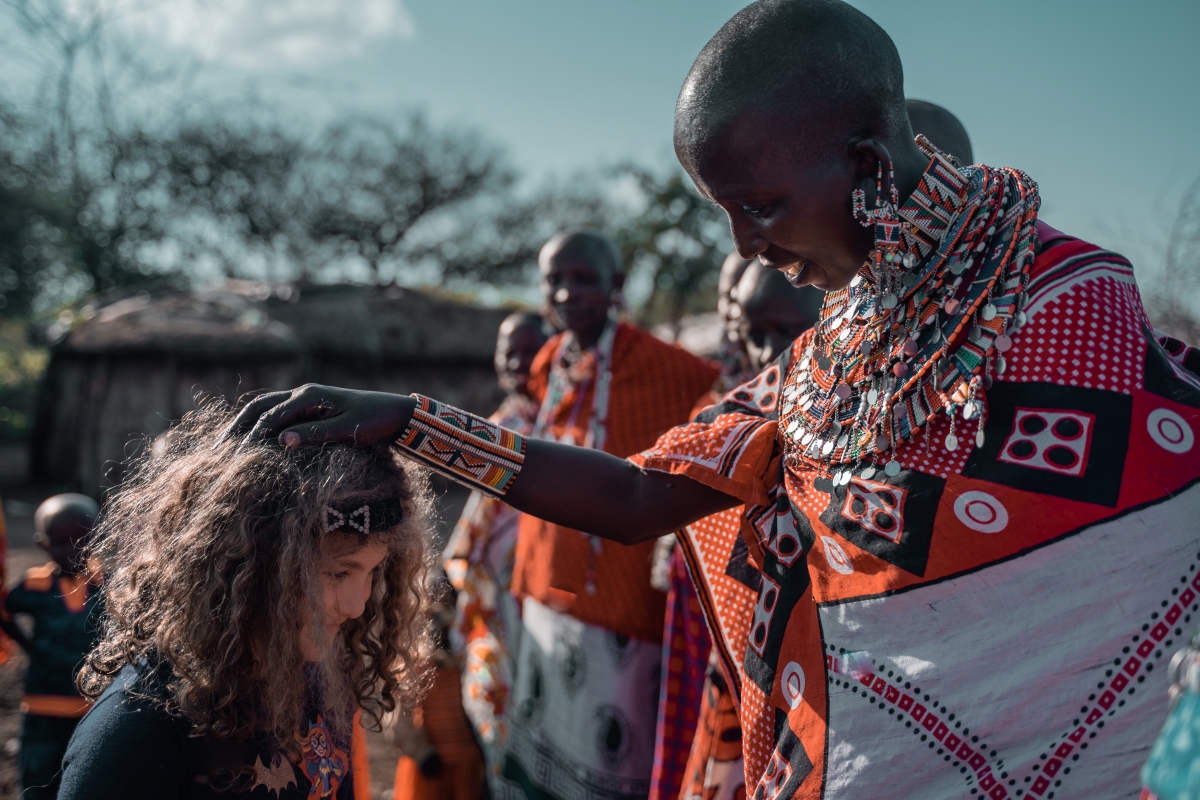
Learn about local tribes and their way of living, Image Credit: Porini Amboseli Camp
Community Connections
Once you’ve travelled to Africa, you will be overwhelmed with an unbridled perspective. A heady mix of unfathomable challenges, boundless diversity and energetic richness, nowhere else emphasises the course of the human experience in such stark relief.
South African James Fernie, a once-promising lawyer turned social entrepreneur who is now the CEO of Uthando (Love) South Africa and The HEART of Cape Town, says:
“Many challenges continue to besiege our country, yet the indomitable spirit of South Africans never fails to amaze. We show up, put a smile on our faces, and keep moving forward. The courage to do so comes from our hearts; we keep innovating, dreaming, and sharing hope and love where possible. From the Mother City to the world, the essence of The HEART of Cape Town movement shines a light on the singular sentiment that unites rather than divides humans: love.”
Uthando (Love) South Africa and The HEART of Cape Town movement inspire travel experiences that support meaningful change for highly vulnerable groups in Cape Town’s underserved communities, especially minority groups and the youth. James and his team connect conscious travellers with non-voyeuristic philanthropic excursions to some of Cape Town’s most inspiring grassroots community projects.
“A daily ritual inspired the HEART of Cape Town movement that I want to see spread worldwide. Every morning, I put my hands on my heart. I have so much love for everyone; it doesn’t matter who they are, where they come from, or their nationality – people are people, and we all deserve to love and be loved. A heart sign is a tangible embodiment of kindness, empathy, and compassion.”

Heart of Cape Town creator and campaign leader is sharing the love, Image Credit: Heart of Cape Town
James believes South Africans’ energy and resilience repeatedly drive visitors to return to South Africa.
“I recently met an American couple that has visited South Africa six times since 2001, They used the words ‘ascending’ to describe the feeling of South Africa. Imagine these hearts worldwide, posted on social media, held by people, basking in the glow – literally and figuratively – nation-building in action.
Worldwide, people can start making hearts and spreading the message of love and tolerance. And right now, our world is in desperate need of this message. At home, especially now, with our country’s national election this month, we can start to set people’s hearts ablaze with that one cornerstone emotion that we all need, regardless of our colour or creed: love.”
Pay it Forward Through Conscious Tourism Choices
Considering how local communities wish to engage with tourism prompts visitors and tourism agents to build relationships with stakeholders in a destination. It also discusses the vital role of women in communities and why it makes sense to support women-led businesses.
Other factors contributing to return travel include enabling policies such as bilateral travel agreements, visa waivers, digital nomad visas and the pull of visiting friends and family. Beguiling Africa has the potential to capture the imagination of travellers for a lifetime.
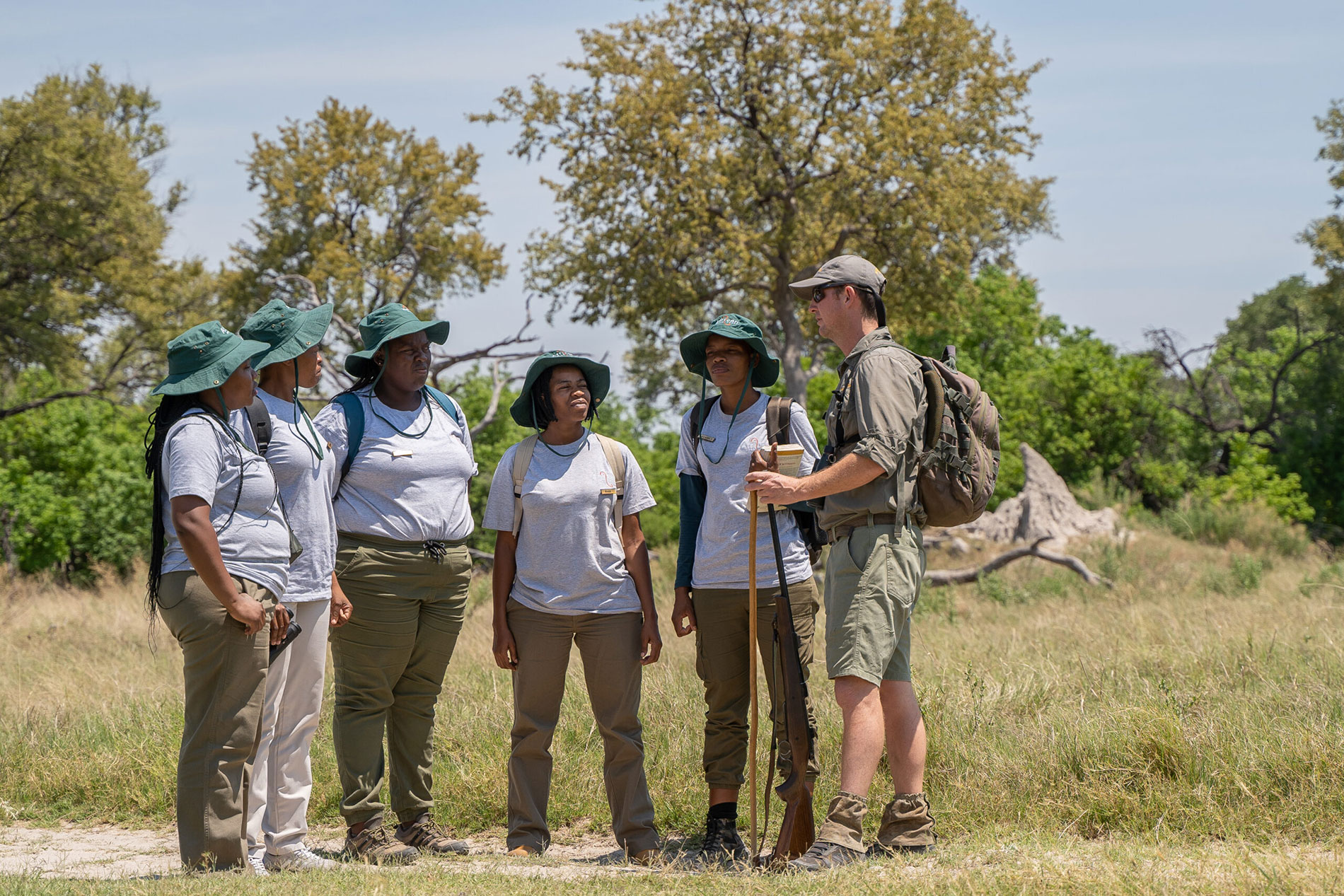
Visitng Africa can have a significant ripple effect, Image Credit: African Bush Camps
Ready to Plan Your Return Trip to Africa?
Whether it’s your first, second or even third time visiting Africa, our beautiful continent has plenty for you to experience. Contact Rhino Africa’s Travel Experts to start planning your tailor-made safari adventure.
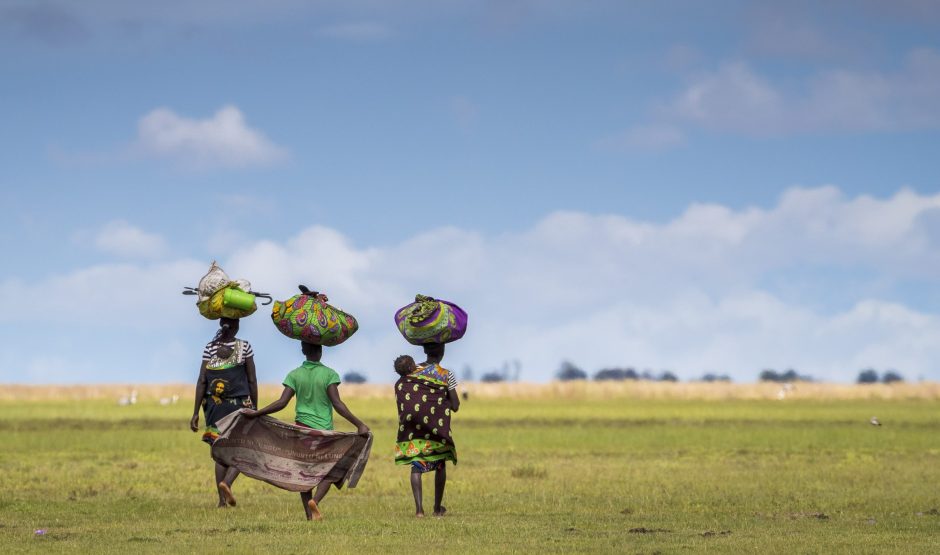
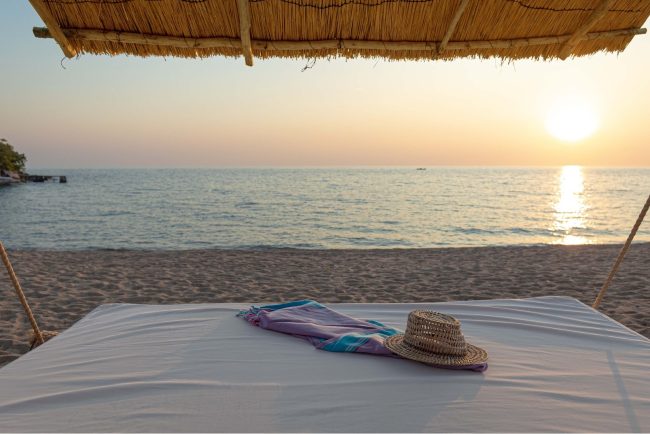
Reflections of Paradise: Tanzania’s Most Beautiful Lakes
Did you know Tanzania is home to the highest mountain (Mount Kilimanjaro) and Africa’s deepest lake (Lake Tanganyika)? It’s a country with stunning grasslands, savannahs, and unique lakes. In fact, it’s worth visiting just to explore Tanzania’s most beautiful lakes. Some are dramatic, whereas others are vast, blue, and tranquil. Take a […]
TanzaniaDid you know Tanzania is home to the highest mountain (Mount Kilimanjaro) and Africa’s deepest lake (Lake Tanganyika)? It’s a country with stunning grasslands, savannahs, and unique lakes. In fact, it’s worth visiting just to explore Tanzania’s most beautiful lakes. Some are dramatic, whereas others are vast, blue, and tranquil. Take a journey with us to marvel at these miraculous bodies of water.
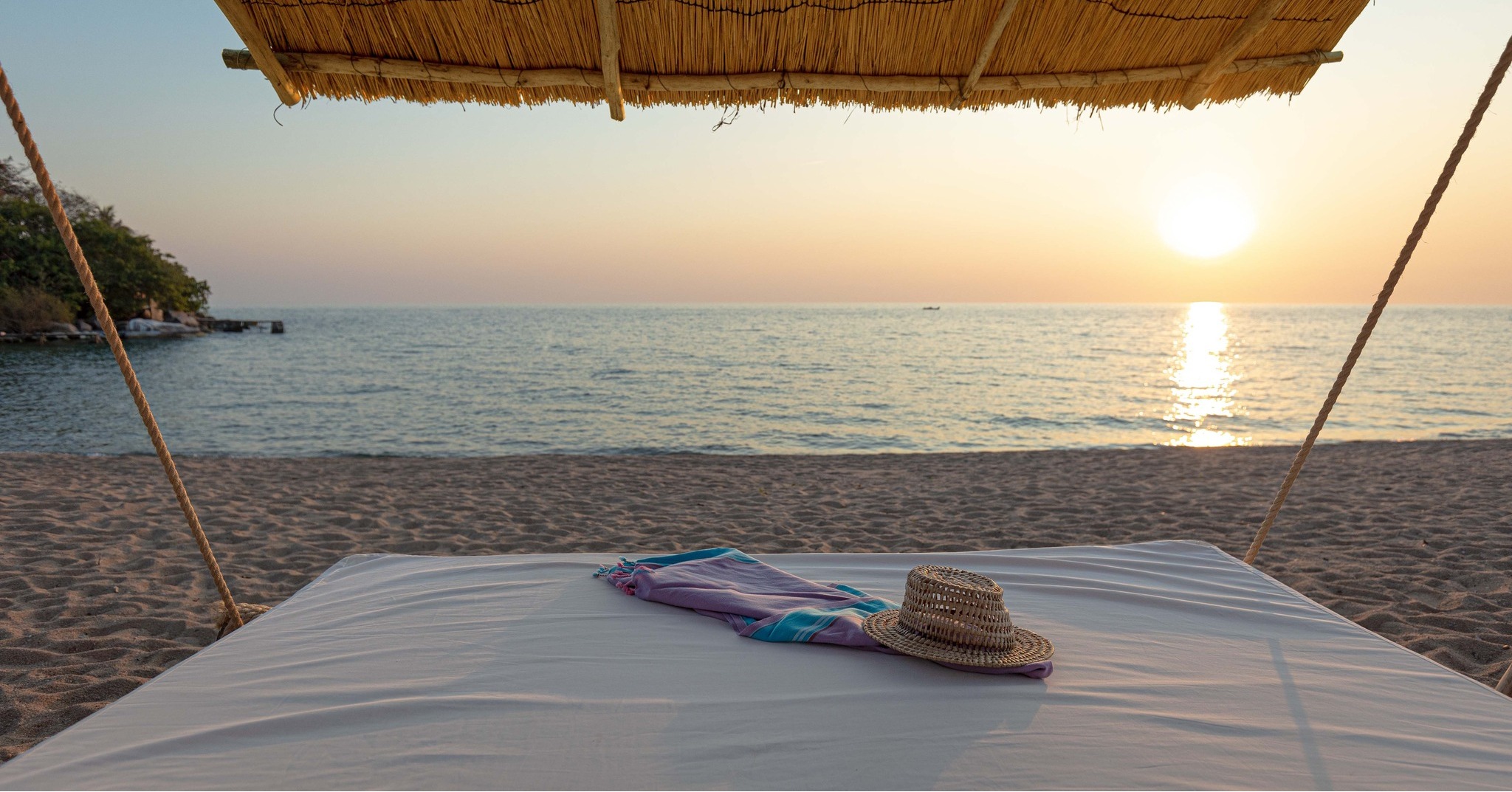
Admire the most beautiful lakes in Tanzania, Image Credit: Kaya Mawa Island Lodge
Tanzania’s Most Beautiful Lakes
Take a tour around the most spellbinding bodies of water in Tanzania.
Lake Victoria
The majestic Lake Victoria is impressive. It’s the largest lake in Africa (roughly the size of Ireland) and covers around 60,000 square kilometres. If you’re lucky to fly over it, you would not think it’s a lake – instead, it looks like you’re flying over the ocean! And much like the ocean, you can see a wide range of stunning fish species here.
Located in a shared territory with Uganda and Kenya, Lake Victoria offers a unique opportunity to extend your Tanzania safari and explore other parts of Eastern Africa. If you choose to venture into Uganda, you can even visit the source of the Nile near Jinja. The possibilities for adventure and exploration are endless.
What Activities Can I Enjoy at Lake Victoria?
- Snorkelling, Diving and Fishing: Explore underwater to see the many multi-coloured fish and the Nile perch fish the area is known for
- Birding: Like cities have doves, Lake Victoria has pied kingfishers, and there are hundreds of them, plus other bird species, too!
- Swimming and Exploring: There are spots where you can dive and swim in the water and stroll along the shores of the many islands
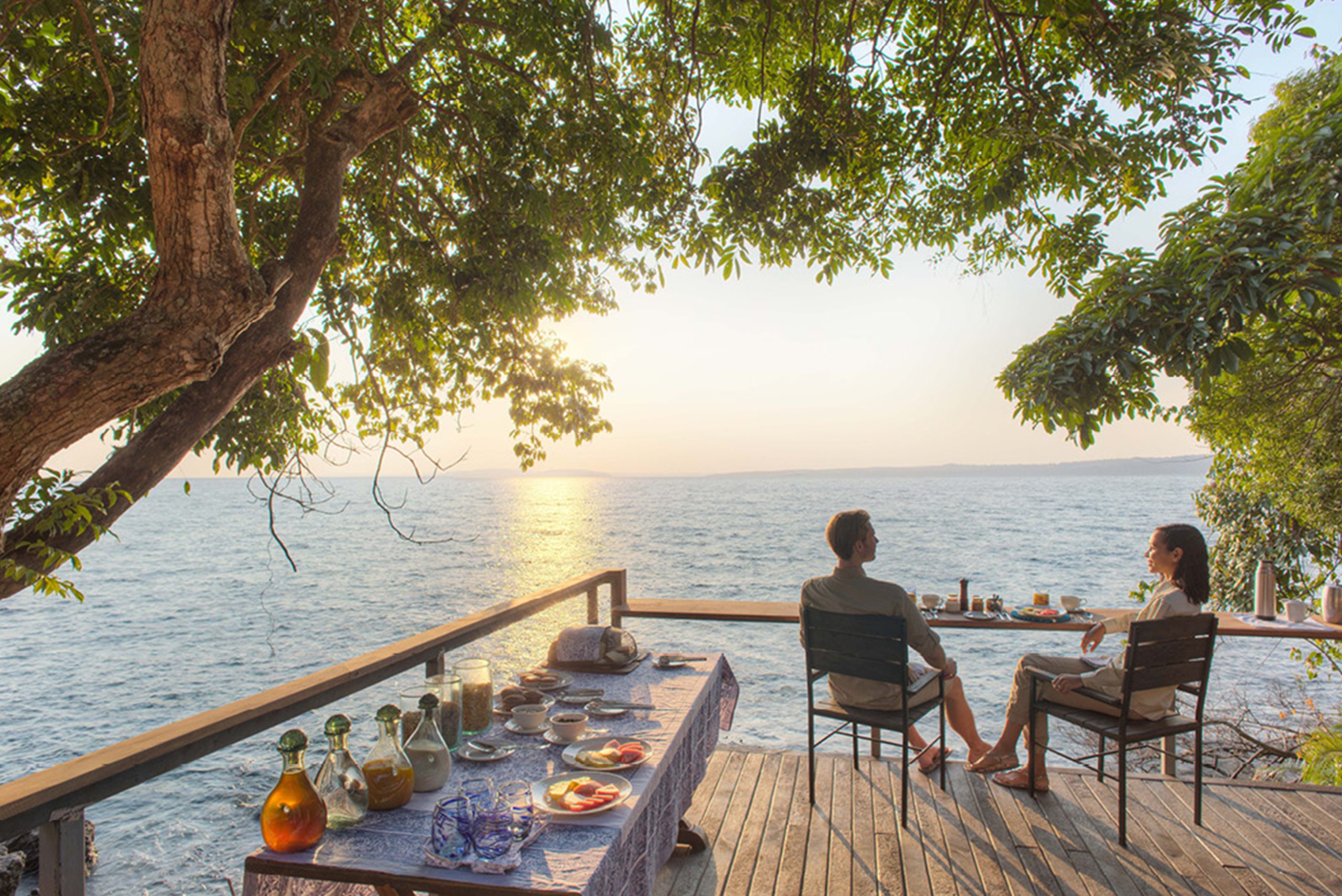
Sit and stare at one of Tanzania’s most beautiful lakes, Image Credit: Rubondo Island Camp
Lake Nyasa
Tanzania, Mozambique, and Malawi share Lake Nyasa, also known as Lake Malawi, which forms part of the rift through Africa. David Livingstone referred to it as the “Lake of Stars”, as the lights on the fishermen’s boats resembled the night sky.
It’s home to over 1,000 fish species, including rare and endemic cichlids, and boasts a vibrant ecosystem hosting various wildlife like turtles, baboons, monkeys, crocodiles, antelope, and hyrax, to name just a few. And, of course, tons of bird species, including fish eagles.
What Can I Do at Lake Nyasa Other Than Game Drives?
- Watersports: Enjoy activities like kayaking, water skiing, canoeing, boat rides, snorkelling and scuba diving
- Birdwatching: With so many species to see, don’t forget to pack your binoculars
- Lounging on Islands: Explore all the other smaller islands in the area
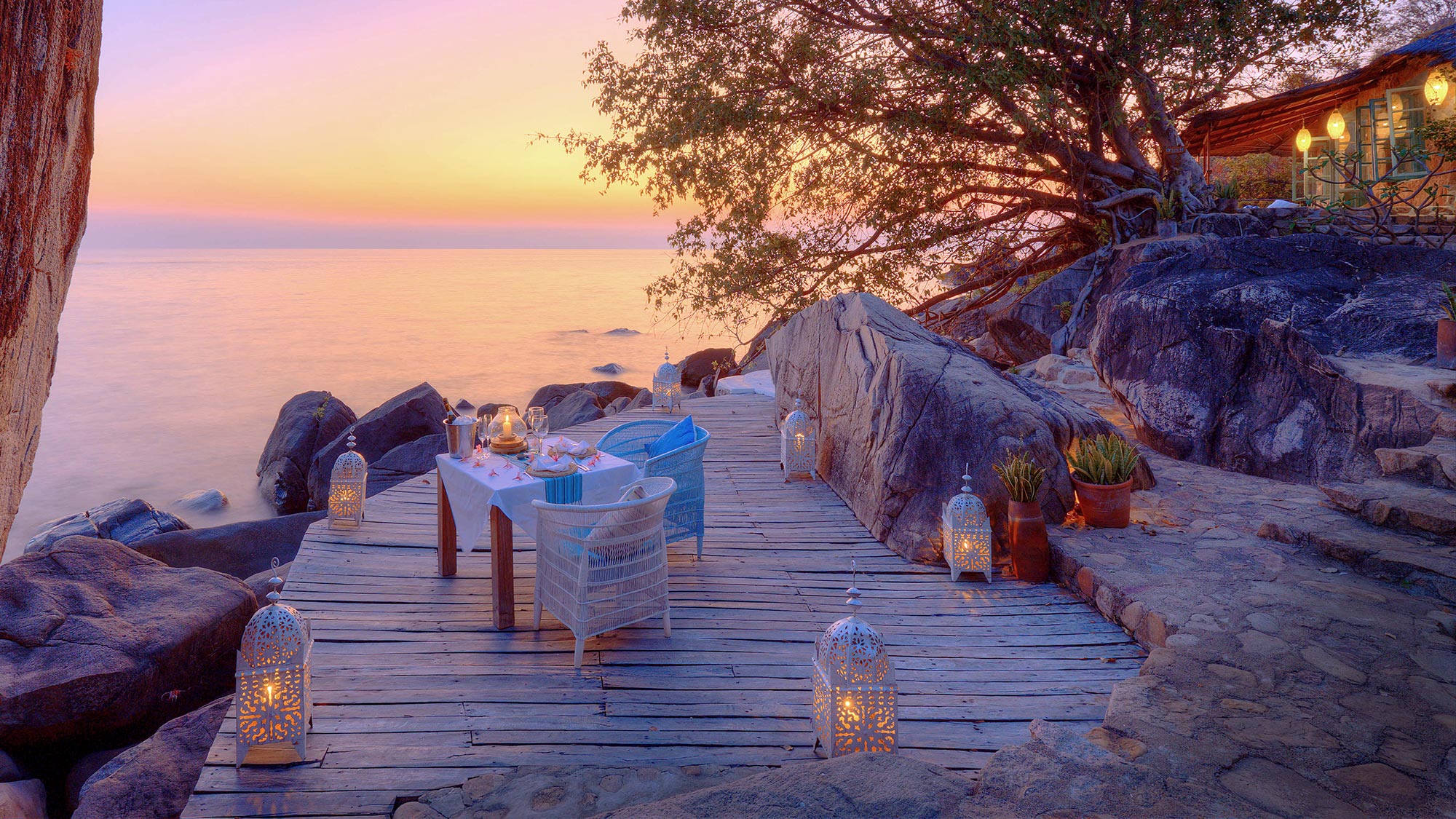
Island beachfront in Lake Malawi, Image Credit: Kaya Mawa Island Lodge
Lake Natron
The scenery at Lake Natron is quite dramatic and unusual. Located close to an active volcano, Old Doinyo Lengai, the alkaline state is too toxic for most species to survive in. Because of the high concentration of sodium carbonate, animals that die here calcify.
Yet, it hosts the perfect conditions for lesser flamingos to be born here. Some records show that you can find 75% of the world’s population here, and it’s quite a spectacle to behold millions of lesser flamingos in this setting. The hues of the pink birds flow with the shades of orange and red algae in the lake. Lake Natron is close to the Ngorongoro Crater and Serengeti National Park, making it a convenient add-on to your safari. Our favourite highlights are sundowners and the traditional Maasai barbeque, which features songs and dances around the fire.
What to Do at Lake Natron
- Birding: See the lesser flamingos at sunrise and sunset when temperatures are cooler, and spot 250 other species of birds
- Mountain Biking: Experience nature more intensely with no barriers as you bike around the local area
- Hominid Footprints: Step into history and marvel at human footprints from 5,000-19,000 years ago
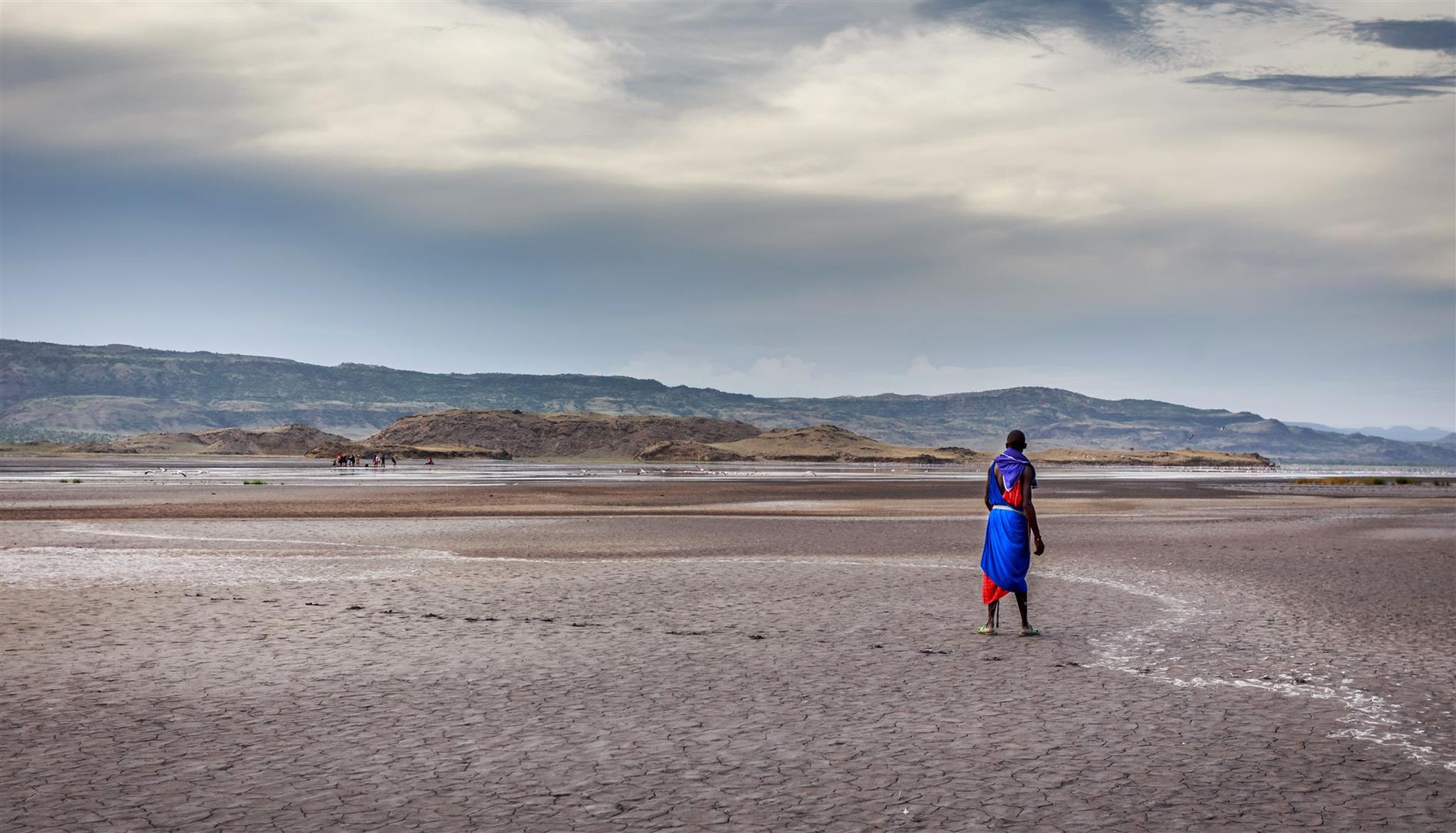
Dramatic scenes of Lake Natron in Tanzania
Lake Tanganyika
Lake Tanganyika is shared between Tanzania, Burundi, Zambia, and the Democratic Republic of Congo. This freshwater lake is the deepest in Africa and the second deepest in the word. Naturally, it is home to a variety of fish species (including cichlids), hippo, nile crocodiles, tons of wildlife, and bird species. As vibrant as the fauna is the flora. Some plant species can only be found here.
What Can I Do While Visiting Lake Tanganyika?
- Watersports: Go kayaking, canoeing, wakeboarding, skiing, snorkelling, and diving
- Island Hopping: Go on a boat safari to see the many smaller islands dotted in the lake
- Hiking and Chimpanzee Trekking: Get to know the land on foot
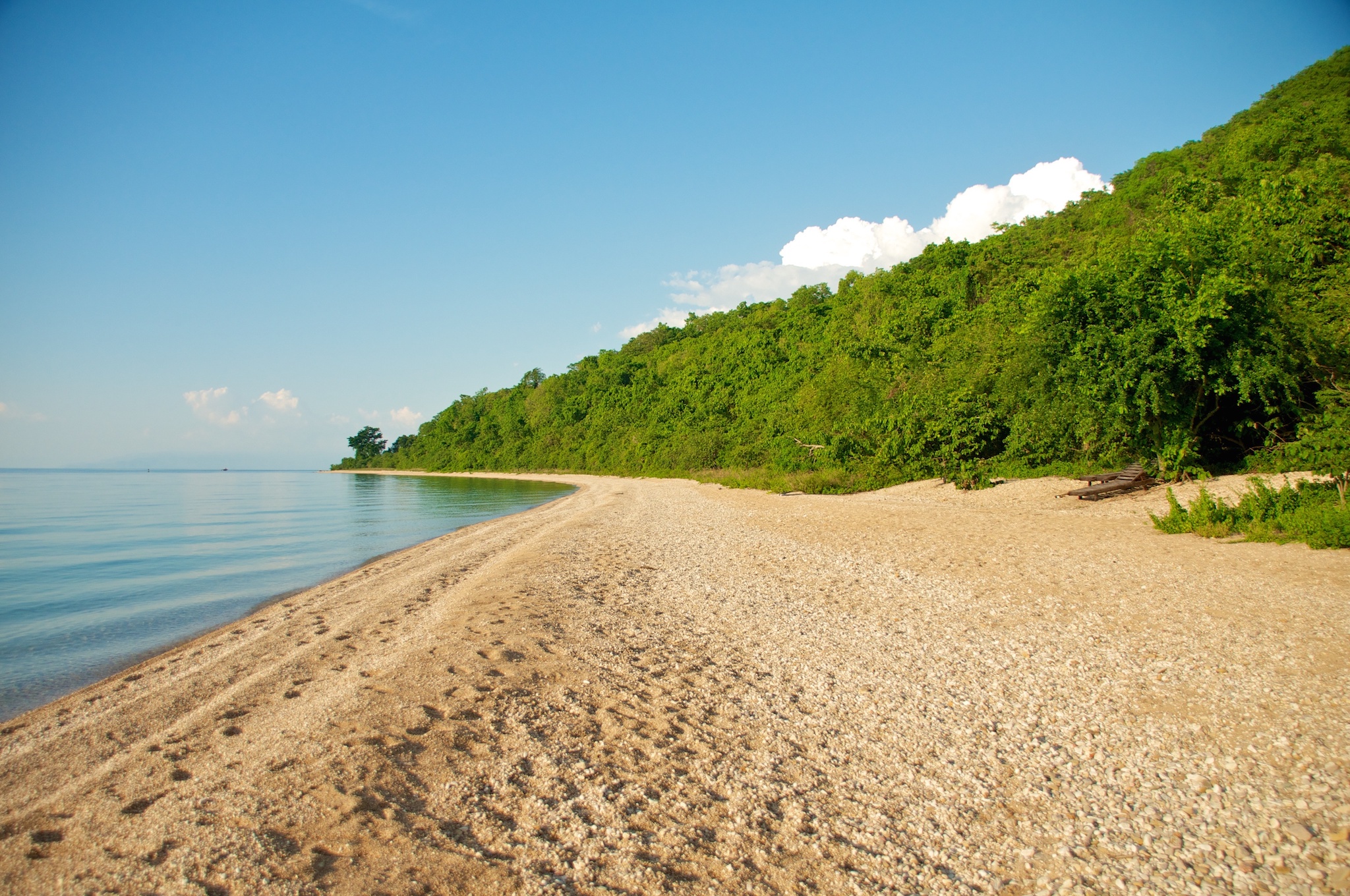
Situated on the glistening shores of Lake Tanganyika
Lake Manyara
Situated in Lake Manyara National Park, the area is adorned with woodlands, savannahs, and cliffs. Although Lake Manyara might be tiny compared to the above-mentioned lakes, it’s home to a high concentration of spectacular wildlife.
Our guests are usually excited to see flamingos, hippos, giraffes, zebras, leopards, lions, elephants, buffalo, and wildebeest. The dry months are ideal for game viewing, while the rainy season is perfect for birding. Furthermore, it’s close to Arusha, making it an easy add-on when exploring the Ngorongoro Crater and Serengeti National Park.
What to Do at Lake Manyara
- Birding: In addition to flamingos, birding aficionados have spotted emerald cuckoos, crowned eagles, crowned hornbills, silvery-cheeked hornbills, and long-tailed fiscals
- Cultural Activities: Mto Wa Mbu is a town close to the gate of the national park that offers village tours
- Game Drives: Feel like you are behind the scenes of a nature documentary and gawk at the rich wildlife around the lake
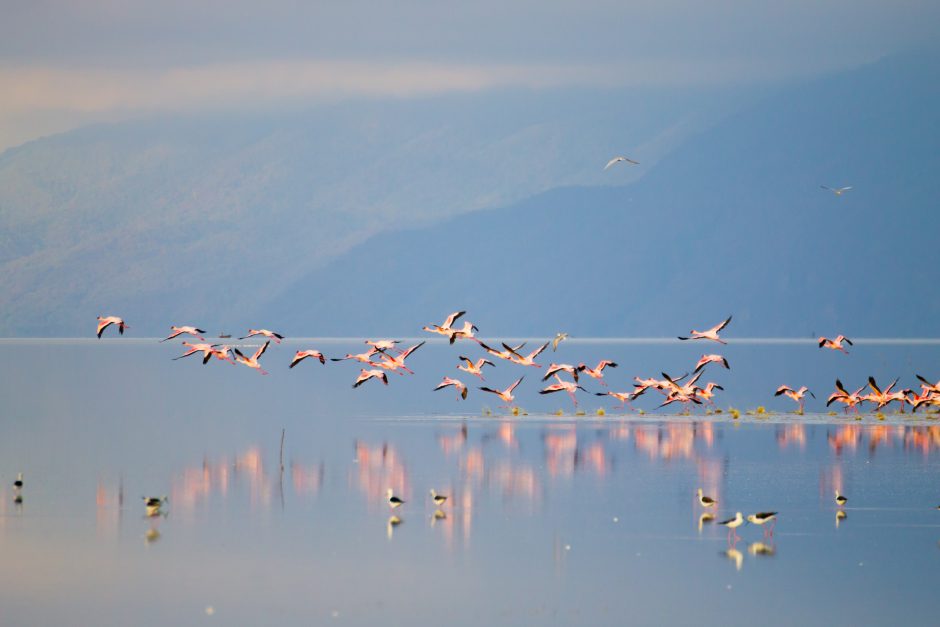
Lake Manyara is seasonally home to millions of lesser flamingos
Experience Tanzania’s Beauty
Many of our guests add Zanzibar to their itineraries to create the perfect bush and beach safari experience in Tanzania. Spend the first leg of the tour traversing Tanzania’s stunning landscapes, relax on Zanzibar’s beaches and sail on a traditional dhow afterwards.
The warm tropical waters are perfect for snorkelling and diving to explore undisturbed marine life and colourful coral reefs. Ready for your adventure? Contact our Travel Experts, and let’s start planning your next holiday.

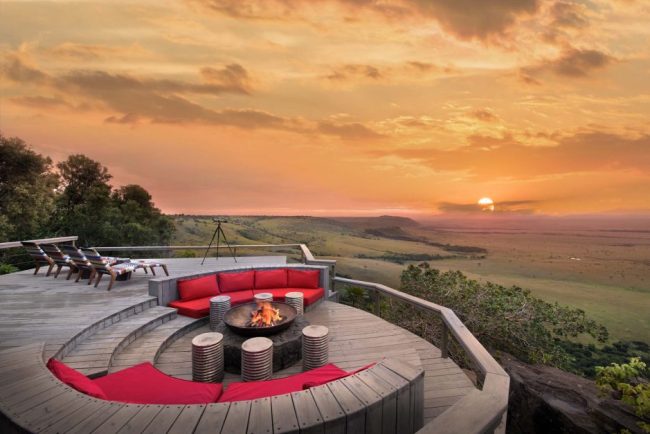
An East African Safari: Four Countries. One Continent. Myriad Discoveries.
An East African safari conjures up visions of ancient sepia-stained maps, pirates plundering, and safari plinths donned by the explorers of yore. The modern spirit of East Africa that now thrives has eclipsed a past peppered with conflict and colonialism. We take you on a […]
RwandaAn East African safari conjures up visions of ancient sepia-stained maps, pirates plundering, and safari plinths donned by the explorers of yore. The modern spirit of East Africa that now thrives has eclipsed a past peppered with conflict and colonialism. We take you on a journey through four of our favourite countries for an East African safari…
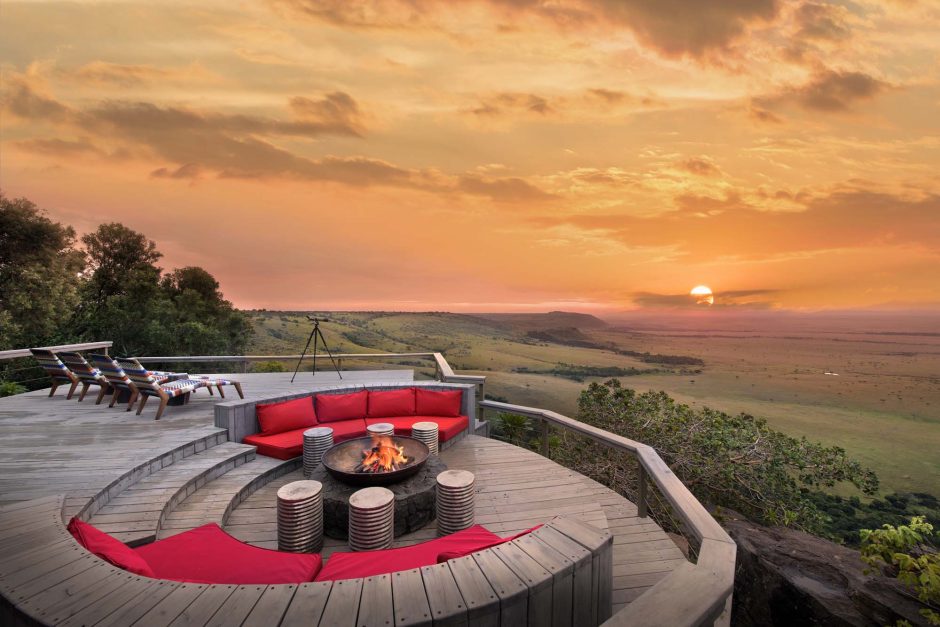
Maasai Mara is a wildlife paradise to explore on your East African safari, Image Credit: Angama Mara
The Essence of an East African Safari
Nowhere else on our planet will you find the same solace than in the vast great plains, rainforests, sky-scraping mountain ranges, seething volcanoes and enriching cultural exchanges of East Africa.
Imagine floating away in a hot air balloon safari silhouetted against an apricot blush dawn. On a walking safari, you may encounter a tower of giraffes browsing elegantly on flat-topped acacias while peeping at you beneath their impossibly long eyelashes.
Find nirvana in an outdoor yoga session in the untouched bush. Dine under a star-spangled sky by cheerful lantern light, making new friends while tightening the ties that bind. And much more.
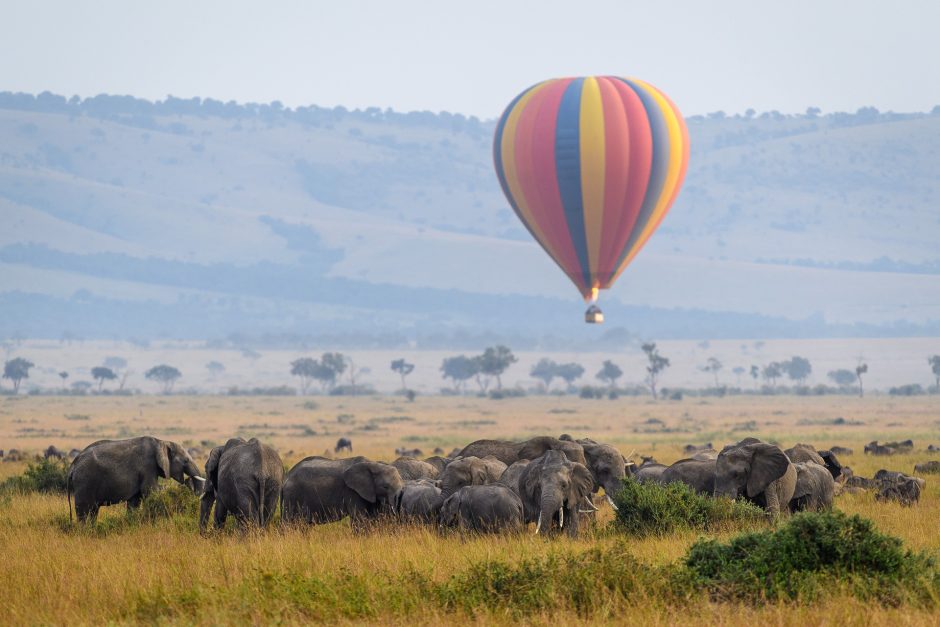
Image Credit: Governors’ Camp Collective
An Unforgettable East African Safari Destination
Tanzania is home to Mount Kilimanjaro, and the Serengeti National Park located here is host to part of the Great Wildebeest Migration. From late June to October, driven on by their thirst-quenching quest, roughly 1.5 million blue wildebeest run the gauntlet, crossing the mighty Mara River littered with giant crocodiles lying in ambush, into Kenya with zebra and other grazers following suit.
Year after year, they chase billowing rain clouds across the vast grasslands, driven by instinct, ostensibly oblivious to the dangers posed by hungry predators – lions, leopards and cheetahs – that shadow their every move.
The Ngorongoro Crater, Tanzania
The Ngorongoro Crater provides a self-contained backdrop against which unique wildlife encounters unfold. Bear witness to the scale of animals sharing the world’s only unbroken caldera, the Ngorongoro Conservation Area, laying claim to UNESCO World Heritage Site status. Be mindful that the seasonal rains dictate the area’s vegetation level, seasonally becoming something akin to a larger-than-life salad bowl.
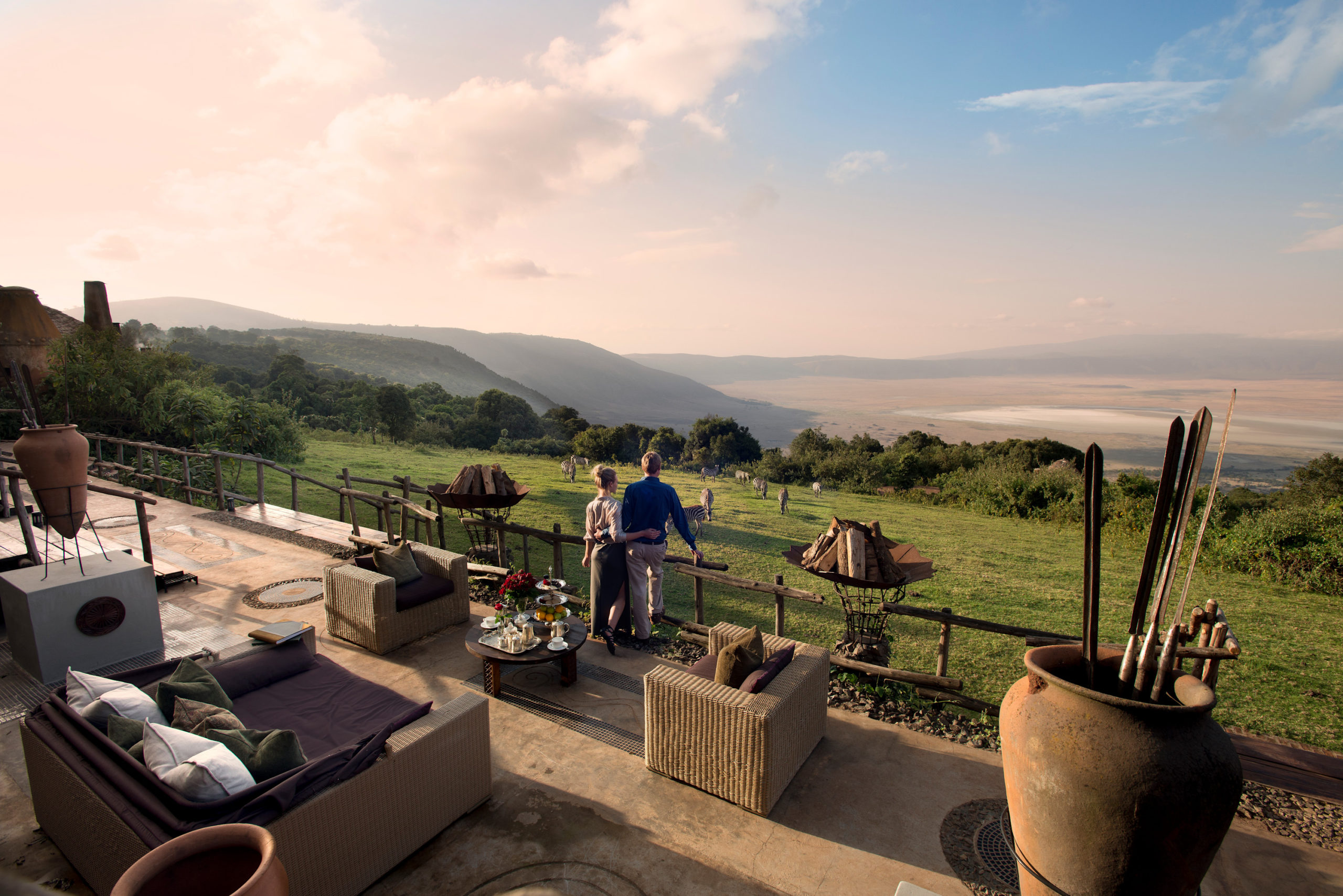
Admire wildlife roaming the crater, Image Credit: &Beyond Ngorongoro Crater Lodge
If you’re after verdant backdrops that are easy on the eye, travel after the rains when the lush landscapes emerge, roughly between November and May.
Not to be outdone in the heart-capturing department, the sought-after violet-hued Tanzanite gemstone holds its own. The stones belong to the zoisite species unique to Tanzania, found near Arusha. First discovered in 1967 and given its name by Tiffany’s, who bore exclusive marketing rights for the first few years after its discovery, the gems are said to have mystical qualities.
A short bush plane flit from Tanzania’s mainland lies another gem, the Zanzibar Archipelago. The collection of tropical islands set in the tourmaline waters of the warm Indian Ocean is lauded by sun worshippers, especially in the Global South, for its affordable fly-and-flop holiday packages.
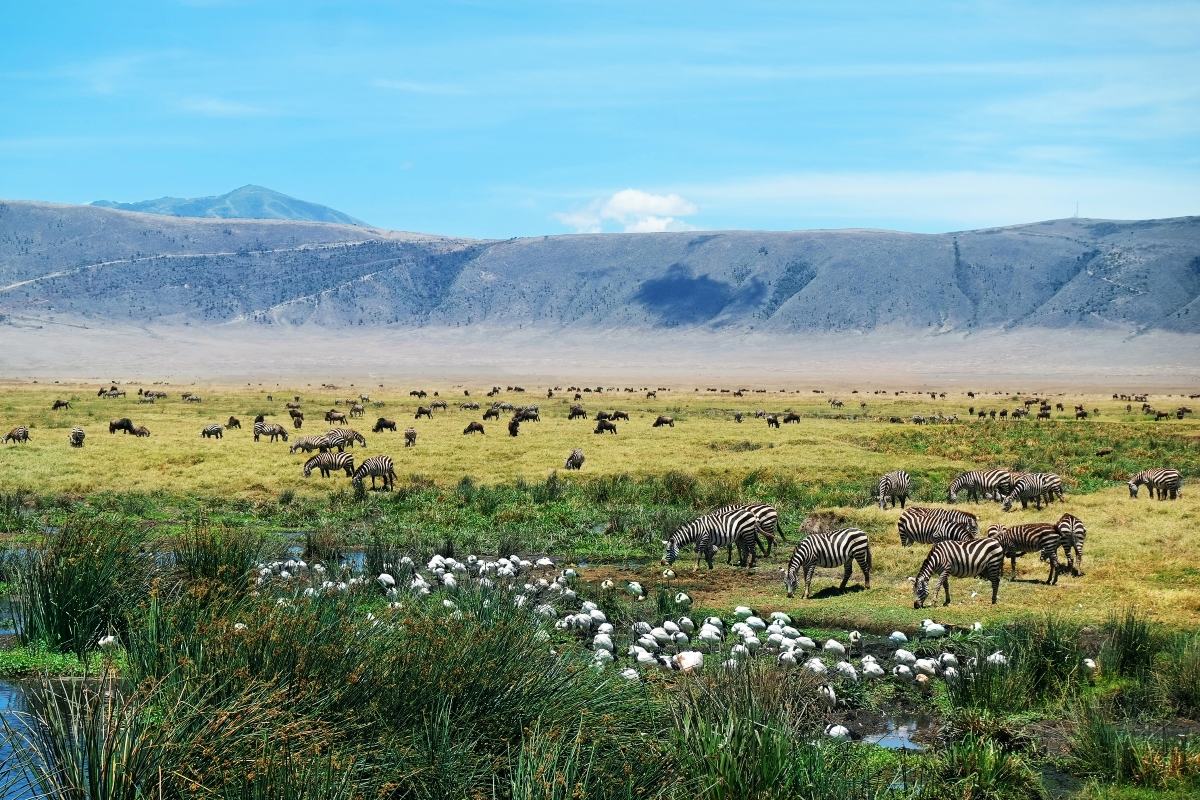
The crater is only one part of a much greater thriving ecosystem
Spice Islands, Zanzibar
Scattered like gemstones across the Indian Ocean, the Spice Islands hold great allure: powder-white beaches, crystal-clear warm, serene ocean scenes, plus captivating culture and heritage.
Lying 22 miles (35 kilometres) off mainland Tanzania, the coral, limestone and sandstone Zanzibar Archipelago comprises Unguja, the largest of the islands, also known as Zanzibar Island and its smaller counterpart to the north, Pemba.
Unguja is a treasure trove of historical and cultural experiences. Walk the streets of the famous East African trading hub, uncovering centuries of history shaped by influential Middle Eastern sultans, African chieftains and leaders of Western dynasties.

Zanzibar is the perfect bush-meets-beach destination
Visit Freddie Mercury’s Hometown
The UNESCO World Heritage Site, Stone Town, is famous for many reasons. Notably, it claims to be the location of the shortest war waged in recorded history and the birthplace of British rock star legend Freddie Mercury, respectively.
The intricately carved wooden doors that stand out amongst the ancient labyrinth of alleyways and lanes are also a drawcard, each a quixotic local piece of art revealing a unique story.
Pemba is less commercial. If you aspire to a less commercial Zanzibari experience punctuated by secret cove discoveries, authentic community encounters and off-the-beaten-track adventures, you’ll likely enjoy Pemba or Mafia Island. The latter is an islet off Unguja’s southerly coast adjacent to the bustling Dar es Salaam, the mainland gateway to the Zanzibar Archipelago.
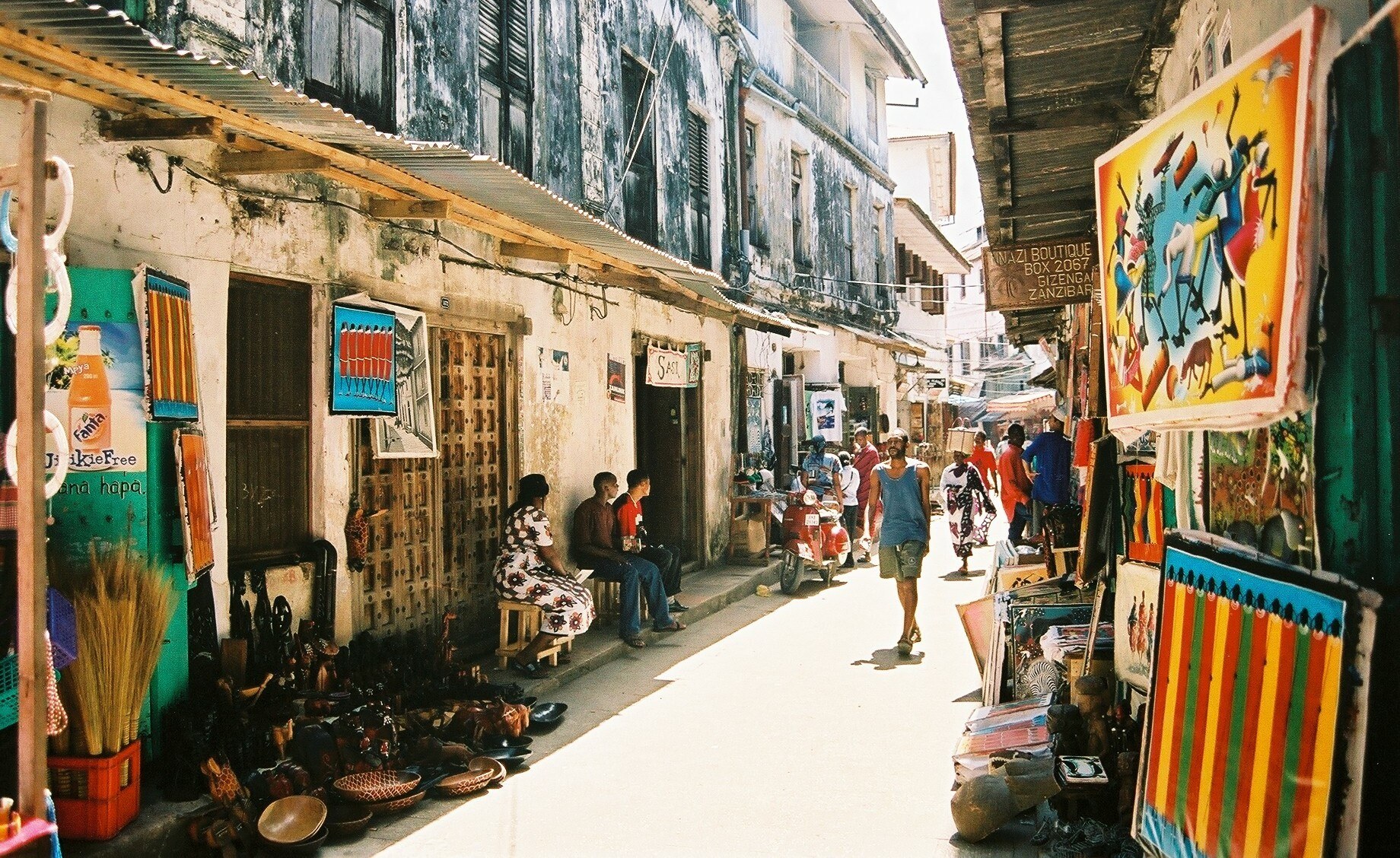
Stone Town is a cultural hub
The Sweet Zanzibar Life
Life in Zanzibar is centred around the ocean, agriculture and, in recent years, tourism. Fishing is an important local industry. Cloves and, recently, seaweed have been the main cash crops exported from Zanzibar.
Scuba diving, snorkelling and adrenaline-charged kitesurfing are popular watersports. The two monsoon seasons, namely, kaskazi and kusi in Kiswahili, sweep through the islands from March to May (the long rains) and November to December (the short rains), sandwiching the drier season.
Watching traditional dhows’ billowing sails silhouetted against the copper horizon is a rare, beautiful moment in time immortalised by amateur and professional photographers worldwide.
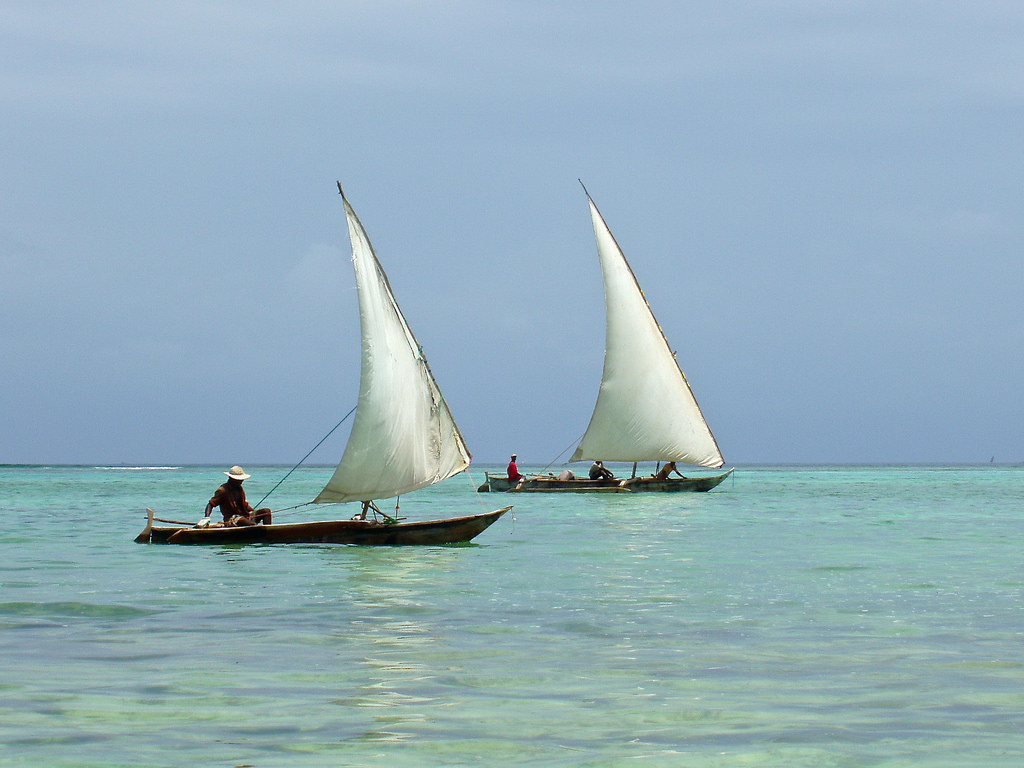
Dhows gliding across the ocean
Land and Marine Wildlife Galore
The Zanzibar Archipelago is home to a remarkable diversity of wildlife relative to its size. Zanzibar Island is known for the endemic red colobus monkey, inhabiting the Jozani Forest and the coastal mangrove swamps. Pemba’s flying fox, so called for its fox-like face, is a fruitbat with an impressive wingspan of 1.6 metres. Mafia Island attracts wallowing whale sharks to its hospitable waters and is lucky enough to have a resident population of these beauties.
Like a tropical decompression chamber, the islands are an idyllic, soul-soothing sequel to an action-packed East Africa safari.
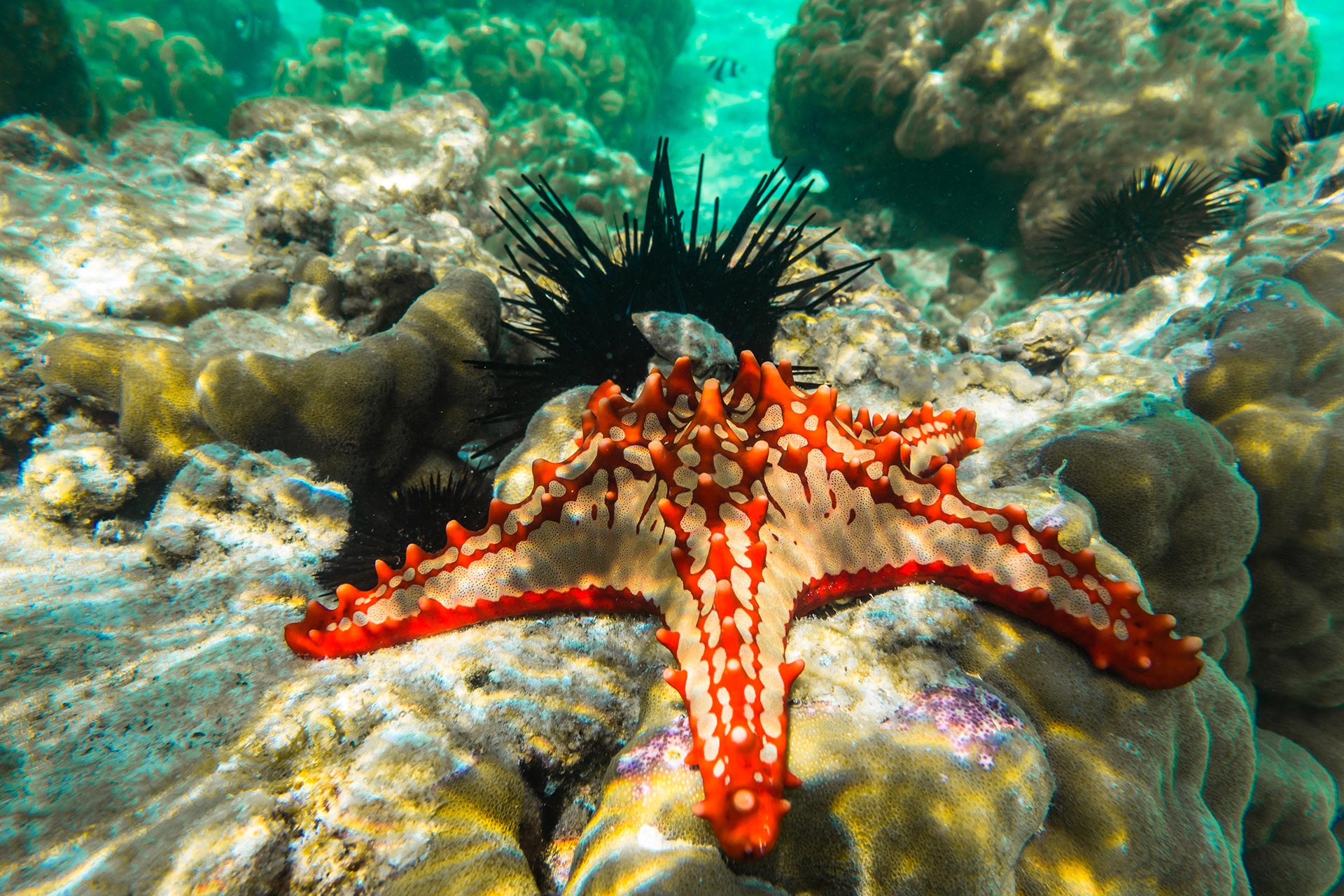
Red knobbed sea star and sea urchins in Zanzibar, Tanzania
Maasai Mara National Reserve, Kenya
Kenya, a familiar favourite safari destination in East Africa, brings all the enchantment of the “circle of life” and then some. Kenya’s “Simba safari” reputation was cemented by Hollywood’s “The Lion King”, inspired by Maasai Mara’s savannahs.
Nairobi is one of Africa’s most connected countries in cellular technology, located on the equatorial bow. This fascinating country is home to the revered Maasai Mara National Reserve, the namesake of the proud Maasai tribe; it plays an integral part in the Great Wildebeest Migration saga spanning the borders of Kenya and its southerly neighbour, Tanzania.
There’s a high probability of human-animal conflict in communities that co-exist with wild animals alongside national parks and conservancies. Since becoming aware of the declining population of lions, some Maasai tribes have shifted their initiation customs toward a conservation-led approach that no longer mandates a Maasai moran (warrior) to hunt a lion on foot.

The Maasai Mara is host to part of the Great Migration, Image Credit: Mara Bushtops Camp
The Land of a Thousand Hills, Rwanda
Rwanda, a lush landlocked country that has also found itself in Hollywood’s searchlight for acclaimed films such as the emotive “Gorillas in the Mist” and sobering “Hotel Rwanda”, has much to offer the politically aware, eco-curious traveller.
Today, a buoyant narrative eclipses the country’s complex past, encouraging the nation’s rebuilding through the transformational power of tourism.
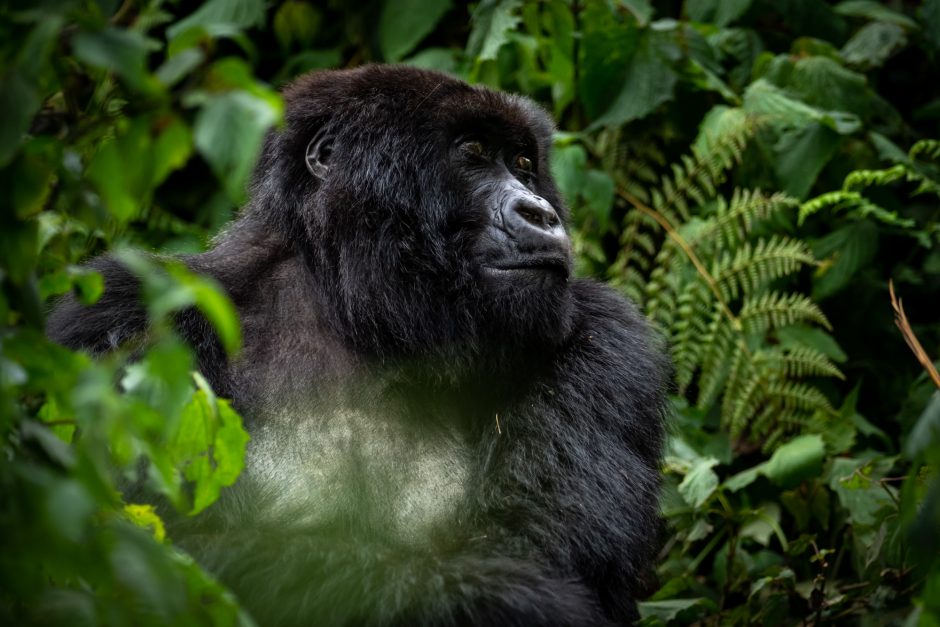
Gorilla trekking in Rwanda is an unparalleled experience, Image Credit: Singita
Volcanoes National Park is a drawcard for those wanting to observe mountain gorillas in their natural habitat. Before booking, consider your budget, fitness level and mobility requirements to decide the best trekking option to suit your needs.
Nyungwe Forest National Park offers a springboard to encounter humankind’s endearing primate cousin, the chimpanzee. The future-forward ban on plastic packets since 2008 sees Rwanda making trailblazing strides toward its commitment to a litter-free country.
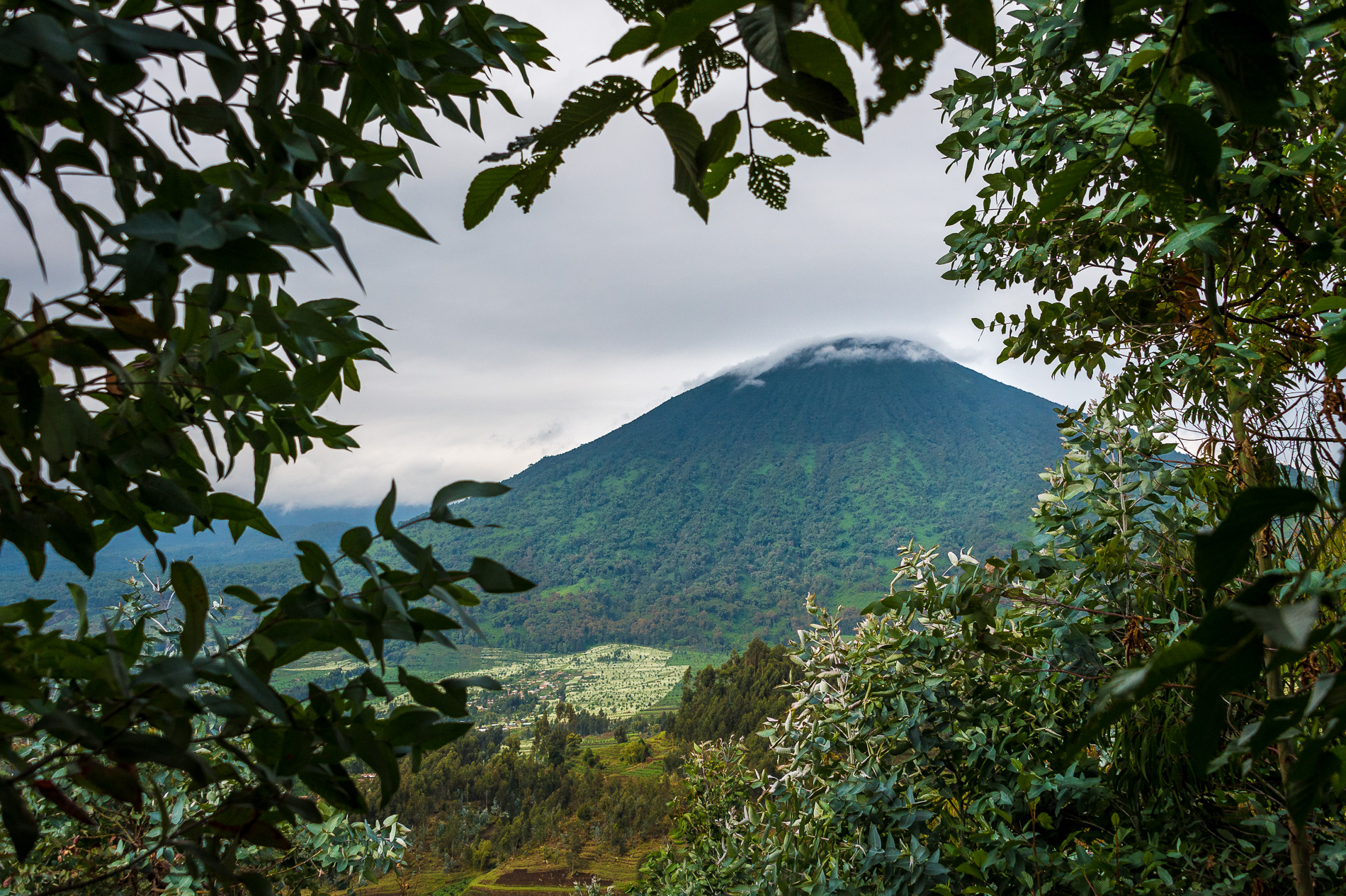
The misty mountains gorillas call home, Image Credit: Wilderness
Africa’s Amazon, Congo
Democratic Republic of Congo (DRC) became a member of the East African Community (EAC) in 2022. The country is famous for its vast, deep rivers and misty rainforests, home to forest elephants and primates. One of the most popular places is the Odzala-Kokoua National Park, recognised as a UNESCO Man and Biosphere Reserve.

The stunning landscapes of Odzala-Kokoua National Park, Image Credit: Odzala Discovery Camps
An Impactful East African Safari
Before planning your East African safari, consider how to make your trip count. Going on safari – the word is said to be derived from the Kiswahili, meaning “to journey” – is as much about connecting with yourself, those around you and new horizons as it is about escaping your daily grind.
Research the local customs before you go, and find out which grassroots community-led projects you can support there. Consider whether any wildlife encounter is rooted in responsible tourism practices that hold the welfare of the animals paramount.
Be a travel protagonist, tread lightly, leaving only footprints behind and taking great memories away. Contact Rhino Africa’s Travel Experts to start planning your own East African safari today, while leaving a lasting positive legacy on the continent.
